MPRD NEXT: ROOTED, GROWING & READY
Mooresville Parks & Recreation District
5-Year Master Plan




Mooresville Parks & Recreation District
5-Year Master Plan



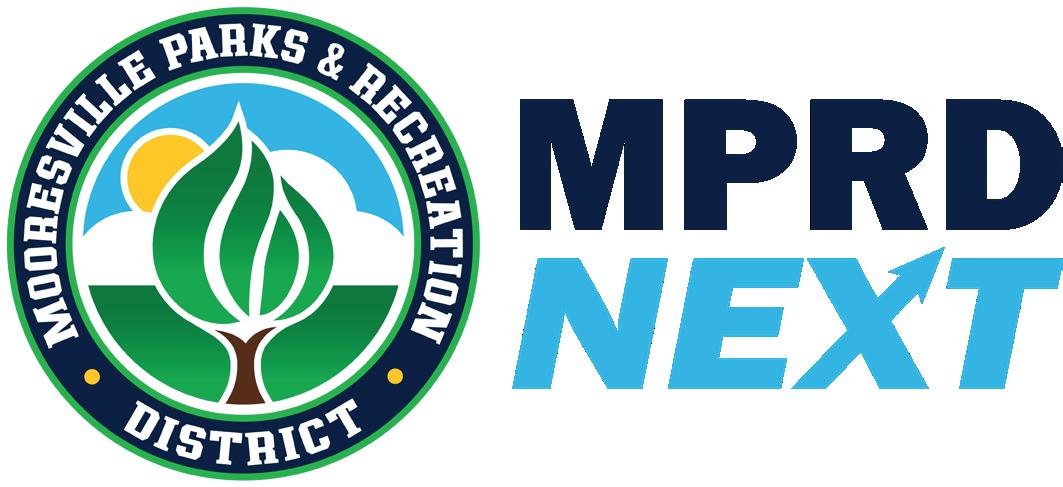
1101 Indianapolis Road
Mooresville, Indiana 46158 (317) 831-7149
mooresvilleparks.com
Introduction
Purpose + Goals of the Plan
1.0 INTRODUCTION 2.0 PARKS PROFILE
Planning Area Overview
Parks Department
Parks Board
Programs & Activities
Past Goals and Progress Made
Budget Review + Needs Assessment
3.0 CONTEXT
Natural Features + Landscape
Man-Made, Historical + Cultural Demographics + Economic Factors
Industry Trends
Community Benchmarks
Level of Service Analysis
Issues + Opportunities Summary
6.0 THE PLAN
Individual Parks Analysis + Recommendations
Vision + Goals
Strategic Objectives
Action Items
Capital Improvement Plan
Recreation Impact Fee
Strategic Implementation Matrix
7.0 ADOPTION APPENDIX
Accessibility + Universal Design 4.0 PUBLIC ENGAGEMENT 5.0 VISIONING
Overview
Stakeholder & Public Meetings
Public Input Survey Methodology & Results
Park Board Adoption Resolution
Over the last century, the Mooresville Parks and Recreation District (MPRD) has played a vital role in connecting the community to its natural environment, offering places for respite, recreation, and reflection. Through its stewardship of open spaces, trails, and public amenities, MPRD has helped preserve Mooresville’s small-town character while honoring its historic roots and managing natural resources with care.
Today, however, Mooresville is experiencing the growing impacts of development in neighboring communities and surrounding townships. As population growth accelerates just beyond the town’s borders, demand for parks and services continues to rise, often without the support of corresponding tax revenue. This presents a unique challenge: how can the Town continue to deliver highquality services and meet evolving recreation needs while maintaining financial sustainability? More importantly, how can Mooresville harness regional growth as an opportunity to enhance quality of life and community vitality, while embracing and highlighting its small town charm?
This 5-Year Parks Master Plan is intended to meet this moment. More than a static report, it will serve as a living document that can guide MPRD through evolving community needs, help secure eligibility for Indiana Department of Natural Resources (IDNR) and Land and Water Conservation Fund (LWCF) grants, and define a clear, shared vision for the future. Building on the foundation laid by the 2018-2023 MPRD Parks Master Plan, this planning effort incorporates new and updated data, lessons learned, and a renewed commitment to community engagement. Above all, this plan is driven by the values that shape MPRD’s work: inclusion, innovation, creativity, and growth. With these guiding principles, and the voices of Mooresville residents at the center of the process, this plan asks a timely and intentional question: What’s NEXT for Mooresville Parks and Recreation?
Introduction Purpose + Goals of the Plan Planning Process
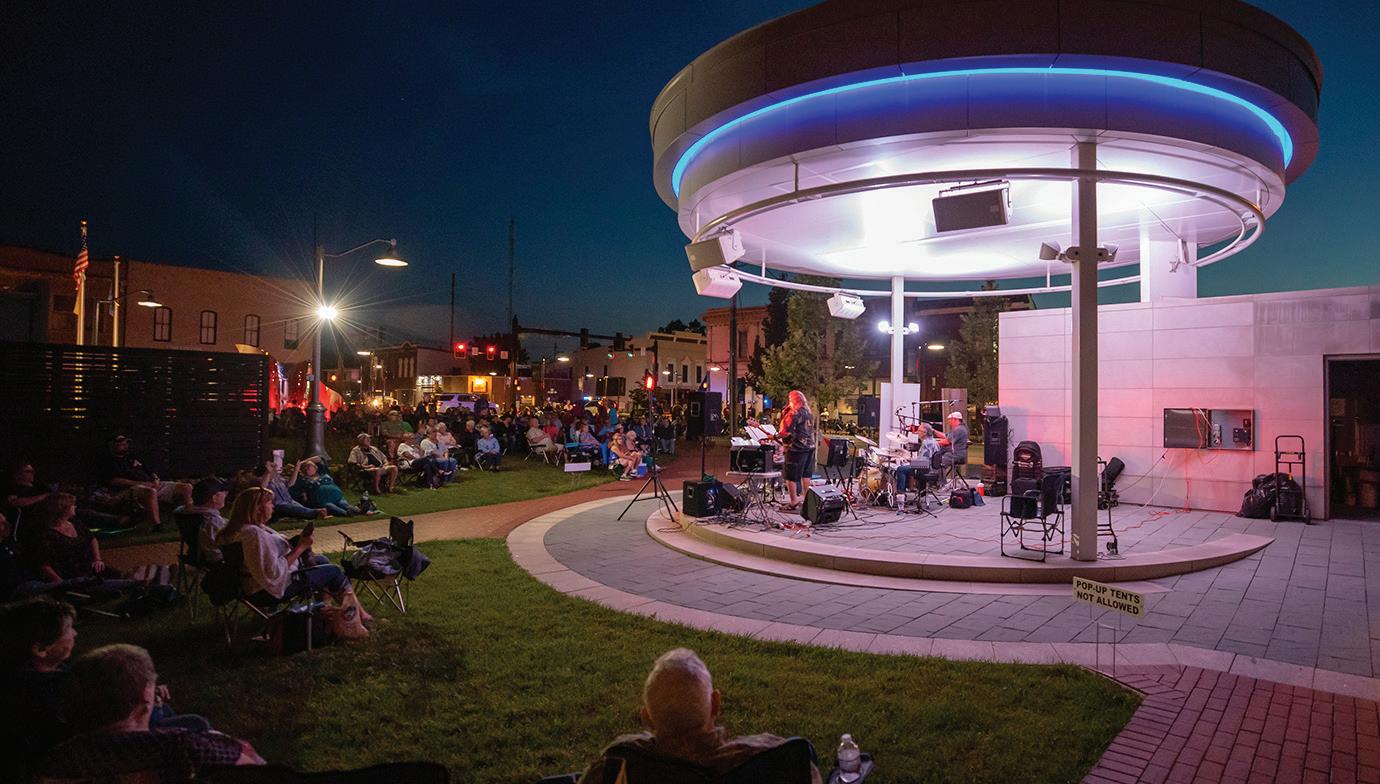
The purpose of this 5-Year Parks Master Plan is to establish a clear and actionable path for the continued growth, improvement, and stewardship of Mooresville’s parks and recreation system. As a foundational planning document, it is intended to guide decision-making across all levels of the Mooresville Parks and Recreation District (MPRD) - from capital investments and programming to maintenance and partnerships. It also serves to align the department’s future work with community priorities, available resources, and anticipated growth.
Beyond internal planning, this document strengthens MPRD’s position to advocate for parks as essential infrastructure, elevating their role in health, economic vitality, and environmental resilience. It formalizes the town’s eligibility for funding through programs such as the Land and Water Conservation Fund (LWCF) and Indiana Department of Natural Resources (IDNR) grants, while creating a framework for tracking progress and holding the department accountable to its mission and values.
Importantly, this plan also reflects the community’s voice - its hopes, concerns, and aspirations - and provides a unified vision for what the park system can and should be in the years to come. It is both practical and aspirational, ensuring Mooresville continues to grow with intention, remain rooted in its small-town charm, and expand access to high-quality parks and recreation opportunities for all.
This plan supports MPRD in:
• Meeting eligibility requirements for state and federal funding, including IDNR and the LWCF
• Creating a unified framework for capital improvements, operations, and programming over the next five years.
• Evolving from the 2018-2023 Master Plan through fresh insights and updated priorities.
• Grounding decisions in values that reflect the community’s expectations for inclusive and wellmaintained parks.
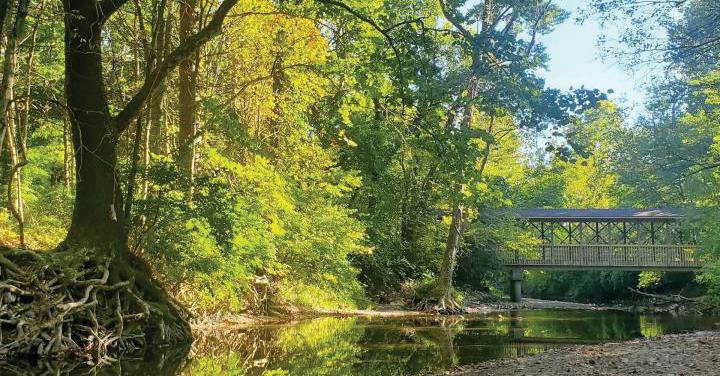
The plan also functions as a practical tool to help MPRD:
• Secure support from local leadership and regional partners.
• Strengthen grant applications and funding proposals.
• Make the case for parks as essential infrastructure tied to quality of life, health, and local economic development.
An equally important goal is building awareness - both internally of what MPRD offers, and externally to show why it matters. This plan helps to:
• Increase visibility and public understanding of the benefits of Mooresville’s park system.
• Encourage greater participation in MPRD programs, facilities, and events.
• Showcase how community feedback shaped this process, fostering local ownership and trust.
• Position Mooresville as a community that values wellness, environmental stewardship, and civic connection.
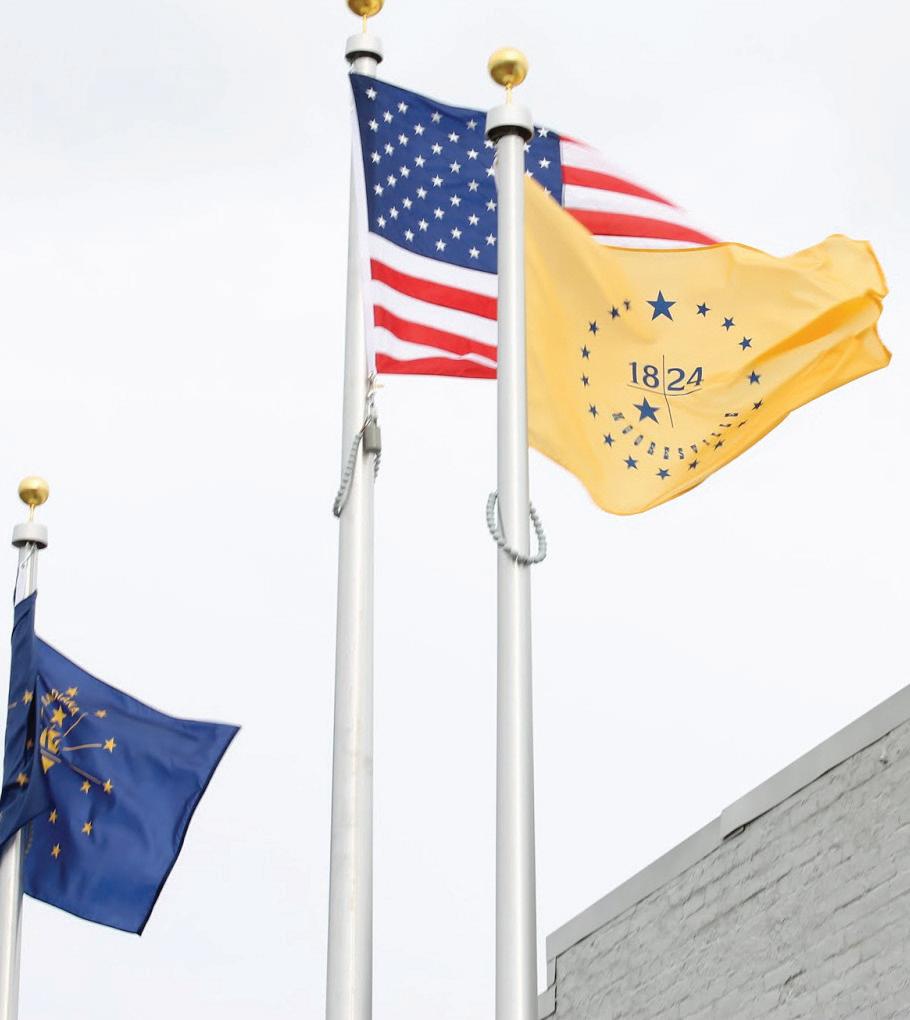
At its core, this 5-Year Parks Master Plan is about envisioning what comes next for Mooresville’s parks and public spacesnot just in terms of physical improvements, but in how those spaces reflect the heart of the community. The visioning goals of this plan look beyond immediate needs and aim to shape a parks system that evolves with Mooresville’s growth while staying rooted in its small-town character, shared values, and commitment to inclusion.
This vision calls for a network of parks and natural areas that are welcoming, resilient, and uniquely Mooresville - spaces that support wellness, foster connection, celebrate heritage, and reflect the landscapes and people of the community. It also acknowledges the town’s position within a rapidly growing region, emphasizing the need to plan intentionally so that parks continue to serve as anchors of identity, access, and equity.
Looking ahead, this plan seeks to preserve what residents already love about their parks - while preparing for the future with imagination, care, and purpose. The goal is not just to expand or improve parkland, but to cultivate spaces that residents of all ages, backgrounds, and abilities feel ownership of and pride in. These are the places where stories unfold, traditions continue, and community grows. Preserve what residents love most about Mooresville while preparing for thoughtful, balanced growth.
The development of the Mooresville 5-Year Parks Master Plan followed a comprehensive and communitycentered process, rooted in both technical analysis and robust public engagement. Guided by the Mooresville Parks and Recreation District (MPRD), the process was designed to provide a full picture of the existing parks system, identify community priorities, and develop clear and actionable recommendations for the next five years.
This process was structured around a series of strategic tasks, organized to discover, engage, plan, and deliver. Each phase built upon the last - ensuring the final plan reflects both the physical context of Mooresville’s park system and the voices of the people it serves. Issues and constraints are identified at the end of each section to highlight key points to address within the Plan.
A foundational component of the planning process was gaining a clear understanding of Mooresville’s current parks system within its broader community and physical context. This included inventory and analysis of MPRD-managed facilities, trails, and amenities, with assessments of their existing condition, accessibility, and functionality. GIS data and mapping tools were used to evaluate service areas, park distribution, and gaps in access to identify for geographically underserved neighborhoods.
Demographic data and community profiles were also analyzed to provide a clearer picture of who Mooresville is today. This included insights on population growth, age distribution, household income, and housing trends. Combined, these data points helped identify challenges and opportunities for future programming, capital investments, and general improvements to maintain or exceed level of service. The following maps were produced for this plan:
• Geographic/ Context Maps
• Parks Locations with Level of Service
• Inventory and Analysis Map of Each Park
ENGAGE: PUBLIC INPUT
Public input shaped every stage of this planning process. From the start, MPRD and the consultant team prioritized inclusive outreach that would reach both frequent park users and residents who might not engage with traditional planning methods.
Our engagement approach included:
• An online survey receiving over 600 from residents across Mooresville and Brown Township.
• Pop-up engagement at seasonal events, including the MPRD Easter Egg Hunt and other community gatherings, designed to meet people where they already were.
• One-on-one conversations, in-person intercept surveys, and digital outreach to gather open-ended feedback from a broad cross-section of the public.
• Ongoing meetings with Town leadership, MPRD staff, and key stakeholders to ensure the process remained aligned with community priorities, operational needs, and upcoming opportunities.
Through this engagement, MPRD heard from hundreds of individuals about their experiences in Mooresville’s parkswhat they value, what they hope to see improved, and what new amenities and programs would support their lifestyles. This input directly informed the plan’s goals, strategies, and capital improvement priorities.
As community input and system-wide data were synthesized, the planning team began identifying key issues, gaps in service, and areas of opportunity. Using a collaborative approach, MPRD staff and consultants worked to define short-, mid-, and long-term goals that reflect resident needs, facility conditions, and Mooresville’s broader growth trajectory.
The plan also considers emerging trends in parks and recreation - such as the importance of inclusive play, flexible multi-use spaces, sustainable design, and wellnessoriented programming - to ensure the Mooresville parks system evolves with the community. This phase included development of:
• Prioritized recommendations for facility upgrades, programming improvements, and new park development.
• Alignment strategies for equitable access, funding readiness, and regional connectivity.
• Draft implementation timelines with cost estimates and potential funding sources.
The final stages of the process focused on bringing all components together into a single, accessible, and forward-thinking document. Draft recommendations were reviewed with the advisory team, revised based on feedback, and presented for public review.
A public hearing was held to share the plan and gather final comments. Revisions were made to reflect community and stakeholder feedback, ensuring the plan is communityinformed and operationally realistic.
The result is a plan that reflects Mooresville’s values, aspirations, and identity - a practical and inspiring guide to lead MPRD into its next chapter of service and stewardship.
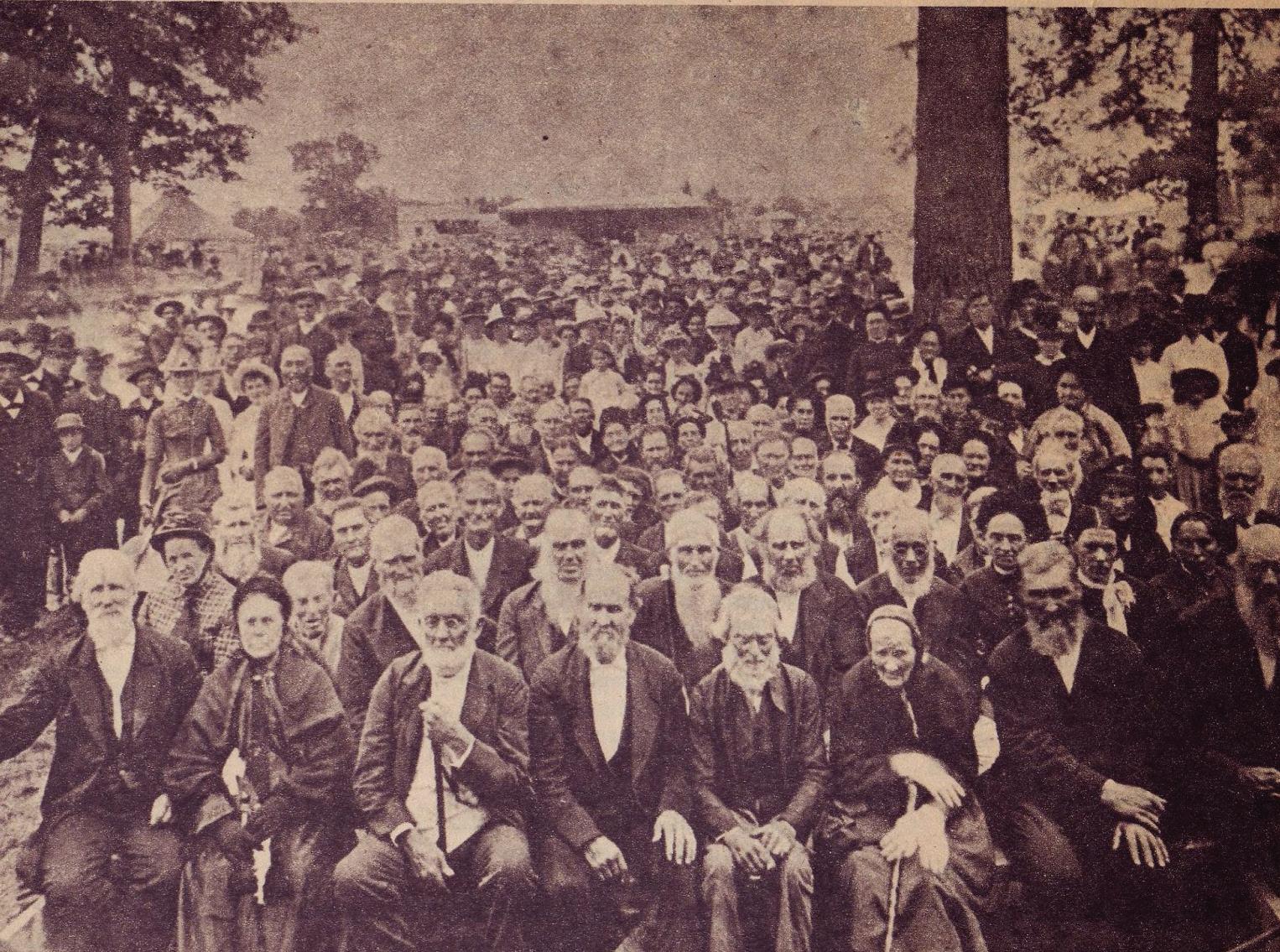
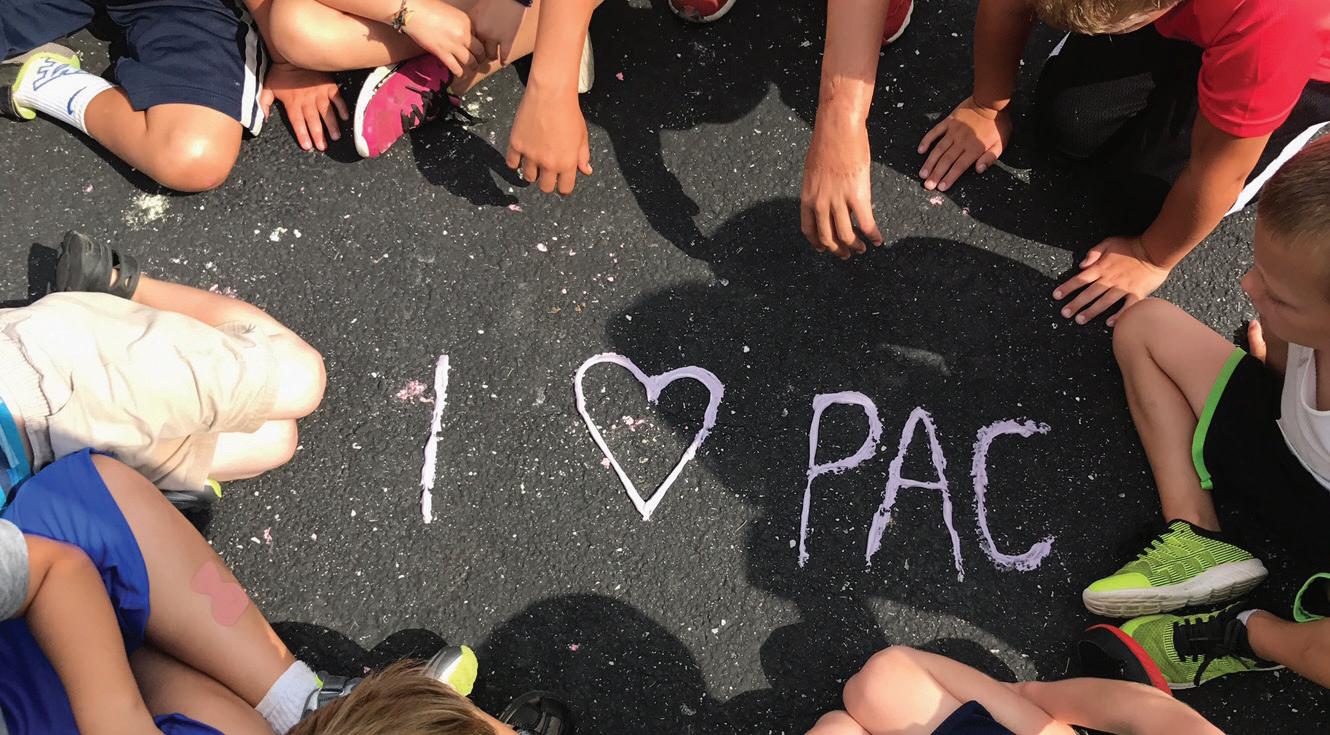
Located just 16 miles southwest of Indianapolis, the Town of Mooresville, Indiana, is a thriving small community of approximately 10,000 residents. Known affectionately as the “Home of the State Flag,” Mooresville takes great pride in its historic roots, community-centered culture, and intentional approach to growth. The Mooresville Parks and Recreation Department (MPRD) serves as a cornerstone of community life, supporting the well-being of residents through high-quality parks, recreational programming, and public events that promote connection and belonging.
The service area of the MPRD includes the Town of Mooresville and extends to residents of the surrounding Brown Township who utilize and participate in the town’s parks and programs. While MPRD’s facilities are located within the town’s municipal boundaries, its influence and community engagement reach beyond those borders, reflecting a broader service population and regional relevance., encompassing a network of parks, trails, facilities, and open spaces. These resources are central to the town’s identity and continue to shape its approach to community development. With a focus on small-town character and livability, Mooresville is guided by its 2023 Comprehensive Plan, which emphasizes strategic municipal growth, expanded access to services, and a vision for diverse housing, economic vitality, and multimodal transportation improvements.
MPRD manages several signature parks, including Pioneer Park, which spans 130 acres and functions as the town’s primary recreation and event space. Amenities include the Mooresville Family Aquatic Center, playgrounds, athletic fields, picnic shelters, and a trail network, offering year-round recreational opportunities for individuals and families. Parks like Bicentennial Park and Old Town Park add to the network of civic gathering spaces and reflect the town’s commitment to walkability, aesthetics, and heritage preservation.
The Mooresville Parks and Recreation District also delivers a wide array of programming and servicesfrom before- and after-school care to summer camps, youth sports leagues, and community-wide events such as the annual Fourth of July fireworks and Easter Egg Hunt. These offerings are tailored to meet the needs of residents across age groups and abilities and demonstrate MPRD’s role in strengthening the social fabric of the town.
Mooresville’s location, size, and adjacency to the Indianapolis metropolitan region position it at the intersection of suburban growth and rural preservation. As new development continues, particularly to the west near the planned I-70 interchange, Mooresville is actively exploring land use strategies that promote balanced expansion while protecting the values that define its identity. Park development is central to this vision, with the Town’s master planning process emphasizing park accessibility, trail connectivity, and equitable access to green space.
The MPRD’s mission - to maintain Mooresville’s smalltown character by providing high-quality parks, facilities, open/natural spaces, and services - reflects a commitment to inclusivity, creativity, growth, and innovation. These values guide the department in delivering services that support the physical, emotional, and social well-being of the community. As the town looks ahead to the next five years, investments in recreation infrastructure and programming will be essential to ensure Mooresville continues to offer a vibrant, connected, and inclusive park system that reflects the needs and aspirations of its residents.
The project area covered by this master plan encompasses all parks and recreation facilities maintained by MPRD and considers future parkland acquisition opportunities based on planned growth corridors, residential development projections, and regional connectivity goals. As such, the plan aims to serve both current residents and the anticipated growth population, ensuring that recreational amenities evolve alongside the Town’s changing landscape.
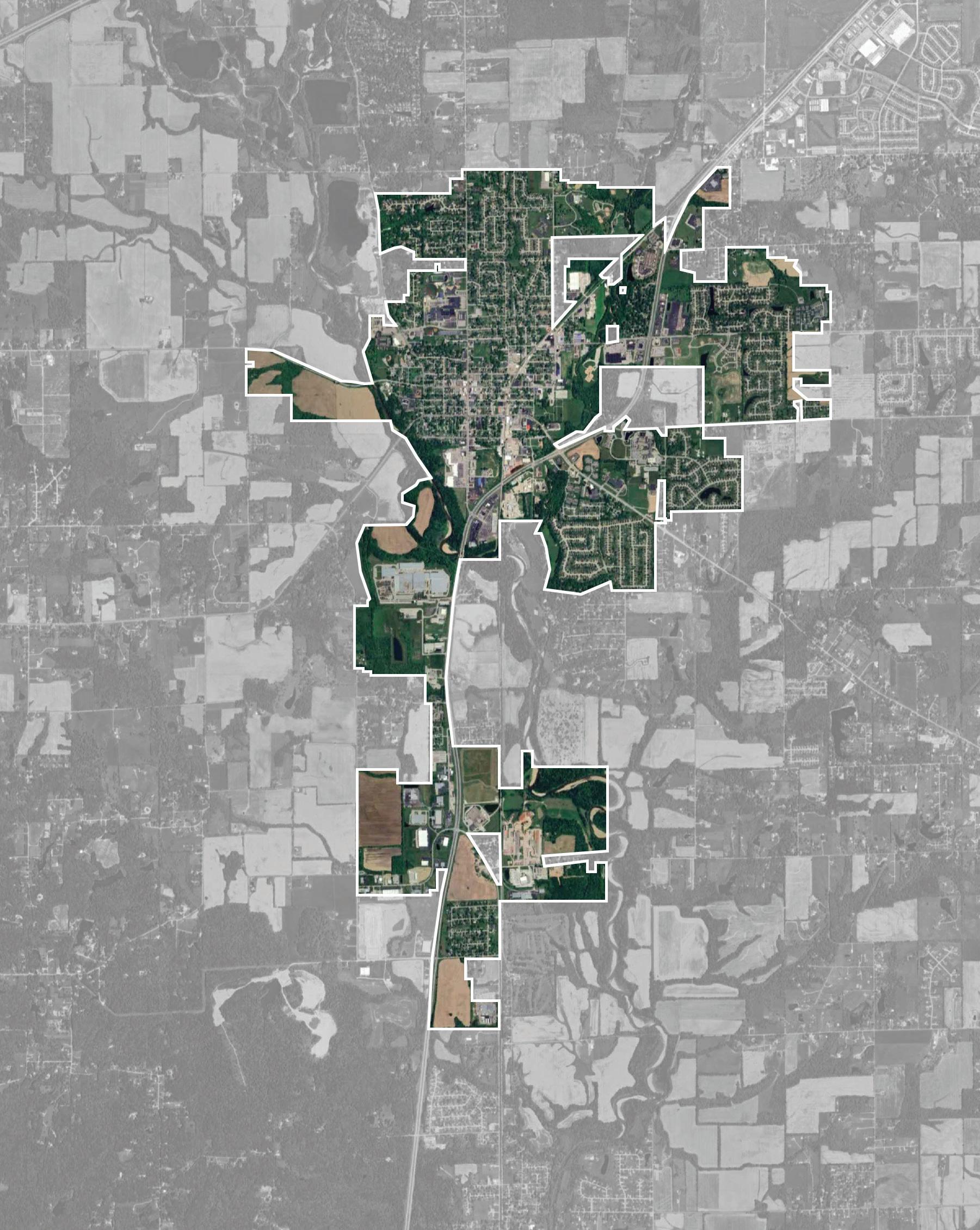
The Mooresville Park Advisory Board was established in May of 1922, and the Town Council appointed committees for one-year terms from 1940-1963. In 1963, the Park Board was established and in 1987, the Department of Park and Recreation was turned into a district including Brown Township. The Mooresville Parks and Recreation District (MPRD) has a rich history of serving the community’s recreational and programmatic needs.
Throughout MPRD’s five established parks - Pioneer Park, Bicentennial Park, North Park, Old Town Park, and Rooker Run Park - they are tasked with managing approximately 180 acres of park land and over 3 miles of trails. These parks feature playgrounds, walking trails, sports fields, and picnic shelters - catering to diverse recreation interests and needs.
A notable facility within the district is the Mooresville Family Aquatic Center, which includes a 150-foot waterslide, a zero-depth entry pool, a kiddie pool with a play area, and a splash pad. The center operates seasonally, with specific hours and admission fees, and offers swim lessons and private pool rentals.
MPRD also provides various programs and special events, particularly during the summer months, and collaborates with community organizations to offer year-round activities. The district emphasizes community involvement and encourages residents to participate in volunteer opportunities to support its mission.
Mooresville Parks and Recreation District
Main Office Address: 1101 Indianapolis Road Mooresville, Indiana 46158 (317)831-7149
www.mooresvilleparks.com
MPRD Staff: Philip Cornelius | Superintendent pcornelius@parks.mooresville.in.gov
Keelan Simpson | Assistant Superintendent ksimpson@parks.mooresville.in.gov
Morgan Wilkens | Maintenance Supervisor mwilkens@parks.mooresville.in.gov
Stacy Freeman | Office Manager sfreeman@parks.mooresville.in.gov
Talesha Freidenfelt | Recreation & Camp Coordinator tfreidenfelt@parks.mooresville.in.gov
Dan Luedeman | Maintenance Technician dluedeman@parks.mooresville.in.gov
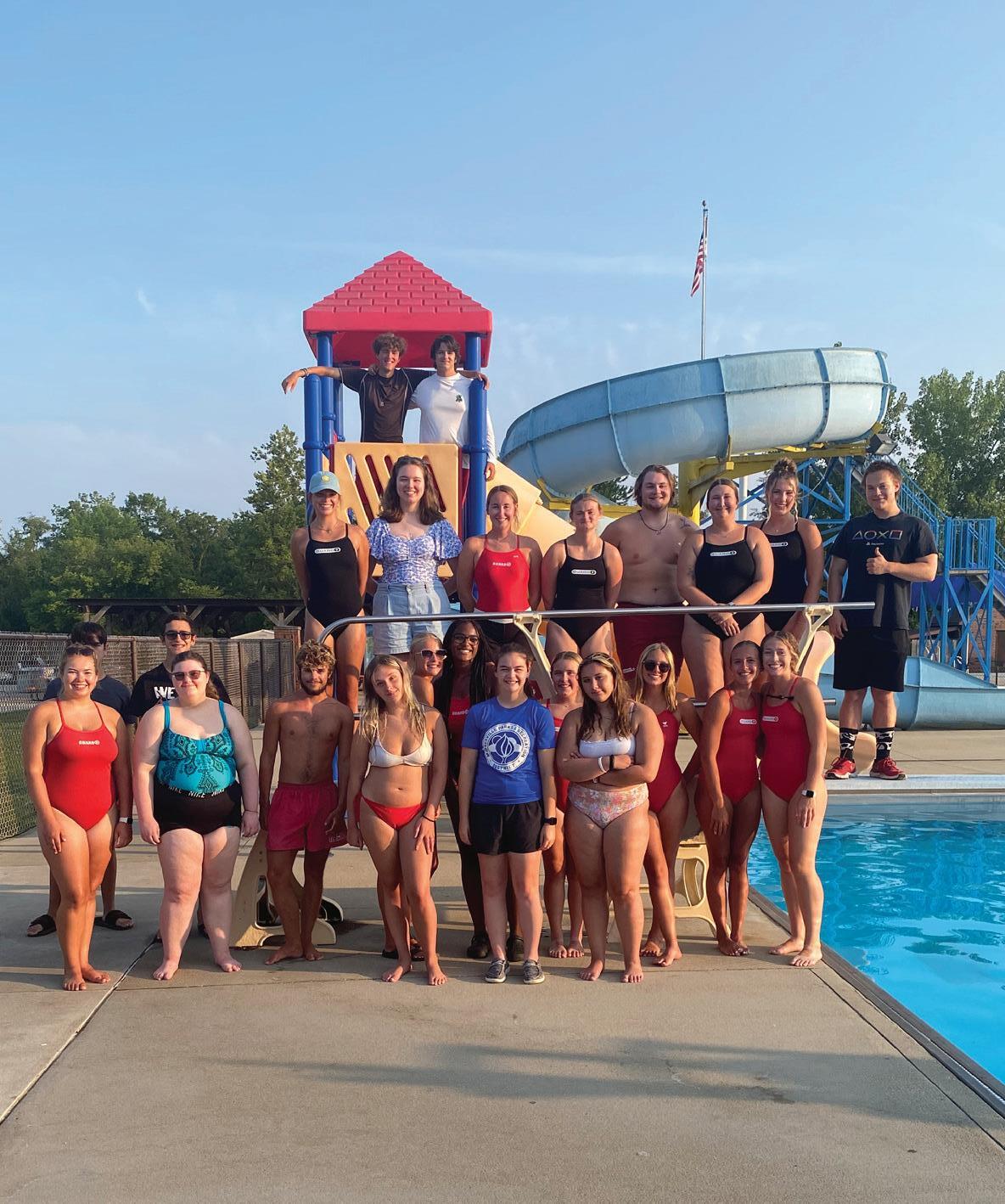
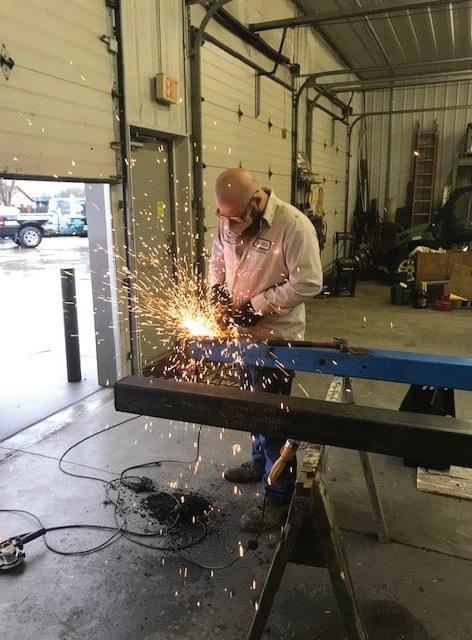
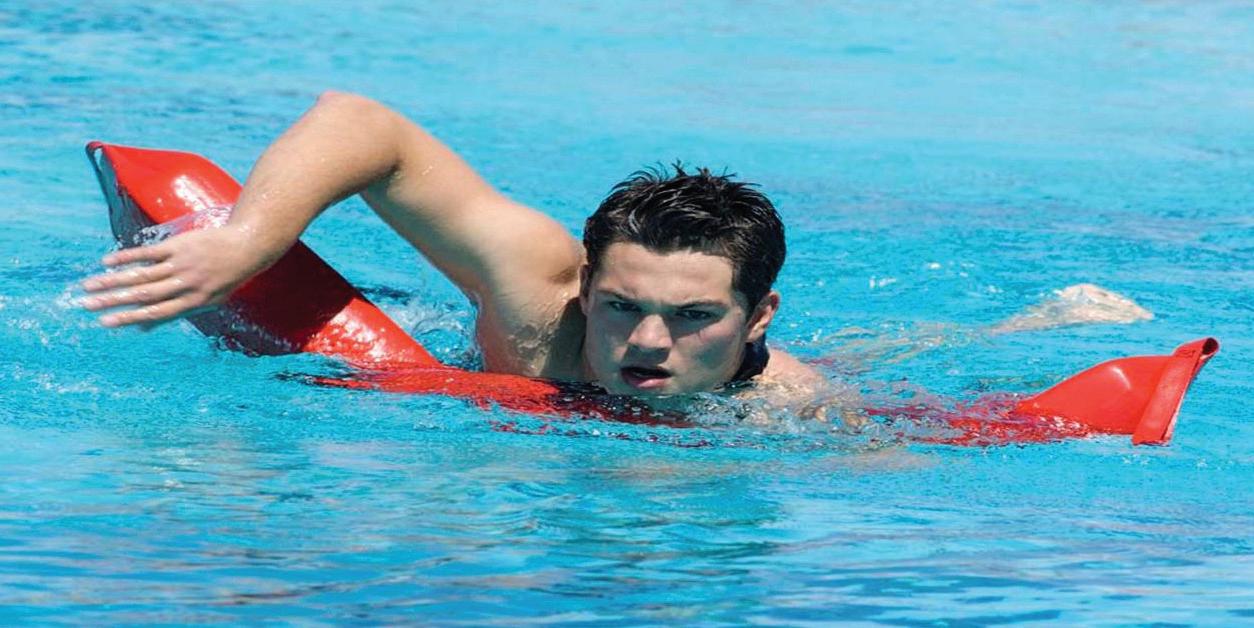
The mission of the MPRD is to provide and maintain a small-town character through quality parks, facilities, open/natural space, programs and services which will enhance the physical, social, and emotional well-being of all the citizens of Mooresville and Brown Township in Indiana.
To be the preferred destination for community recreation and wellness.
We work together as a team to benefit our community. We pledge to serve our community and each other by living our core values: Inclusion, Creativity, Growth & Innovation:
Inclusion - Providing equal access to community resources, programs, and park facilities for everyone in Mooresville - but particularly those who might otherwise be excluded or marginalized, such as those who are physically or intellectually differently-abled, those with financial or acess burdens, and members of other under-represented groups.
Creativity - MPRD offers imaginative and original ideas, experiences, and places that aim to delight the users of our parks and facilities.
Growth - MPRD supports community growth by maintaining excellent levels of services compared to our peer communities - while also striving to offer consistently excellent programming and park facilities.
Innovation - MPRD works to address challenges, leverage existing community capacities, and incorporate new opportunities by providing new and better solutions.
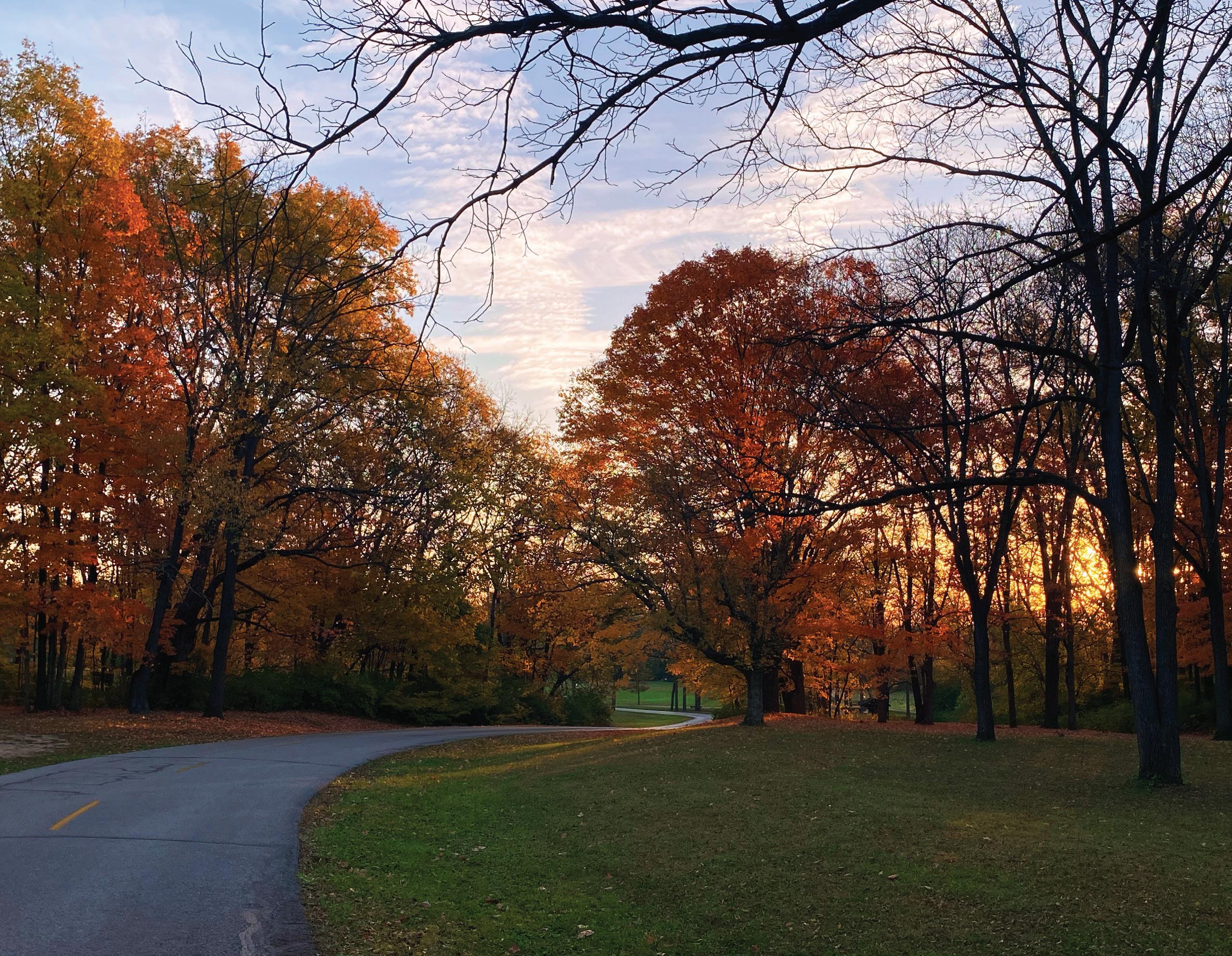
MPRD Board Members:
Matt Saner | President | 1-Year Term
Appointed by School Board, until 12/31/2025
Mark Taylor | Vice President | 4-Year Term
Republican - Appointed by President of Town Council, until 12/31/2028
Danny Shaw | Secretary | 4-Year Term
Democrat - Appointed by President of Town Council, until 12/31/2027
Brett Callahan | Member | 4-Year Term
Republican - Appointed by President of Town Council, until 12/31/2026
Danny Lundy | Member | 4-Year Term
Libertarian - Appointed by President of Town Council, until 12/31/2026
Lynn Adams | Member | 1-Year Term
Appointed by Library Board, until 12/31/2025
BJ Bungard | Member | 4-Year Term
Appointed from Buffer Zone - Morgan Circuit Court Judge, until 12/31/2026

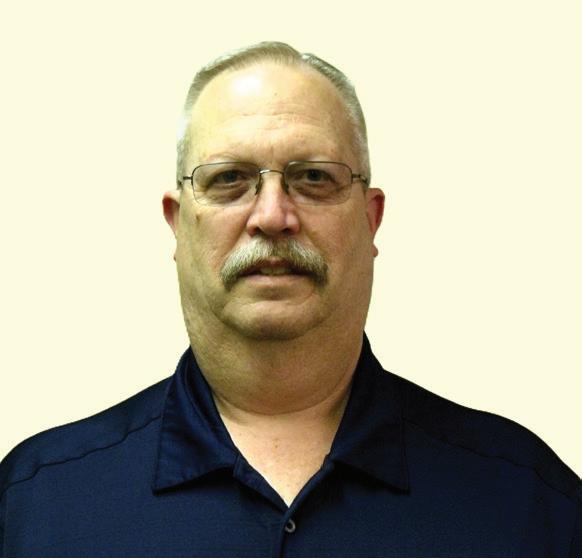

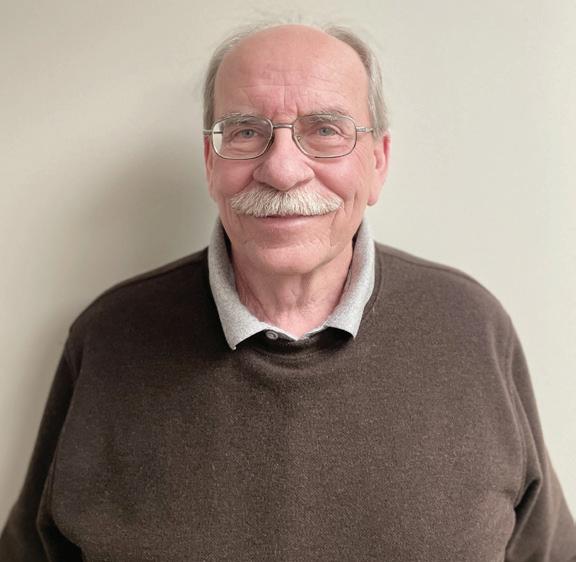
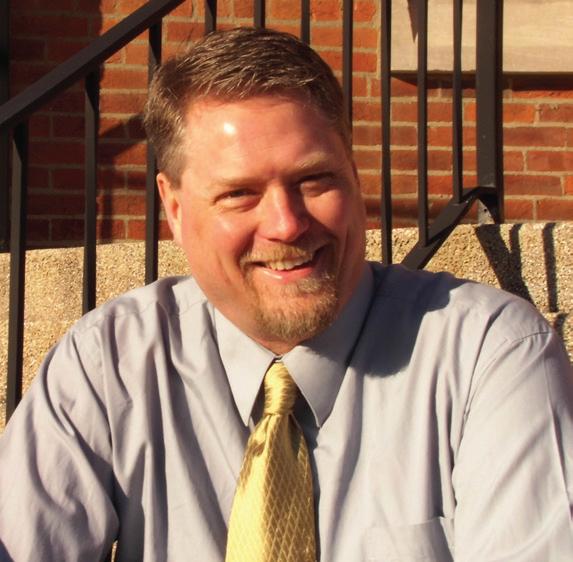
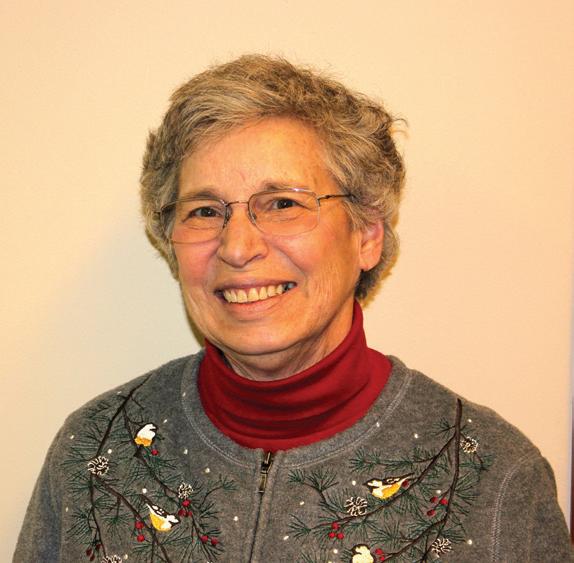
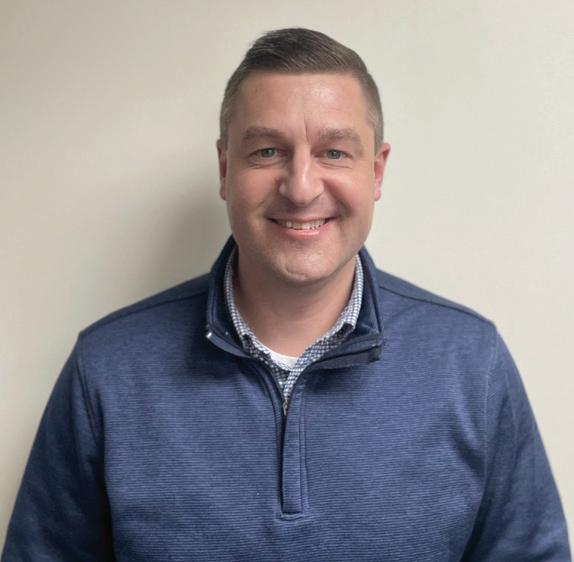
The MPRD offers a wide array of programs and activities that cater to all ages, fostering a sense of community and enhancing residents’ quality of life. Through aquatic programs at the Mooresville Family Aquatic Center, children build water safety skills while having fun. Seasonal youth camps and the REC&U before-and-afterschool program keep kids engaged with enrichment activities and recreation, supporting working families. Community members can explore creativity in art and enrichment classes, participate in unique offerings like “Letters from Santa,” or enjoy special events such as concerts and seasonal celebrations that bring people together. These programs are valued for their ability to
create meaningful connections, encourage healthy lifestyles, and reflect the evolving needs and interests of Mooresville’s residents. By investing in diverse opportunities, MPRD plays a key role in building a vibrant, inclusive community.
MPRD’s aquatic offerings at the Mooresville Family Aquatic Center cater to all ages with daily admission, season passes, and swim lessons. Programs such as Water Babies, Tadpoles, and Junior Lifeguarding ensure accessibility and skillbuilding from infancy to adolescence. Affordable season passes and specialized programs, like introductory diving, encourage residents and visitors to embrace water safety, recreation, and fun.
MPRD supports families with seasonal camps and beforeand-after-school care. REC&U provides a structured, safe environment for children during the school year, while Spring, Fall, and Winter Break Camps keep kids active during vacations. Specialty offerings like Little Picasso and Little Athletes nurture creativity and physical activity for younger children, ensuring fun and meaningful engagement year-round. MPRD also offers opportunities for youth enrichment, with programs like Safe Sitter Training, where kids and teens can benefit from practical skills training, creative outlets, and recreation. These programs are designed to foster growth, independence, and discovery, creating opportunities for children to learn, explore, and thrive in a supportive environment.
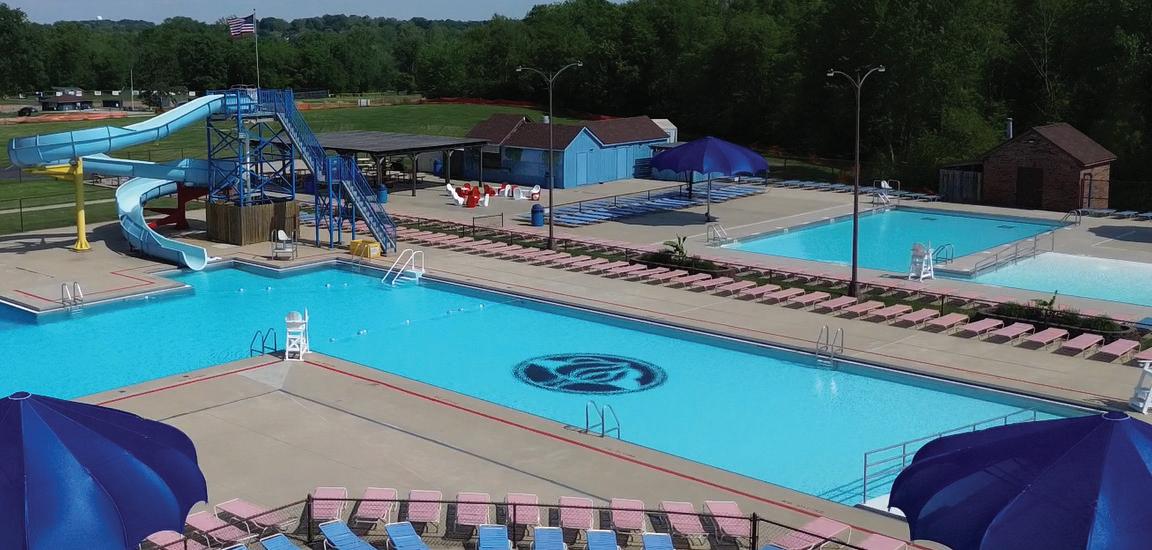
Signature events bring the community together for free and low-cost celebrations. Residents enjoy traditions such as the Easter Egg Hunt, Summer Concert Series, and Christmas Tree Lighting, while newer offerings like Flashlight Candy Cane Hunts and parent-child dances foster unique, memorable experiences. These events reflect MPRD’s commitment to cultivating connection and celebration within the community, while also honoring the Town’s rich history and legacy.
Through simple yet impactful initiatives like the Pioneer Pathfinders Walking Group and Letters from Santa, MPRD emphasizes fostering community connections. Larger events like the Old Settlers Festival and 4th of July Fireworks & Concert offer opportunities for residents to connect, celebrate traditions, and stay active, creating a sense of belonging and inclusion.
MPRD’s well-maintained facilities provide ideal spaces for gatherings and celebrations. Pioneer Park shelters and the Mooresville Family Aquatic Center are available for private events, with options ranging from casual rentals to themed birthday party packages. These spaces allow the community to make personal milestones even more memorable.
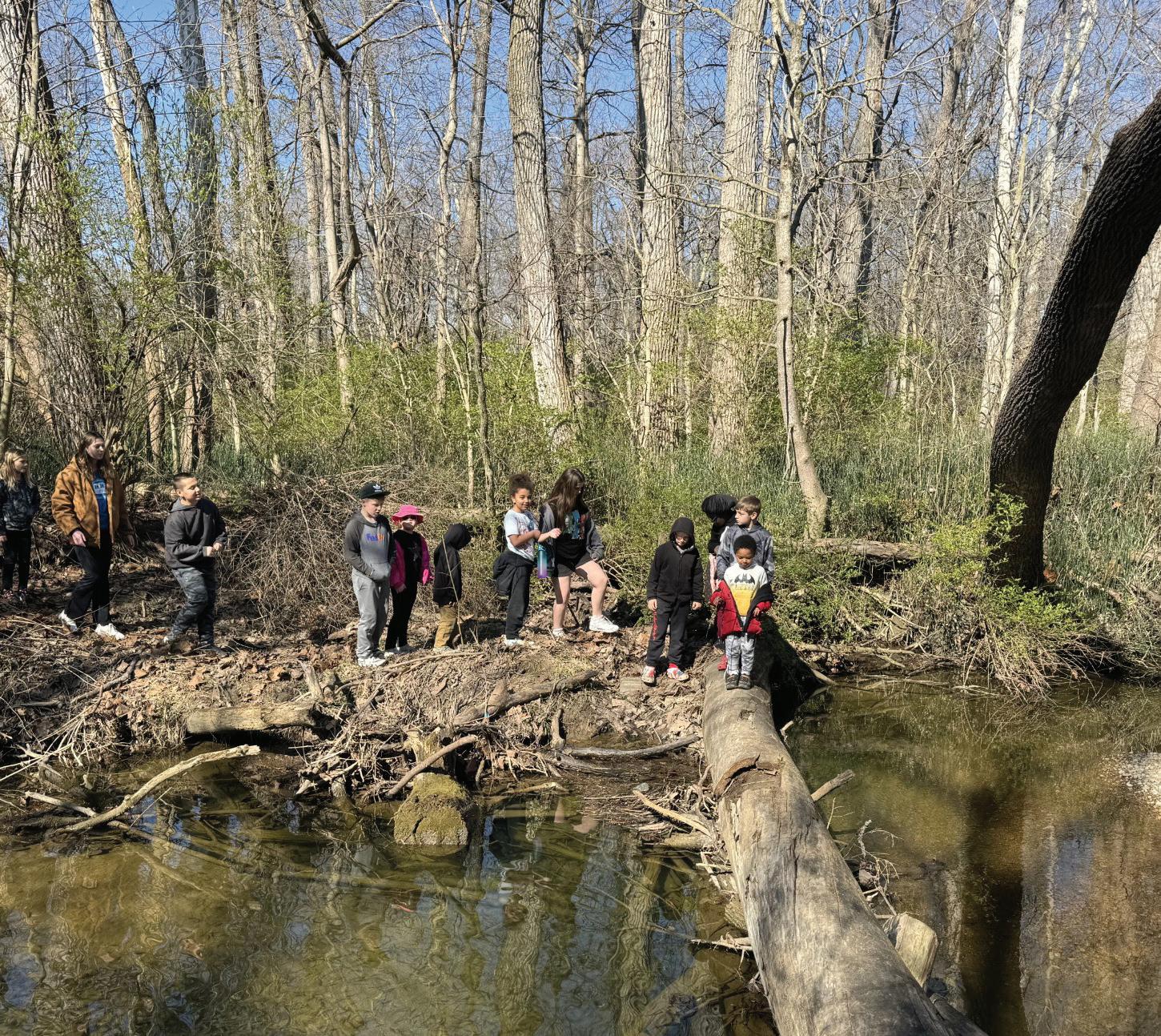
2019
Revenue: $ 991,806.00 (Operating)
$ 651,156.00 (Non-Reverting)
Total Revenue: $ 1,642,962.00
Expenses: $ 978,211.00 (Operating)
$ 1,031,603.00 (Non-Reverting)
Total Expenses: $ 2,009,814.00
2020
Revenue: $ 917,256.00 (Operating)
$ 379,644.00 (Non-Reverting)
Total Revenue: $ 1,296,900.00
Expenses: $ 876,177.00 (Operating)
$ 435,040.00 (Non-Reverting)
Total Expenses: $ 1,311,217.00
2021
Revenue: $ 1,025, 676.00 (Operating)
$ 542,392.00 (Non-Reverting)
Total Revenue: $ 1,568,068.00
Expenses: $ 979,233.00 (Operating)
$ 389,716.00 (Non-Reverting)
Total Expenses: $ 1,368,949.00
Over the past five years, the MPRD has managed a diversified budget across operating, non-reverting, and special-use funds. The General Fund, which represents core operating revenues from tax distributions and program-based income (e.g., pool, shelter rentals), has shown a steady increase in revenue year over year, with annual income rising from approximately $1.0 million in 2019 to projections surpassing $1.2 million by 2025. Despite fluctuations due to pandemic-related impacts in 2020, the department quickly rebounded, demonstrating fiscal resilience.
The Non-Reverting Fund, which is essential for capturing revenue from programs like concessions, pavilion maintenance, and special events, has similarly
2022
Revenue: $ 1,121,081.00 (Operating)
$ 593,280.00 (Non-Reverting)
Total Revenue: $ 1,714,361.00 Expenses: $ 1,039,083.00 (Operating)
$ 414,545.00 (Non-Reverting)
Total Expenses: $ 1,453,628.00
2023
Revenue: $ 1,104,294.00 (Operating)
$ 655,471.00 (Non-Reverting)
Total Revenue: $ 1,759,765.00
Expenses: $ 1,070,256.00 (Operating)
$ 779,017.00 (Non-Reverting)
Total Expenses: $ 1,849,273.00
2024
Revenue: $ 1,129,306.00 (Operating)
$ 805,726.00 (Non-Reverting)
Total Revenue: $ 1,935,032.00
Expenses: $ 1,238,987.00 (Operating)
$ 762,851.00 (Non-Reverting)
Total Expenses: $ 2,001,838.00
grown. Beginning with a balance of $860,128.12 in 2021, this fund is projected to exceed $1.4 million by 2029, reflecting expanded program offerings and steady community participation. These funds are particularly crucial for sustaining operations without the risk of losing end-of-year balances, offering flexibility in programming and staffing needs.
The Revenue vs. Expense Analysis further reveals the consistent performance of MPRD’s most popular programs.
Pool admissions, swim lessons, camp programs, and shelter rentals remain high-performing categories. Notably, revenue from non-reverting activities like swim lessons and recreational camps has steadily increased, confirming their value to the community and their role in MPRD’s financial
MPRD has also benefited from grant reimbursements and local donations, including the Park Donation Fund and Capital NR Fund, though these are less consistent and typically tied to special projects. Efforts should be made to expand partnerships and pursue state/federal grants like the LWCF and Indiana’s IDNR grant programs to stabilize capital investment funding.
Despite these strengths, Mooresville’s parks system continues to face key funding challenges:
• While flexible, the non-reverting fund is tied directly to program success. Any disruptions (e.g., weather, pandemic, staffing shortages) could impact this vital source of revenue, especially for youth programs and events.
• Capital investment cycles remain highly dependent on external funding and periodic appropriations rather than a dedicated long-term revenue stream.
• Maintenance, staffing, and utility expenses are growing as the park system expands. Without proportional revenue increases, this could strain existing services and delay necessary repairs or upgrades.
• General fund and non-reverting revenues are trending upward, providing a solid foundation to plan modest expansion of programs, staff, and maintenance.
• High participation in pool admissions, shelter rentals, and camps shows consistent community interest and value, offering a strong base for strategic reinvestment.
• Potential for Grant Funding: By aligning with the LWCF, IDNR, and regional initiatives, MPRD can position itself competitively for grant dollars to fund trails, accessibility upgrades, and facility improvements.
• Implementing a structured recreation impact fee tied to new residential development would provide a sustainable, equitable funding stream for capital improvements.
• Public–Private Partnerships: Leveraging relationships with local employers, health providers, and community foundations could bring new funding streams or sponsorships for targeted amenities or programming.
• Continued expansion of non-reverting program offerings.
• Strategic use of impact fees and development partnerships tied to new growth.
• Aggressive pursuit of IDNR and federal matching grants.
• Exploring a dedicated capital reserve fund or bond strategy to support long-range improvements.
In 2019, Mooresville adopted the 2019-2023 Parks Master Plan to advance a strategic vision for its parks and recreation system. Over the past five years, Mooresville has made steady progress in implementing this plan, addressing critical needs while adapting to unforeseen challenges such as the COVID-19 pandemic and shifting community priorities. The primary goals were centered on capital improvements, administration, programming, maintenance, and community partnerships - serving as a solid foundation for this new Master Plan.
Expand and improve existing trails, facilities, and sites to better serve the Mooresville community.
i. No expansion of trails has occured since 2018 -- all 3.1 existing miles of trails at Pioneer Park were seal coated in Spring/ Summer of 2024.
ii. All shelter structures were re-roofed in 2018-2019 after storm damage.
iii. New playground was installed at Old Town Park in Spring of 2024, and another playground received upgraded play surface in 2021.
iv. 4.2 Acres of land was purchased in 2019 and split between two parcels of land to expand existing parkland.
v. Old Town Park received a pre-fabricated restroom facility in Summer of 2023.
Goal #2
Actions:
Study current programming, facility and staffing needs; analyze and update user fees and funding sources; and improve public outreach and presence for the Town.
vi. Park Board has enacted a policy on acceptance of donations and in-kind services to help facilitate this process.
vii. User fees for group events is evaluated and adjusted accordingly as an annual practice.
viii. Although the Parks Department website has not been updated and improved, the social media presence and engagement has increased since 2018, allowing for improved outreach and awareness.
ix. Staffing has been expanded, however, due to budget limitations and increased level of service, more staffing is still necessary and a priority for maintaining and growing operations.
Analyze current programming and services, and make necessary changes to improve efficiency, revenue, and user satisfaction through all age groups.
x. MPRD determined that there were no clear action steps for staff to implement this goal, and through the COVID pandemic and changing needs of the community, MPRD has since cut back on the quantity of programming to improve the quality and better reflect the community.
Goal #4 - Equipment & Maintenance Needs/ Actions:
Create a Maintenance and Replacement Schedule for fleet vehicles and maintenance equipment, prioritizing necessary improvements.
xi. Three (3) new trucks were ordered and received in 2021 to add to the MPRD fleet of vehicles.
xii. Maintenance and Replacement Schedule plan is in progress.
Goal #5 - Creative & Engagement Needs/ Actions:
Pursue and establish strong partnerships with allied organizations and municipalities to create more opportunities for funding and resource sharing.
xiii. Although MPRD has established and continues to pursue stronger relationships with schools and potential partners or donors, no measurable actions were identified to help track the progress for this goal.
• While trail connectivity was a top priority in the previous plan, no trail mileage was added during the five-year period. This signals a persistent gap in system-wide connectivity and a need for greater focus on partnerships, land acquisition, or grant opportunities to move forward.
• The plan aimed to improve program quality and reach across all age groups. However, there was no implementation roadmap, and MPRD scaled back programming due to pandemic challenges and changing community needs. This left a void in strategic recreation planning and limited innovation in program offerings.
• Although some policy and fee structures have been implemented and evaluated annually, foundational administrative tools - such as an updated website, formalized staffing plans, or comprehensive public engagement strategies - remain underdeveloped. Communication and transparency could be improved through consistent digital presence and stronger data tracking.
• Partnerships with schools and local organizations have been explored, but no measurable metrics or tracking systems were put in place to evaluate the impact or strength of these collaborations. Without formal agreements or shared goals, partnership potential remains underutilized.
• While staff numbers have increased, it has not kept pace with the rising level of service expectations. A sustainable staffing and funding model has yet to be fully realized, and recruitment and retention continue to be significant challenges.
• Despite limitations, key capital improvements were made - including the new playgrounds, parkland acquisition, roof replacements, and accessible restroom installation. This demonstrates Mooresville’s commitment to reinvesting in its assets and signals readiness for future grant and donor support.
• The shift from quantity to quality in programming shows thoughtful responsiveness to community needs. This creates an opening to develop fewer, but more tailored, impactful programs - especially for multigenerational users and underserved groups.
• Even without website upgrades, MPRD has significantly grown its digital presence through social media. This is a valuable foundation to build a broader outreach and communications strategy, and engage new, younger, and more diverse audiences.
• Investment in vehicles and a maintenance plan in progress represent important operational foundations. These improvements should be further supported by a formalized maintenance and asset management strategy to extend the life of facilities and improve service reliability.
• The success of capital projects like Old Town Park and playground upgrades shows public enthusiasm for visible, high-quality investments. These successes can be leveraged for public buy-in, fundraising, and volunteerism in future projects.
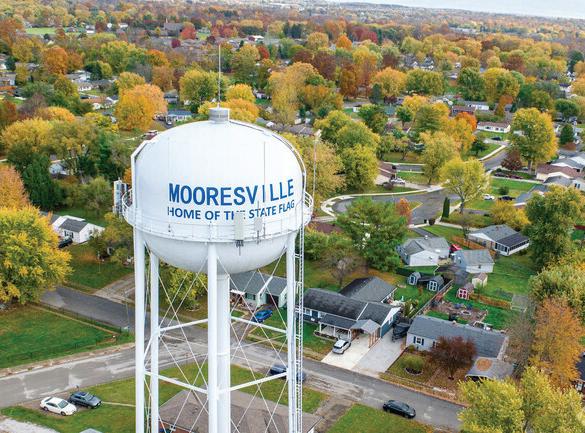
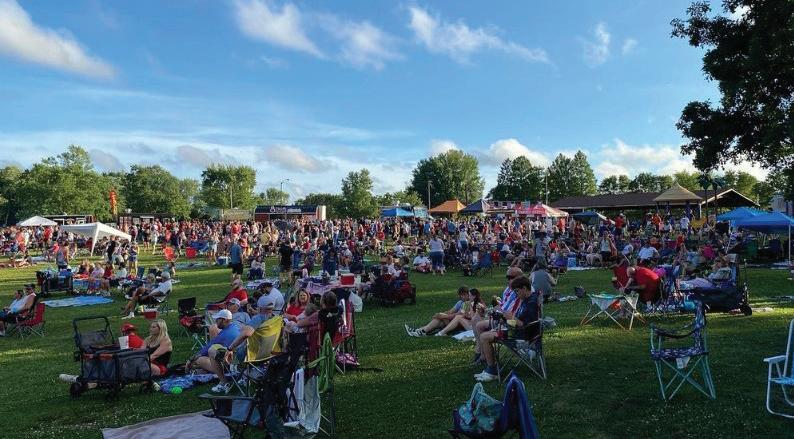
Mooresville’s identity is deeply tied to its natural environment. From its gently rolling topography and hardwood forests to its creeks, wetlands, and open skies, the land itself plays a vital role in shaping how residents move through and experience the community. These natural systems - both visible and underground - set the stage for how parks are designed, how infrastructure functions, and how people connect with nature. This chapter explores the foundational ecological and physical conditions that influence this planning effort. It provides an overview of the town’s climate, geography, soils, water systems, native wildlife, and the growing presence of invasive species. Together, these elements help define both the opportunities and limitations for park development and long-term environmental stewardship.
Understanding these natural features isn’t just a technical exercise - it’s a critical part of designing and managing parks that are resilient, place-based, and deeply rooted in the landscape. By aligning recreational planning with natural systems, MPRD can enhance environmental performance, reduce long-term maintenance costs, and provide more meaningful, connected experiences for the people of Mooresville.
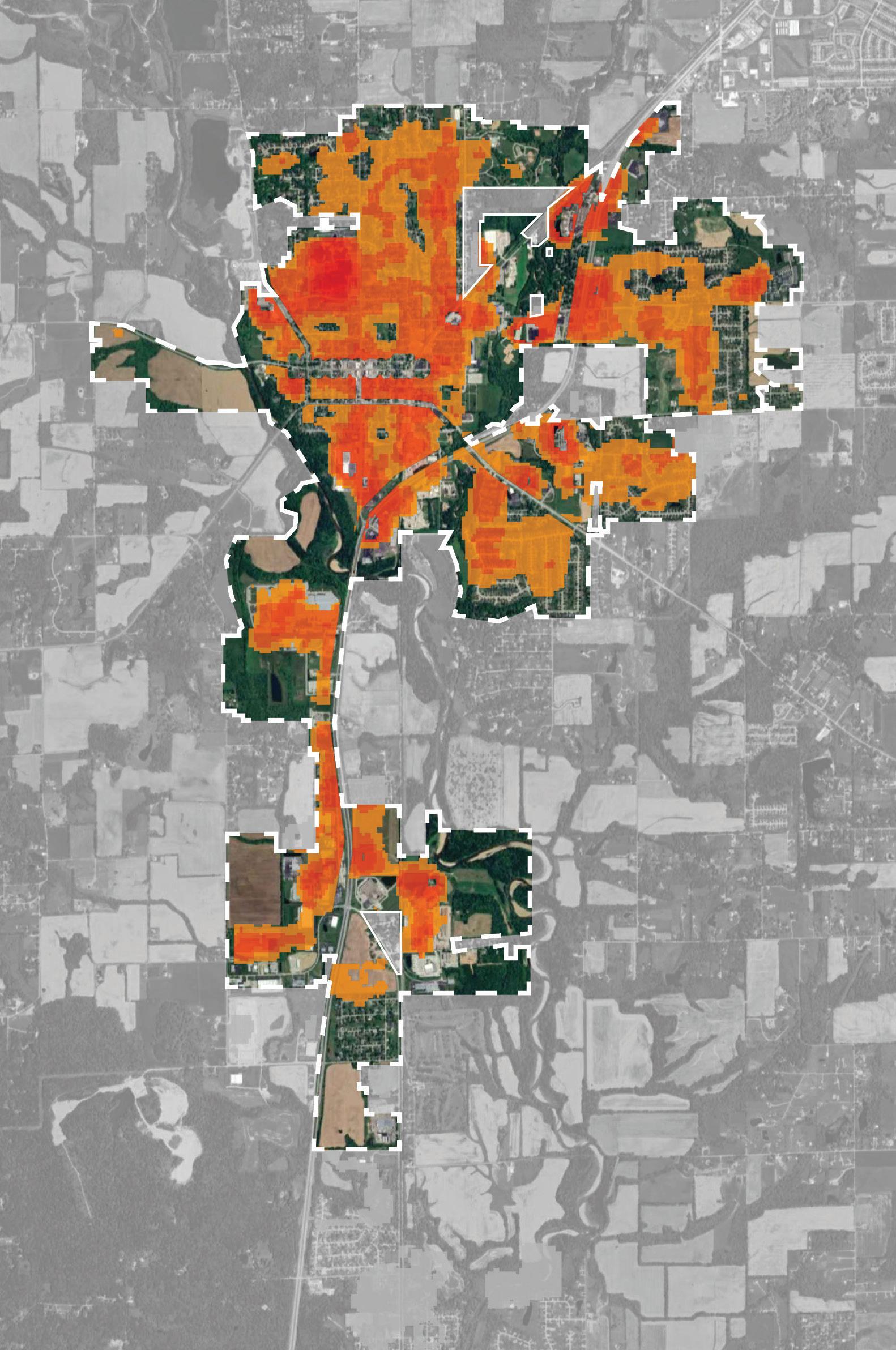
Located in Central Indiana, Mooresville experiences a humid continental climate, characterized by four distinct seasons with hot, humid summers and cold, snowy winters. These seasonal patterns influence how residents interact with parks and outdoor amenities, and they present both planning opportunities and operational challenges for the MPRD. Summers in Mooresville are typically hot and humid, with average highs in July reaching the mid-80s. This drives demand for shaded gathering areas, splash pads, and accessible water features like the Mooresville Family Aquatic Center. Winters are cold and can be snowy, with average lows in January dipping to around 20°F and snowfall averaging 20–25 inches per year. These conditions result in seasonal reductions in park usage and present maintenance challenges such as snow removal, ice buildup, and damage to trees and paved surfaces.
Spring and fall offer more temperate weather that is ideal for walking, youth sports, and special events, though these seasons also bring increased precipitation. The area receives approximately 40–45 inches of rain annually, with heavy rainfall and storm events peaking in late spring and early summer. Prolonged wet conditions can result in waterlogged soils and temporary flooding, particularly in
low-lying or poorly drained park areas such as Pioneer Park.
While seasonal patterns drive much of MPRD’s operational rhythm, severe weather events also play a role in shaping Mooresville’s park system. On April 8, 2020, an EF1 tornado tore through downtown Mooresville, with winds nearing 100 mph. Among the most significant impacts was the damage sustained by the historic Bass Building on East Main Street (shown in photo, next page). Built in the late 19th century, the structure’s second story collapsed during the storm and was ultimately deemed beyond repair.
The decision to demolish the building led to the creation of Bicentennial Park - a new public space that honors the town’s history and embodies the community’s resilience.
What began as a destructive storm event ultimately became a catalyst for transformation, giving rise to a vibrant and meaningful public gathering space. This example highlights the importance of adaptive planning in the face of climaterelated events, reinforcing the value of public spaces that respond to change while honoring local identity.
These climate events can cause property damage, erosion, and disruptions to local infrastructure. Some examples are:
• Freeze-thaw cycles lead to surface degradation of paved amenities and infrastructure.
• Prolonged rainfall results in waterlogged soils, flooding, and erosion - especially in flood-prone parks.
• High summer temperatures can reduce usability of unshaded areas and stress vegetation.
• Increasing storm frequency and intensity may stress aging infrastructure and result in unexpected closures or damage.
• The region’s four-season climate enables a wide range of seasonal programming and outdoor events.
• Natural features such as floodplains and wet soils can be leveraged for rain gardens, habitat restoration, and low-impact design.
• Incorporating shade structures and native tree canopy can help mitigate heat and extend summer usability.
• Events like the 2020 tornado provide models for transformational recovery, turning disruption into opportunities for reinvestment and community-building.
• Parks and trails can serve as platforms for environmental education focused on weather, climate, and ecological resilience.
Ultimately, preparing for climate-related risks can protect public health, preserve natural resources, and support the local economy by reducing potential disaster recovery costs.
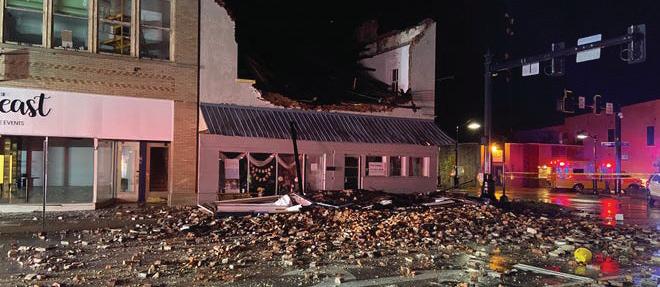
The physical form of Mooresville is shaped by its position within Indiana’s glaciated plains - characterized by gently rolling terrain, subtle ridgelines, and shallow stream valleys. While not dramatic in elevation, the town’s landform plays a quiet but consistent role in shaping how land is used, how water moves, and how residents interact with their environment.
Elevations in the area range from just over 600 feet to approximately 740 feet above sea level, with most developed land gently sloping toward natural drainageways like White Lick Creek and Sycamore Creek. These soft gradients provide an overall sense of walkability and openness, allowing for accessible trail development, flexible park layouts, and longview vistas in open spaces. While Mooresville lacks steep hills or bluffs, subtle topographic changes still influence stormwater behavior, soil drainage, and microclimates within different park properties.
Via Indiana Geological Survey
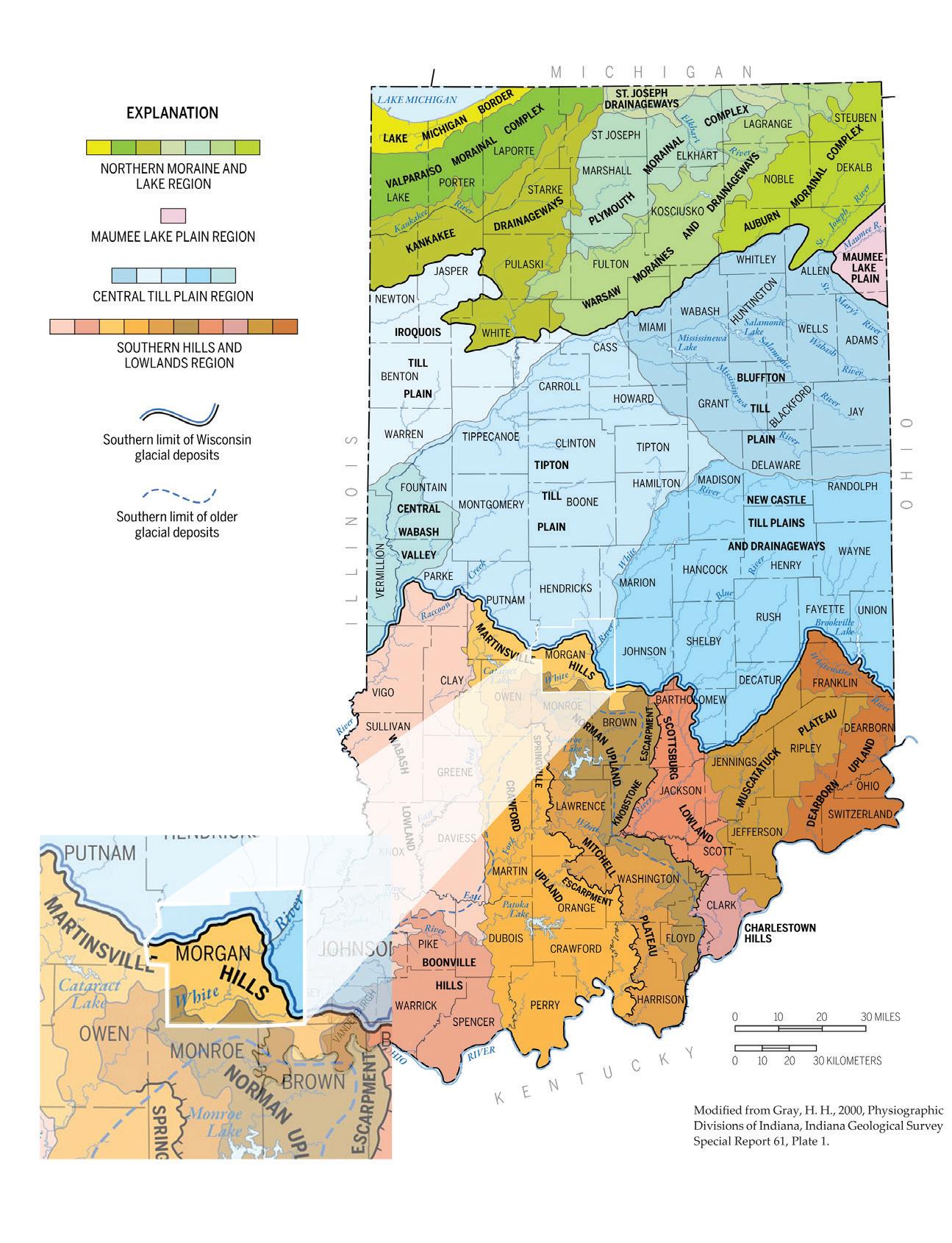
Enlargement of Morgan County Region
Low-lying areas - particularly in the western and southern portions of town - coincide with seasonally saturated soils and mapped floodplains, which pose constraints on park development but also offer opportunities for habitat restoration, wetland education, or passive recreation. Conversely, upland sites with better drainage and more reliable ground conditions are better suited for high-use recreation amenities such as playgrounds, courts, and event lawns.
The town’s gently varied topography also supports visual diversity and spatial orientation within parks. Even modest elevation changes can help define zones within a parkseparating active and passive uses, framing trails, or offering small rises for gathering spaces and overlooks.
As development pressures increase in previously agricultural or wooded areas, MPRD will need to pay close attention to how future parks relate to topographic form - not only for drainage and grading considerations, but to protect existing landforms that provide ecological function and identity to open space. In the broader regional context, growth continues to radiate outward from the Indianapolis metropolitan area, placing increasing development pressure on communities like Mooresville. This geography - where open land, water networks, and modest elevation shifts intersect with a growing population - presents a unique opportunity: to balance preservation and progress by guiding thoughtful land use, park system expansion, and recreational planning that fits both the natural landscape and the evolving needs of its residents.
• Low-lying areas near creeks or drainageways are more prone to saturation, erosion, and flood-related access issues, limiting development options.
• While gentle, topographic variation can still create drainage conflicts or uneven wear on trails and turf if not carefully managed.
• A lack of significant elevation reduce opportunities for certain types of recreation or overlook features that rely on scenic height.
• Gradual slopes and subtle elevation shifts offer excellent conditions for accessible design, including universally navigable trails and multi-generational amenities.
• Topography can help define natural zones within parks, separating uses and enhancing the experience of space and movement.
• MPRD can use existing high ground or modest rises to create viewpoints, shelter placements, or flexible lawn areas with drainage advantages.
• Maintaining or restoring natural contours during development can support stormwater management, native planting success, and long-term site resilience.
• As Mooresville grows, park and open space planning rooted in topographic understanding can help preserve character while supporting future community needs.
The soils across Mooresville and the greater Morgan County area shape how land is used, developed, and maintainedparticularly within public parks and open space systems.
The region’s geology, largely formed by glacial activity, has left behind a diverse soil profile that affects everything from trail placement to stormwater management and native habitat restoration. For the MPRD, recognizing the unique characteristics and constraints of local soils is a critical part of effective, long-term park planning.
In many upland areas of Mooresville, Miami silt loam is the dominant soil type. This well-drained, fertile soil is ideal for recreation infrastructure, trail systems, and active use areas due to its stability and predictable behavior under load. It has historically supported a range of development types, from open fields to park pavilions and courts, without major soil-related complications.
By contrast, soils such as Brookston silty clay loam and Crosby silt loam are found in low-lying or poorly drained areas. These soils tend to retain water and may remain saturated during spring thaw or after heavy rainfall. Parkland in these areas often requires more frequent turf
repair, increased drainage interventions, or adaptive uses to avoid long-term maintenance issues. In floodplain zones and adjacent to creeks or drainageways, Rensselaer loam is also present - offering rich organic content for restoration work but presenting limitations for built structures or traditional programming.
As MPRD considers future development, expansion, and ecological restoration efforts, aligning land use with soil capacity will be essential to minimize environmental impact, control capital and maintenance costs, and ensure safe, accessible spaces for the public.
While soils like Miami silt loam provide strong support for active recreation, other common soil types in Mooresville present persistent challenges:
• Portions of existing parks - including areas of Pioneer Park - sit on poorly drained or flood-prone soils, leading to seasonal saturation and infrastructure damage.
• Soils with high clay content (like Brookston or Crosby types) can become compacted under heavy use, reducing turf health and increasing erosion.
• Limitations on permanent structures or recreational features in floodplain areas with Rensselaer soils restrict the flexibility of park programming and improvements.
Despite the challenges, Mooresville’s soils also present important opportunities, such as:
• Floodplain soils can be leveraged for passive recreation and ecological restoration, supporting pollinator meadows, nature play, and native planting initiatives.
• Native soil conditions, when understood and respected, can inform low-impact design strategies that promote sustainability and reduce ongoing maintenance needs.
• Collaboration with local partners like the Morgan County Soil and Water Conservation District (SWCD) can support decision-making for erosion control, habitat restoration, and soil health improvements.
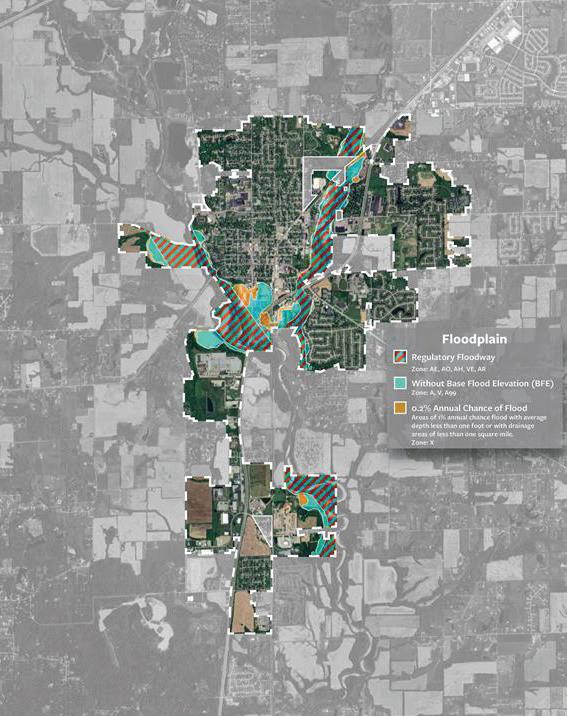
The physical and environmental context of Mooresville is deeply shaped by its proximity to several important waterways and associated floodplains. These natural features influence land use decisions, stormwater management, and the functionality of parks and open spaces across the community. For the MPRD, understanding the opportunities and limitations posed by these hydrological systems is essential for responsible planning, ecological stewardship, and community safety.
Mooresville lies within the White River watershed, with two primary tributaries - White Lick Creek and the East Fork of White Lick Creek - playing central roles in the local water system. These creeks and their smaller branches serve as natural drainage channels and contribute to the ecological health of the region. However, they are also prone to seasonal and flash flooding, which presents challenges for parks, recreation facilities, and adjacent infrastructure.
At a flood stage of approximately 11.6 feet, Bridge Street in Mooresville becomes inundated, causing floodwaters to extend into Pioneer Park, particularly impacting its 130 acres of parkland, especially athletic fields and surrounding areas. At just over 11 feet, MPRD’s soccer fields and lowlying sections of the park system begin to experience impacts. Similarly, when water levels rise near the Indiana 67 bridge over White Lick Creek, flooding can reach commercial areas, affecting access and threatening local businesses. These realities underscore the importance of understanding flood risk as both a design constraint and an opportunity for ecological enhancement within the parks system.
Due to several areas within Mooresville’s parks system falling within FEMA-designated floodplains and floodways, these areas are generally unsuitable for permanent structures or traditional active recreation development, but they can serve other valuable purposes - such as habitat preservation, passive recreation, stormwater retention, or education and interpretation.
In 2019, a drainage study commissioned by the Town of Mooresville identified several culverts and crossings that are undersized or prone to overtopping during 100-year flood events. Some of the challenges these conditions pose for the MPRD:
• Even in non-critical flooding areas, FEMA regulations and best practices limit development in the regulated floodway and flood fringe zones. This creates constraints on where MPRD can place structures or formalize active recreation uses.
• Recurring flooded areas can become waterlogged or inaccessible after heavy rain, creating seasonal disruptions to programming, maintenance challenges, and potential damage to turf or recreational infrastructure.
• Storm events can wash away mulch, expose tree roots, or damage landscaping and turf, requiring frequent and costly repair and replanting.
While flood-prone areas pose challenges, they also present significant environmental and recreational opportunities if managed intentionally. Parks and open space are ideal settings for implementing green infrastructure strategies, such as:
• Rain gardens and bioswales to slow and filter runoff,
• Wetland restoration to enhance habitat and floodwater storage,
• Riparian buffers and native plantings to stabilize streambanks and improve water quality.
Mooresville can also explore using these spaces for nature-based recreation, including low-impact trails, interpretive signage, birdwatching areas, and flood-resilient playgrounds. By balancing safety, ecology, and recreation, Mooresville can continue to protect its people and infrastructure while embracing the beauty and power of its local waterways.
Mooresville and its surrounding areas are home to a diverse array of wildlife species, some of which are of particular conservation concern. Understanding the specific habitats and species present is essential for the MPRD to effectively manage and preserve these natural resources within the town’s parks and green spaces.
The region’s forests, wetlands, and open spaces provide habitats for various mammalian species, including whitetailed deer (Odocoileus virginianus), raccoons (Procyon lotor), and eastern cottontail rabbits (Sylvilagus floridanus). Avian species such as northern cardinals (Cardinalis cardinalis), American robins (Turdus migratorius), and blue jays (Cyanocitta cristata) are commonly observed throughout the year. Aquatic environments and wetlands support amphibians like the American bullfrog (Lithobates catesbeianus) and various salamander species.
Notably, Mooresville lies within the Mississippi Flyway, a major migratory route for numerous bird species. During spring and fall migrations, residents and visitors may observe species such as the American white pelican (Pelecanus erythrorhynchos), sandhill crane (Antigone canadensis), and snow goose (Anser caerulescens), reflecting the dynamic nature of bird migration in the region and creating a rich opportunity for MPRD.
In contrast, several species in the Mooresville area are recognized for their conservation significance:
• Indiana Bat (Myotis sodalis): This federally endangered species relies on forested areas for roosting and foraging. Nearby Sodalis Nature Park, named after the Indiana bat, provides critical habitat and features over 3.5 miles of nature trails, offering opportunities for public education and observation.
• Cerulean Warbler (Setophaga cerulea): The stateendangered cerulean warbler inhabits large, unfragmented forest blocks. The Fred and Dorothy Meyer Nature Preserve in Morgan County offers suitable habitat for this species, emphasizing the importance of preserving mature forests.
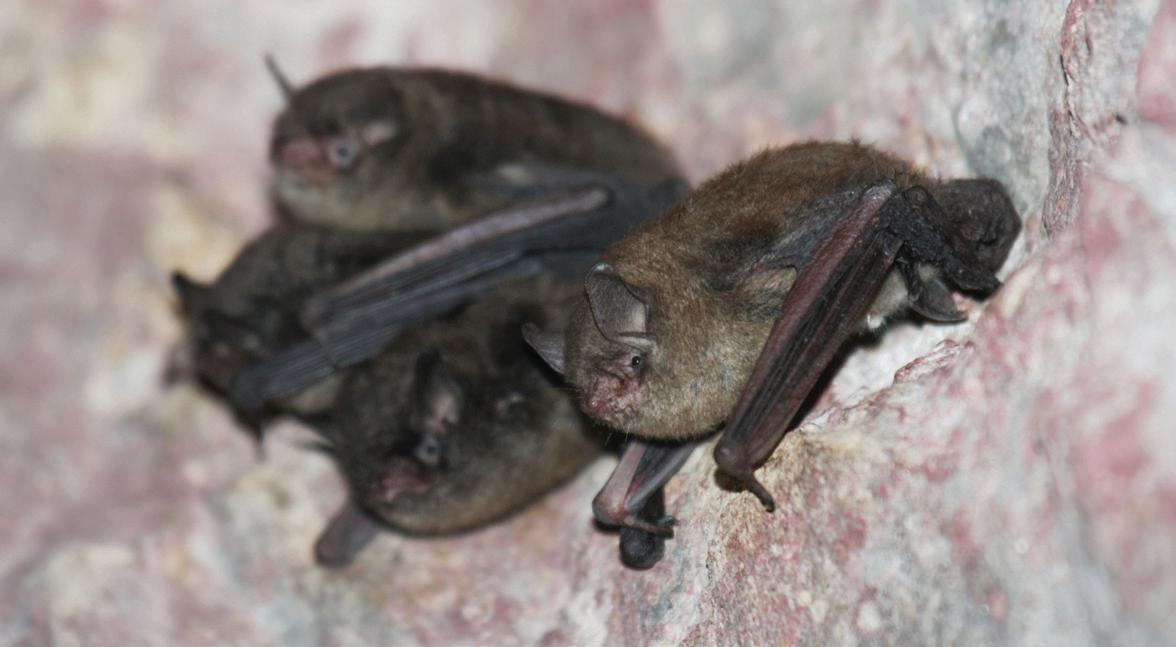
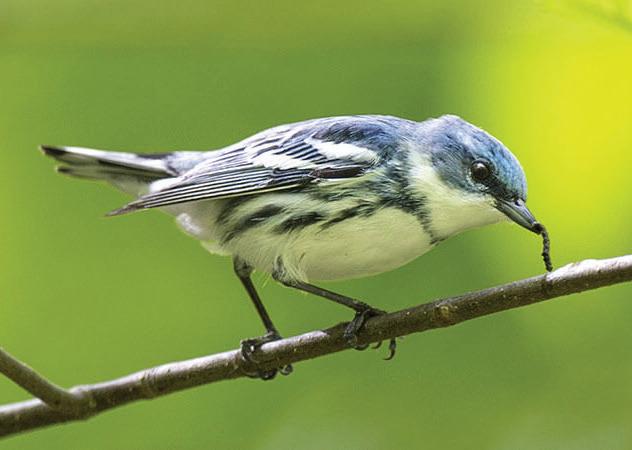
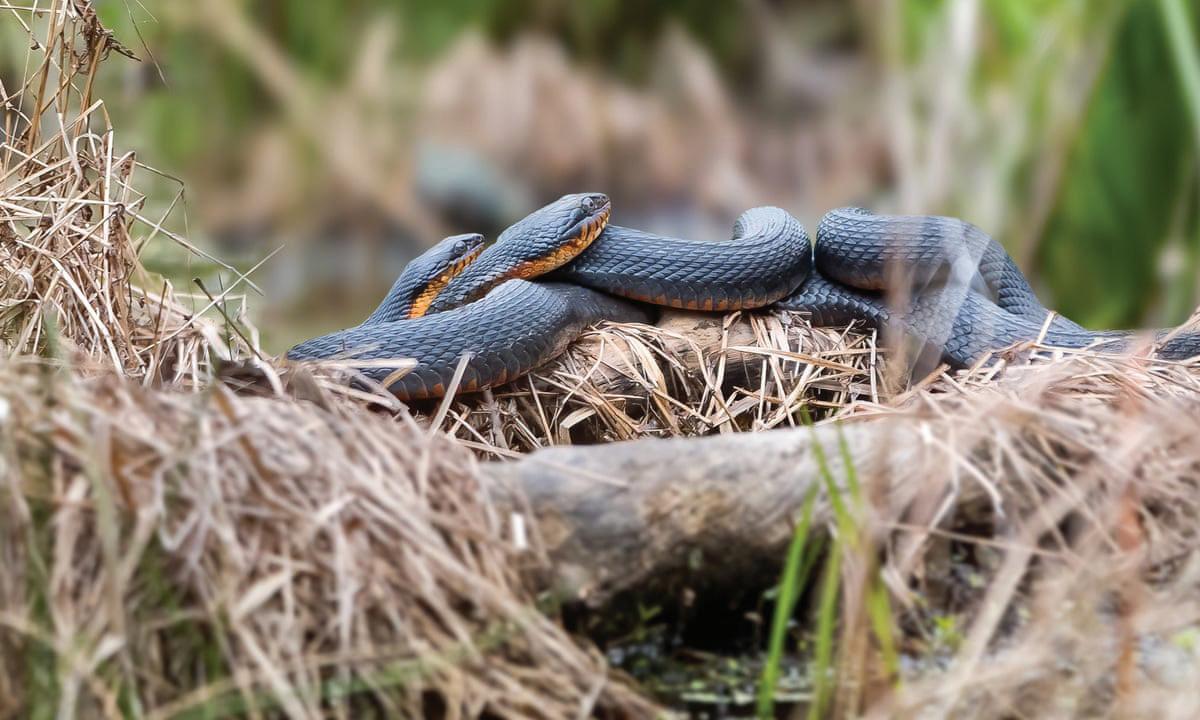
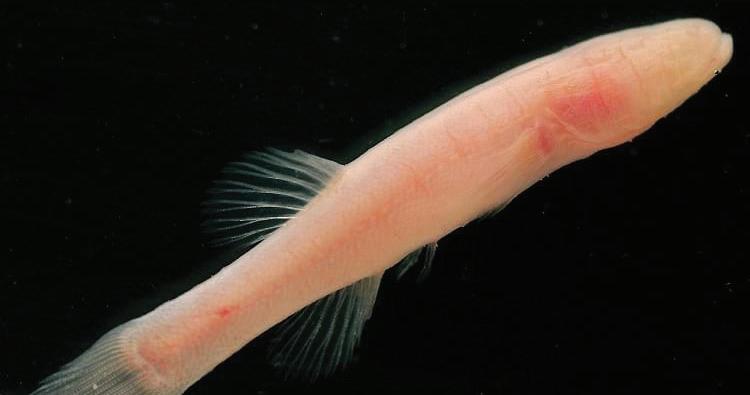
• Copperbelly Water Snake (Nerodia erythrogaster neglecta): Listed as endangered in Indiana, this snake depends on wetlands and adjacent upland forests. Habitat loss and fragmentation pose significant threats to its population.
• Northern Cavefish (Amblyopsis spelaea): Found in subterranean waters of southern Indiana, including areas near Mooresville, this species is sensitive to groundwater contamination and habitat disturbances.
The primary threats to wildlife in the Mooresville area and Morgan County region include habitat loss due to development, invasive species, and environmental degradation. Protecting and restoring diverse habitats such as forests, wetlands, and riparian zones are crucial for supporting the region’s biodiversity. In addition to the aforementioned endangered species, and their threatened habitats, the encroachment of invasive species reduces biodiversity by overwhelming native plants and limiting habitat availability for local wildlife.
Local initiatives, including the establishment of nature preserves and habitat restoration projects, play a vital role in conserving these ecosystems. Other opportunities are:
• Implement projects that restore native plant communities can enhance habitat quality for wildlife, supporting biodiversity within parklands.
• Develope initiatives that inform the public about local wildlife, migratory patterns, and conservation efforts can foster community engagement and stewardship.
• Partner with state and federal agencies, as well as local conservation organizations, can aid in monitoring and protecting species of concern.
By integrating wildlife considerations into park planning and management, MPRD can contribute to the preservation of Mooresville’s natural heritage while providing residents and visitors with opportunities to experience and appreciate the region’s diverse fauna.
Despite these rich habitats and their wildlife, Mooresville, like many communities across Indiana, faces significant challenges due to the presence of invasive species. Both plant and animal invaders disrupt natural habitats, outcompete native species, and threaten long-term ecological resilience. The MPRD has identified (and is currently managing their removal) several invasive plant species that pose significant challenges to the local ecosystems. The primary invasive species of concern include:
• Honeysuckle (Lonicera spp.)
• Burning Bush (Euonymus alatus)
• Winter Creeper (Euonymus fortunei)
• White Mulberry (Morus alba)
• Callery Pear (Pyrus calleryana)
• Autumn Olive (Elaeagnus umbellata)
The encroachment of invasive species reduces biodiversity by overwhelming native plants and limiting habitat availability for local wildlife. This loss disrupts ecosystem functions and makes it harder for Mooresville to maintain healthy, resilient natural spaces. The emerald ash borer, for example, has devastated ash tree populations, which provide shade, stabilize soil, and support native insect species. Controlling invasives requires significant time and resources, and unchecked spread could lead to further ecological degradation.
Community-led initiatives to remove invasive species and restore native plantings can help curb the spread of invasives. Mooresville could collaborate with organizations like the Indiana Invasive Species Council to create an action plan for managing priority invasive species. Encouraging native plant landscaping in residential and commercial spaces can further support biodiversity and ecological resilience. Such efforts would maintain Mooresville’s natural beauty and reduce the economic impact of invasive species on the local environment.
Mooresville’s story is not only told through its natural landscape and wildlife, but also through the humanmade structures, community spaces, and traditions that have shaped life here for two centuries. The town’s civic institutions, religious centers, residential patterns, and cultural identity form a powerful backdrop for the evolution of its parks and public spaces. These elements reflect both the enduring values of Mooresville - such as family, service, and connection - and the shifting needs of a town adapting to growth while protecting its smalltown roots.
This chapter explores the built environment, historical landmarks, and cultural rhythms that have informed the development of Mooresville’s park system. From the layout of its historic downtown to the modern utilities and trail networks that support daily life, Mooresville’s human-made environment is filled with stories of purpose, resilience, and public investment. Together with the town’s longstanding cultural institutions and beloved celebrations, these human-centered layers of context help illuminate where Mooresville has beenand where its parks can continue to lead.
Mooresville’s history is shaped by a long-standing commitment to civic life, stewardship of the land, and deep community ties. As one of Indiana’s earliest settlements, Mooresville has balanced its small-town charm with regional relevance for two centuriesserving as a local hub for education, commerce, and connection. Its legacy is reflected not only in buildings and historic markers, but in the lived experiences of residents who continue to gather, celebrate, and shape its identity today.
Before European settlers arrived, the area that is now Mooresville was part of the homeland of Native American tribes including the Miami and the Potawatomi. These Indigenous communities relied on the surrounding
woodlands, waterways, and fertile soils for sustenance, ceremony, and seasonal migration. While modernday Mooresville has few preserved traces of this early history, the region’s creeks, floodplains, and native plant ecosystems offer subtle reminders of the natural and cultural foundations that came long before formal town planning.
Founded in 1824, Mooresville was one of the first towns in Indiana to be intentionally platted with walkability and civic gathering in mind. Its design emphasized a central square, shared public spaces, and orderly streets - principles that continue to shape the town’s livability today. As it grew, Mooresville became a crossroads for surrounding rural communities in Morgan County, offering schools, shops, and religious institutions that supported both local residents and visitors from nearby townships.
In the mid- to late-19th century, Mooresville’s economy remained tied to its agricultural surroundings, with farms, mills, and small-scale industry supporting steady, modest growth. Unlike larger industrial cities, Mooresville never experienced a dramatic boom or demographic wave. Instead, its evolution was marked by consistency - a town known more for its strong institutions, schools, and families than for rapid change. Education, in particular, has played a defining role in shaping Mooresville’s cultural identity. The establishment of the Friends Academy in 1861, one of Indiana’s earliest secondary schools, set the tone for generations of investment in public education. That legacy continues in the town’s school system today and is mirrored in civic assets like the Mooresville Public Library and Academy Museum, both of which reflect the town’s long-standing respect for history, learning, and community leadership. Mooresville’s population remained relatively stable for much of the 20th century, anchored by strong local traditions and a robust sense of place. However, in recent decades, the town has become increasingly connected
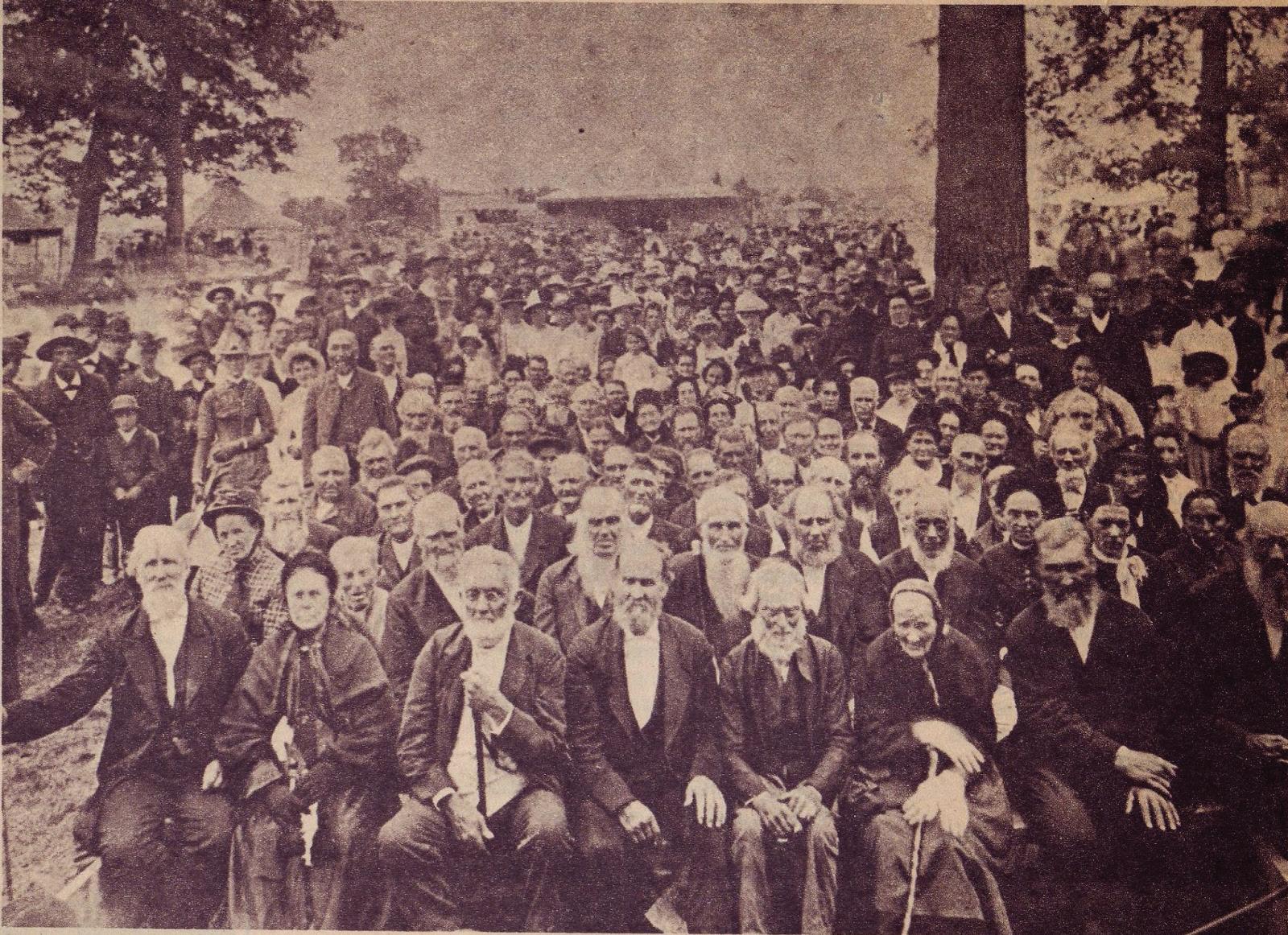
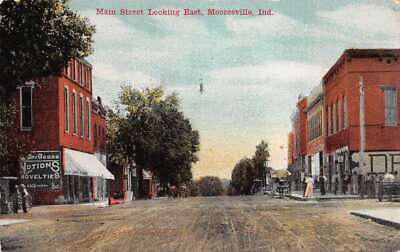
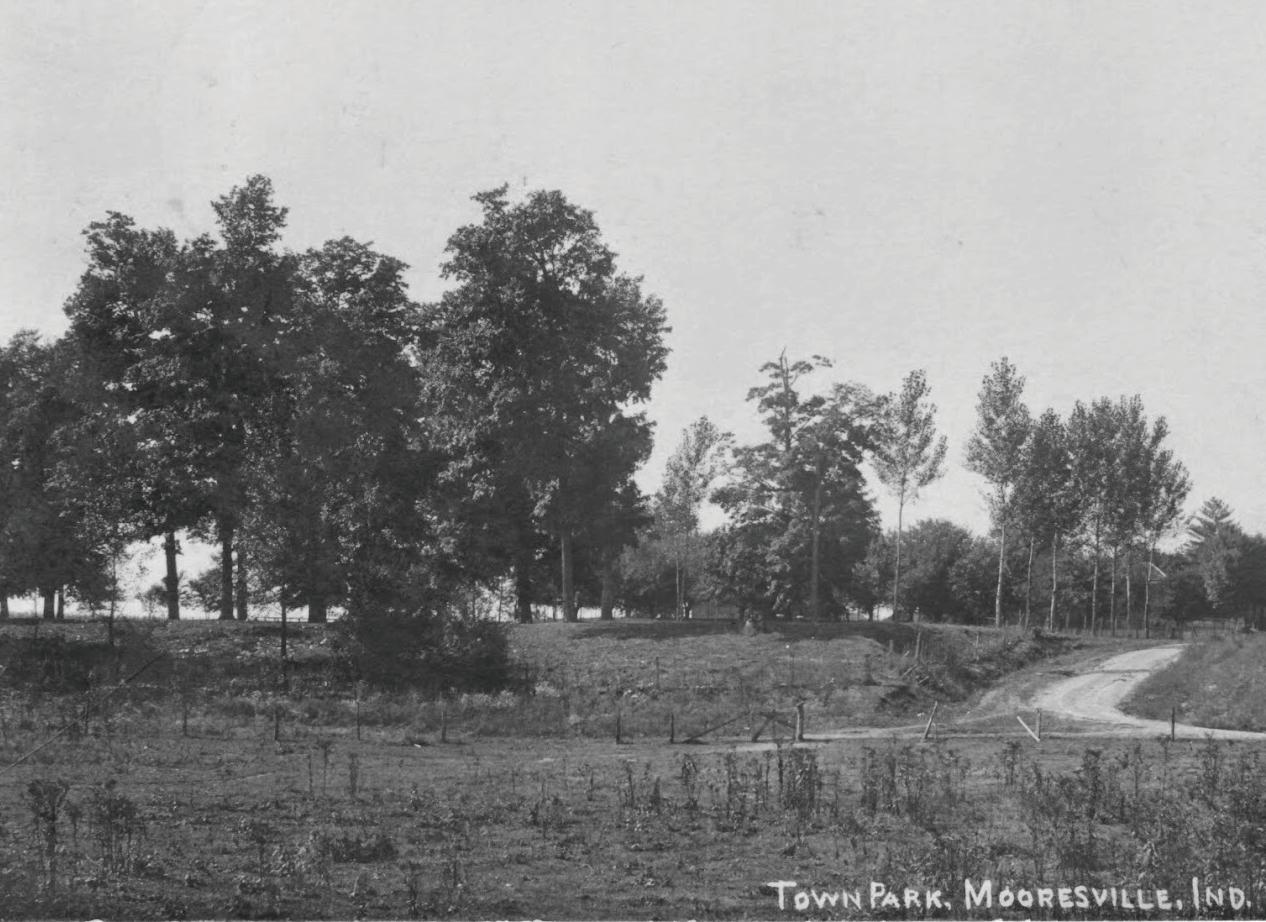
to the larger Indianapolis metro region, attracting new residents while preserving its core character. The result is a town that blends heritage with growth - where public parks, schools, and civic events still bring generations together, even as new development shapes the edges of town. Today, Mooresville continues to be defined by the values it was built upon: neighborliness, service, and civic pride. Heritahe is expressed not only through formal institutions, but through local festivals, church gatherings, and informal connections in the parks and streets that thread through daily life. MPRD’s park system plays a vital role in supporting this sense of identity - providing spaces that reflect the town’s legacy while welcoming a new generation of users and community stories.
Just as Mooresville’s civic values and institutions were shaped by generations of intentional community-building, so too was the development of its park system. Parks in Mooresville did not arrive as a singular vision, but gradually emerged through the same long-term care, public spirit, and belief in place that have long defined the town.
Mooresville was founded in 1824 as a planned town built around walkable streets, civic institutions, and a central square - laying the groundwork for what would become a lasting culture of public gathering. This foundational layout, emphasizing connectivity and shared space, established a physical and social blueprint that continues to shape the town’s parks and public realm today.
By the mid-1900s, informal recreation had become a visible part of community life. Schoolyards, open fields, and church commons offered simple but meaningful places for children to play, families to gather, and seasonal traditions to take root. These spaces reflected a grassroots sense of stewardship and reflected the shared ethos that public life was something cared for collectively.
As the community grew and expectations evolved, the town recognized the need for more formalized and consistent management of its public spaces. In the late 20th century, the Mooresville Parks and Recreation District (MPRD) was officially established - marking a pivotal moment in
the town’s history. MPRD brought structure, vision, and professional oversight to Mooresville’s recreation assets, allowing the community to move from ad hoc amenities to a system-wide, long-range approach. The 1990s and 2000s ushered in a new era of growth for Mooresville’s parks. Pioneer Park underwent significant development, including the addition of athletic fields, trails, shelters, and a growing number of community amenities. The park quickly became the flagship of the system - a central hub for everyday recreation, large events, and intergenerational use.
In 2007, the Mooresville Family Aquatic Center opened, offering year-round recreation for families, youth, and visitors from across the region. With this major investment, MPRD expanded its role as not just a provider of space - but as a leader in active wellness, public programming, and economic vitality.
To guide future investment and ensure alignment with resident needs, MPRD completed its first 5-Year Parks Master Plan (2018–2023). This milestone formalized a comprehensive strategy for capital improvements, operations, and community engagement, setting the foundation for a more intentional and transparent planning process.
In 2020, when a severe tornado struck downtown Mooresville damaging the historic Bass Building, the Town opted for public renewal. After demolition and community planning, the land was repurposed, and in 2022–2023, the Bicentennial Park officially opened - a bold example of transformation and resilience in the heart of downtown.
Now, in 2024–2025, MPRD is building upon that legacy with its second 5-Year Parks Master Plan - a forwardthinking effort guided by public input, evolving trends, and a commitment to honoring Mooresville’s past while planning responsibly for its future. This process continues the town’s long tradition of designing parks not just for today’s needs, but with future generations in mind.
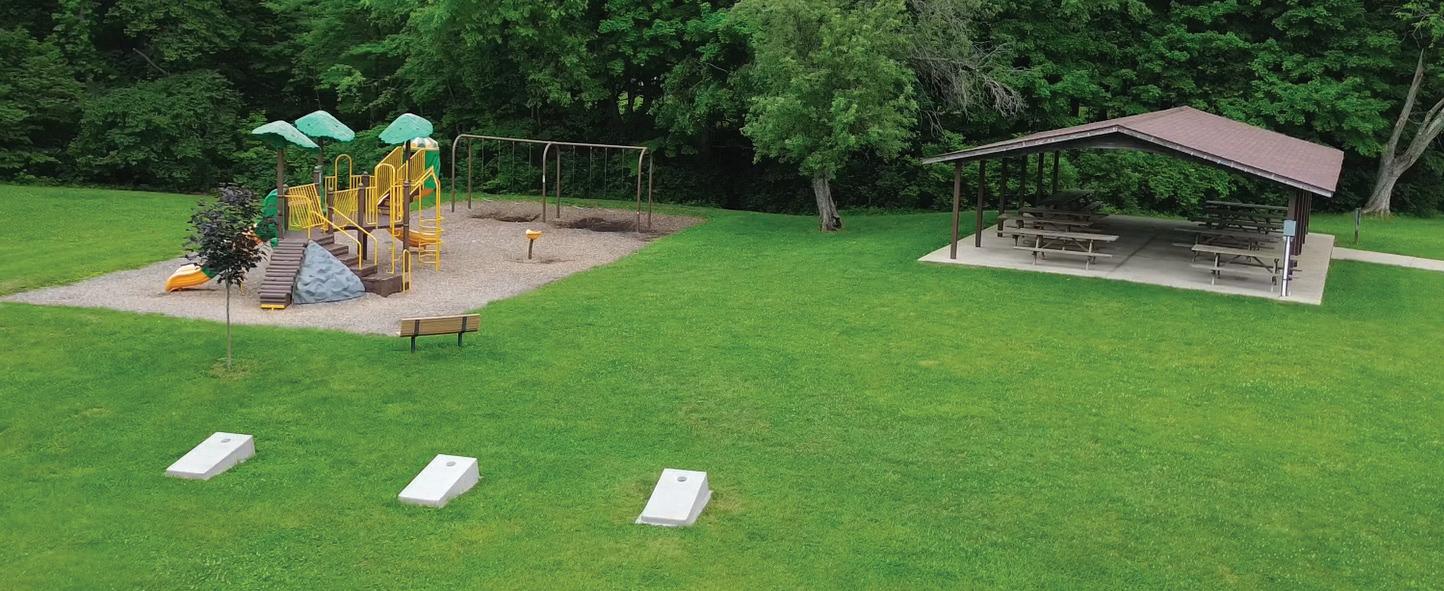
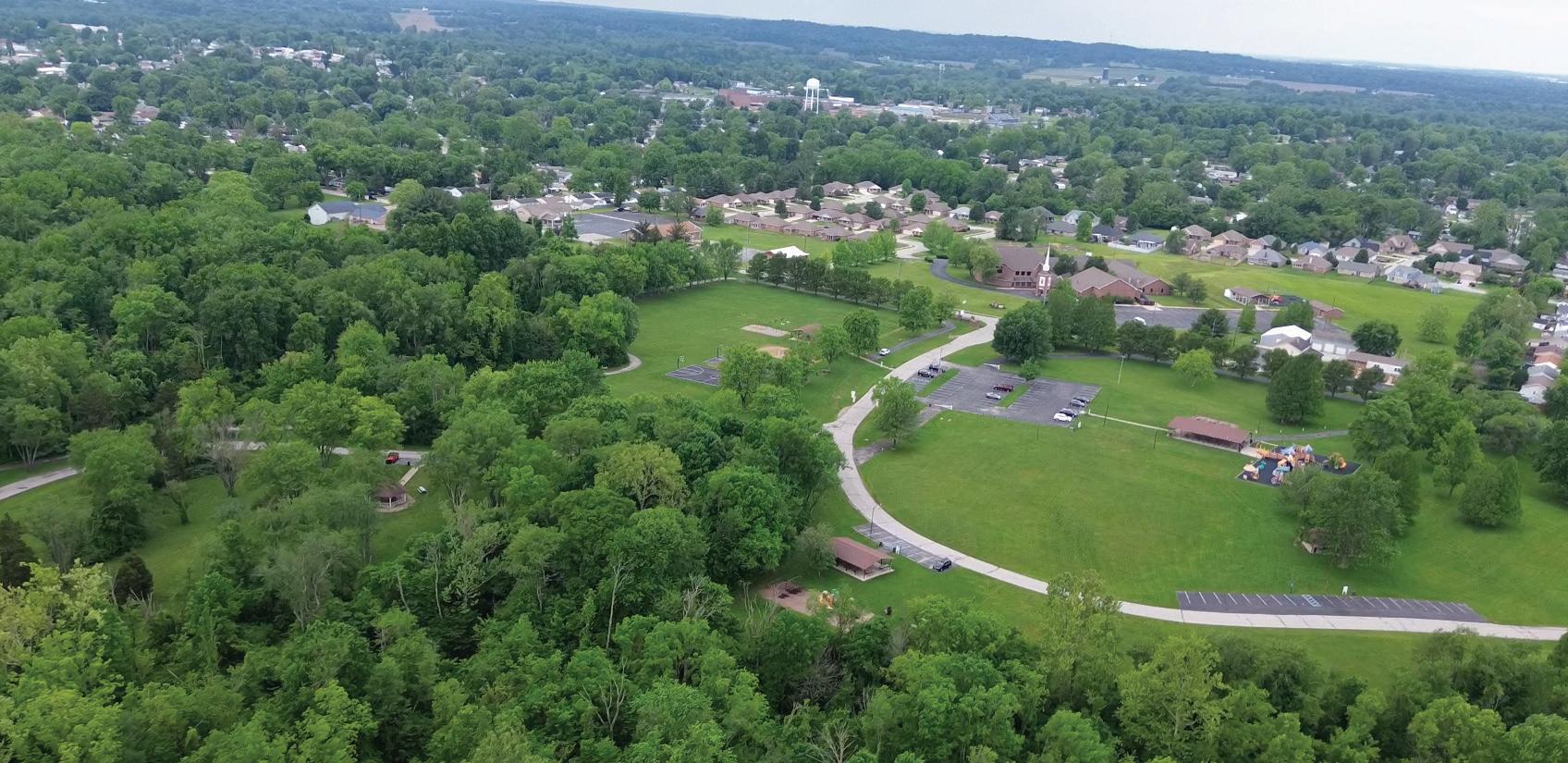
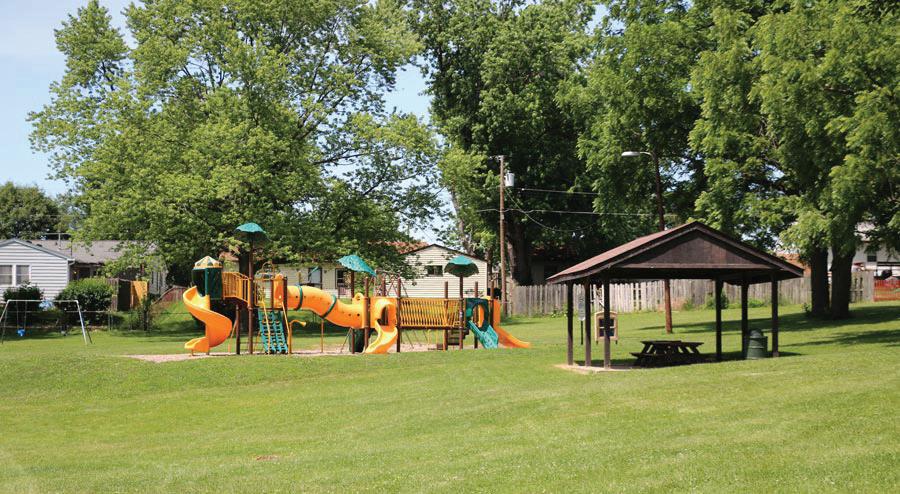
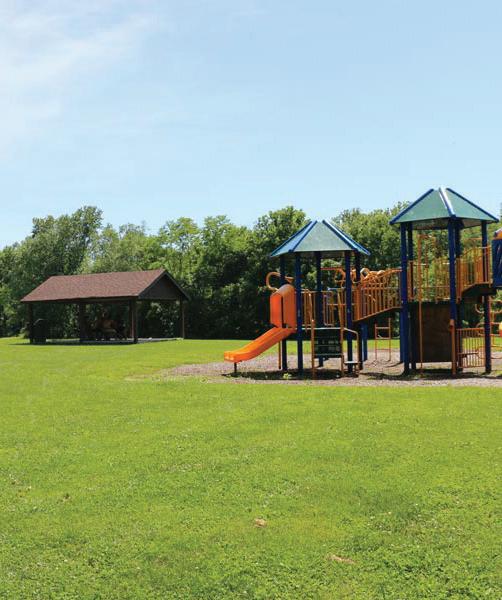
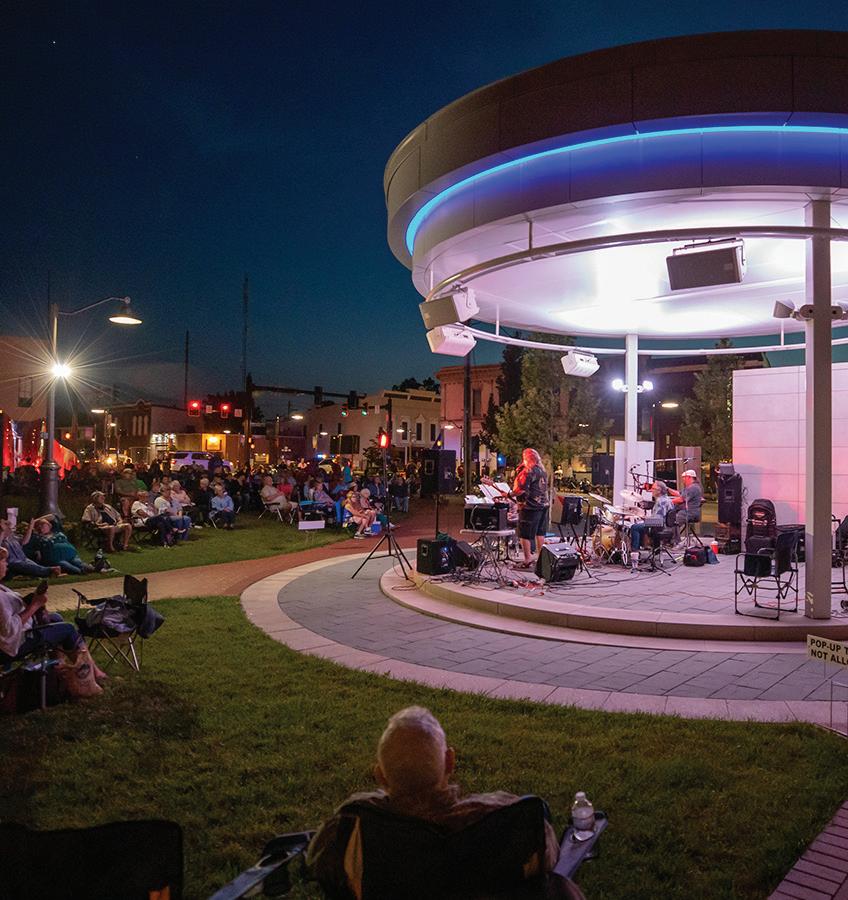
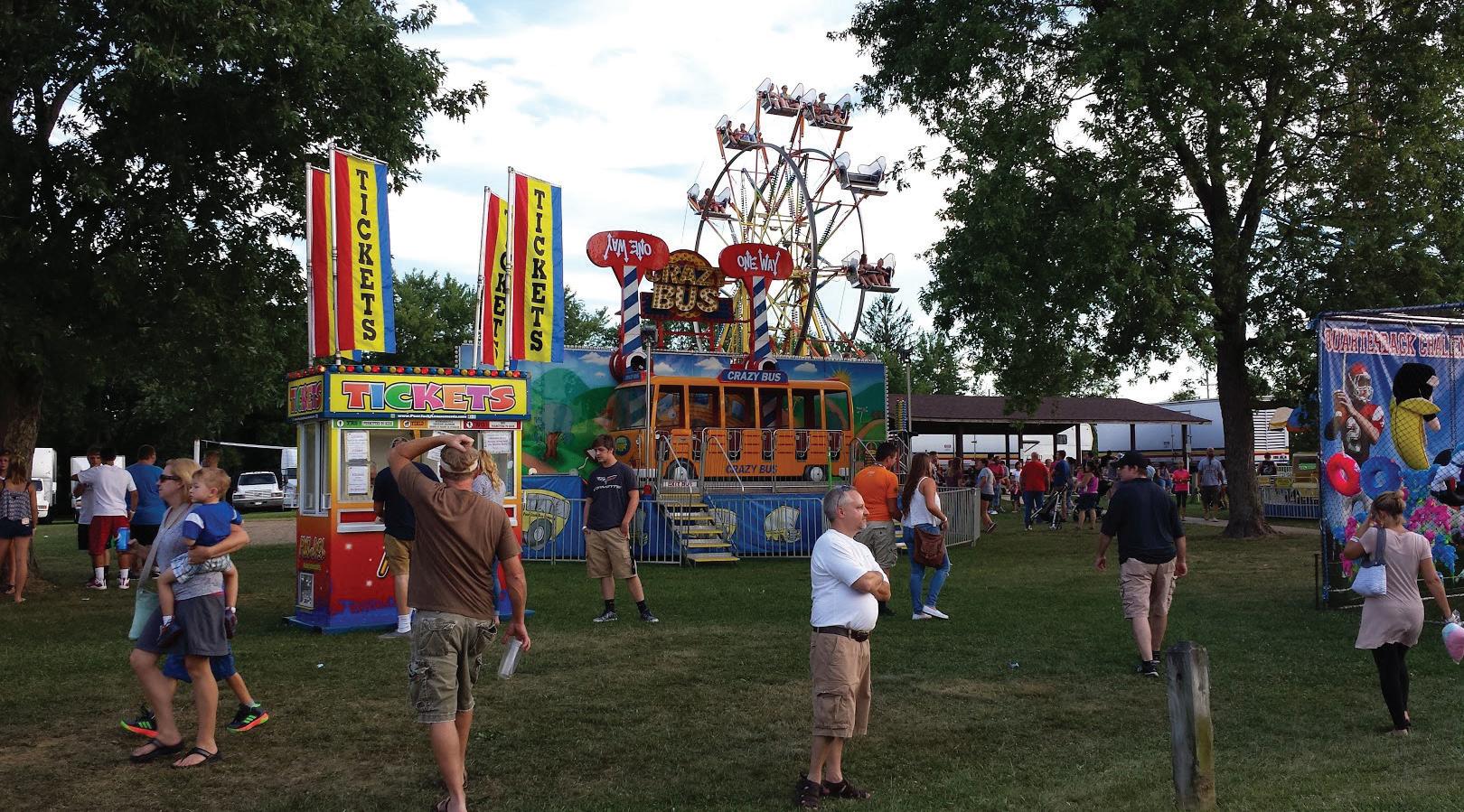
From shared green spaces to signature community events, Mooresville’s park system remains a reflection of the town’s values: inclusivity, resilience, connection, and a deep-rooted care for place. Each milestone in its development has been more than an expansion of land or infrastructure - it has been an investment in the life of the community.
Mooresville’s park system is more than a network of green spaces - it is an essential stage for the town’s cultural life. From seasonal festivals and family-friendly events to intergenerational programs and local traditions, the MPRD supports the rhythms of the community through
accessible, inclusive public space. These cultural expressions connect residents not only to one another, but to the town’s evolving identity tp celebrate its history, honor its diversity, and welcome new forms of belonging.
MPRD plays an active role in programming events that create a sense of place and shared experience. Parks like Pioneer Park and Bicentennial Park serve as flexible venues for civic celebrations, live music, art installations, and foodcentered events that bring residents together across age, background, and neighborhood. These spaces are often the backdrop for some of the town’s most anticipated cultural moments - from the Fourth of July Fireworks and Easter Egg Hunts, to Movies in the Park and holiday-themed events.
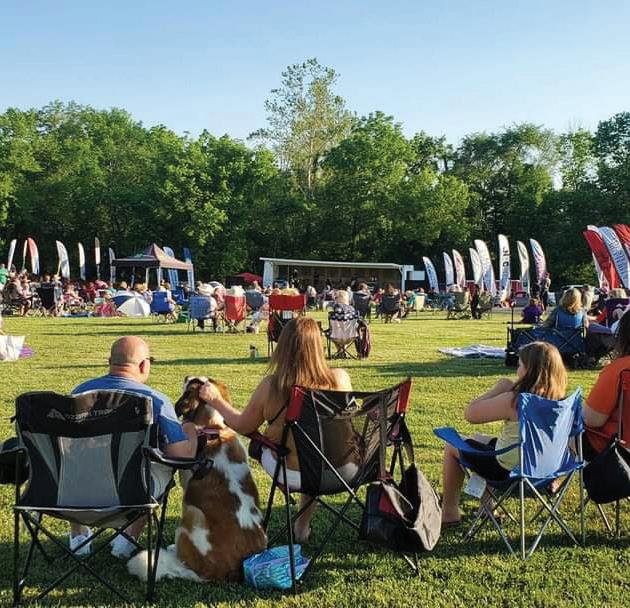
and period costumes that engage residents in a joyful expression of tradition and local storytelling. These events reinforce the town’s identity as a place that honors its past while embracing the present.
Beyond seasonal celebrations, cultural programming also takes the form of educational and creative opportunities throughout the year. The Mooresville Public Library regularly offers author talks, cultural exhibits, and hands-on workshops that complement park-based events and deepen community learning. Nearby, the Academy Museum and Newby Memorial Campus provide windows into the town’s legacy of education and civic life.
Signature community traditions remain a cornerstone of Mooresville’s cultural landscape. The Old Settlers Fair, a beloved multi-day festival rooted in the town’s founding history, features live music, carnival rides, vendors, and food, creating a homecoming atmosphere that draws longtime residents and new families alike. The Old Settlers Parade, which winds through historic streets and draws spectators from across Morgan County, offers a moment of civic pride and reflection, reminding the town of its shared values and intergenerational connections.
Similarly, the Victorian Christmas Celebration transforms downtown Mooresville into a scene of historical charm and seasonal cheer, featuring carolers, horse-drawn carriages,
Civic and service-based organizations further expand cultural engagement across Mooresville. Groups like the Mooresville Lions Club, Rotary, Kiwanis, and local scouting troops frequently host and support events in MPRD spaces - ranging from fundraising runs and beautification projects to Veterans Day ceremonies and community service days. Faith-based organizations also contribute to the town’s cultural rhythm, often partnering with the parks department to host gatherings, outreach programs, and inclusive holiday events.
MPRD is uniquely positioned to lead and support this rich cultural identity. By continuing to build partnerships with local organizations, cultural institutions, and community
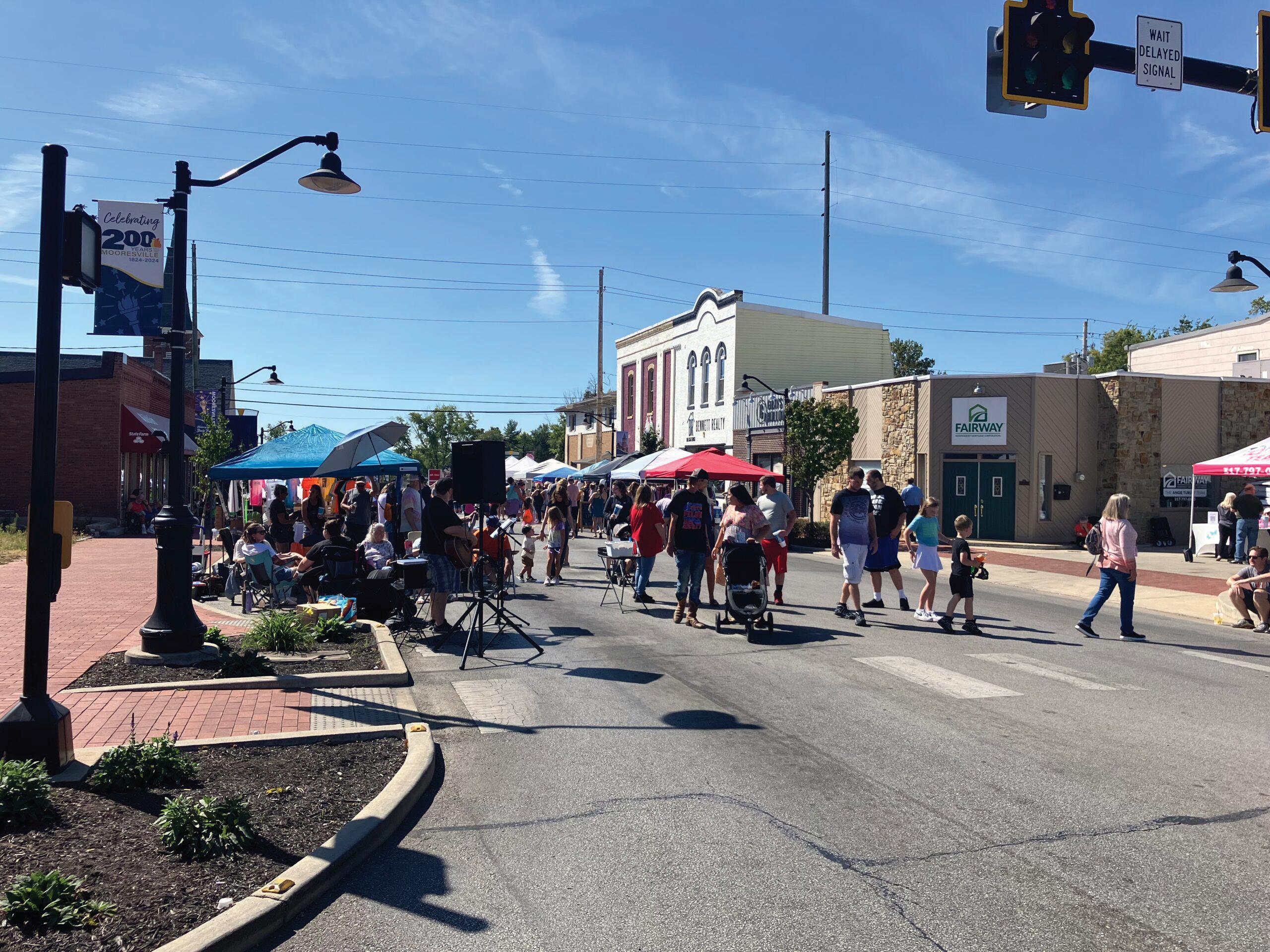
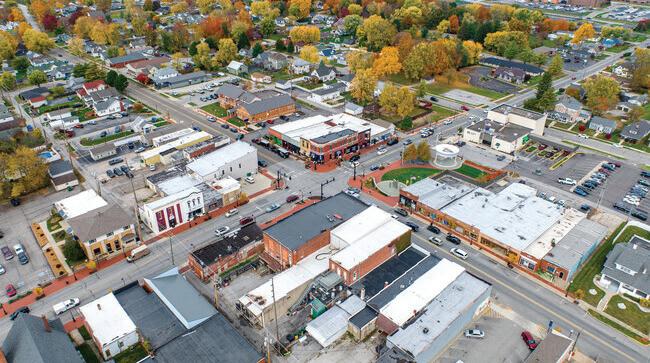
leaders, the department can ensure that its parks remain not only places for play and exercise - but for belonging, celebration, and civic connection.
Mooresville’s cultural life and community identity are supported by the human-made systems that surround it - streets, utilities, trails, and the patterns of growth that shape how people live, move, and connect. These systems form the framework for where and how parks can function, and how equitably they are accessed and experienced.
The town’s built environment is the result of nearly two centuries of development - beginning with a traditional grid laid out around a central square and walkable downtown core. This intentional town layout remains one of Mooresville’s greatest assets, creating an environment where public life is naturally integrated into daily routines. As the town has grown outward from its historic core, development has followed corridors such as State Road 67 and County Roads 144 and 500 E, expanding Mooresville’s footprint while introducing new challenges for connectivity and service provision.
To guide this growth, the 2023 Mooresville Comprehensive Plan outlines a bold but balanced vision: to manage development in ways that protect the town’s identity, promote sustainability, and strengthen access to highquality infrastructure and services - including parks. The plan prioritizes infill development, revitalization of underutilized areas, and careful planning around future growth nodes. These strategies support the Parks and Recreation District by creating opportunities for integrated open space planning and emphasizing the role of parks as essential public infrastructure.
Infrastructure investments over the last decade have kept pace with the town’s expanding needs. Indiana American Water’s $22 million treatment facility, completed in 2022, significantly increased capacity and improved water quality, positioning Mooresville for long-term growth. Stormwater and wastewater systems, overseen by the Public Works Department, are regularly evaluated and upgraded. Yet,
as residential and commercial development continuesparticularly in the west and southeast quadrants - ongoing coordination between MPRD, utilities, and planning departments will be vital to ensure new neighborhoods have adequate and equitable access to parks.
The Comprehensive Plan also highlights the critical role of transportation infrastructure in shaping quality of life and development outcomes. Mooresville’s regional connectivity - just 16 miles from downtown Indianapolis and minutes from the Indianapolis International Airport - makes it an attractive home base for commuters and new residents alike. Within town, the approved East-West Connector project will improve east–west mobility, support economic development in underbuilt areas, and help reduce congestion along primary corridors. These improvements are expected to directly benefit park access and visibility by opening up new areas for
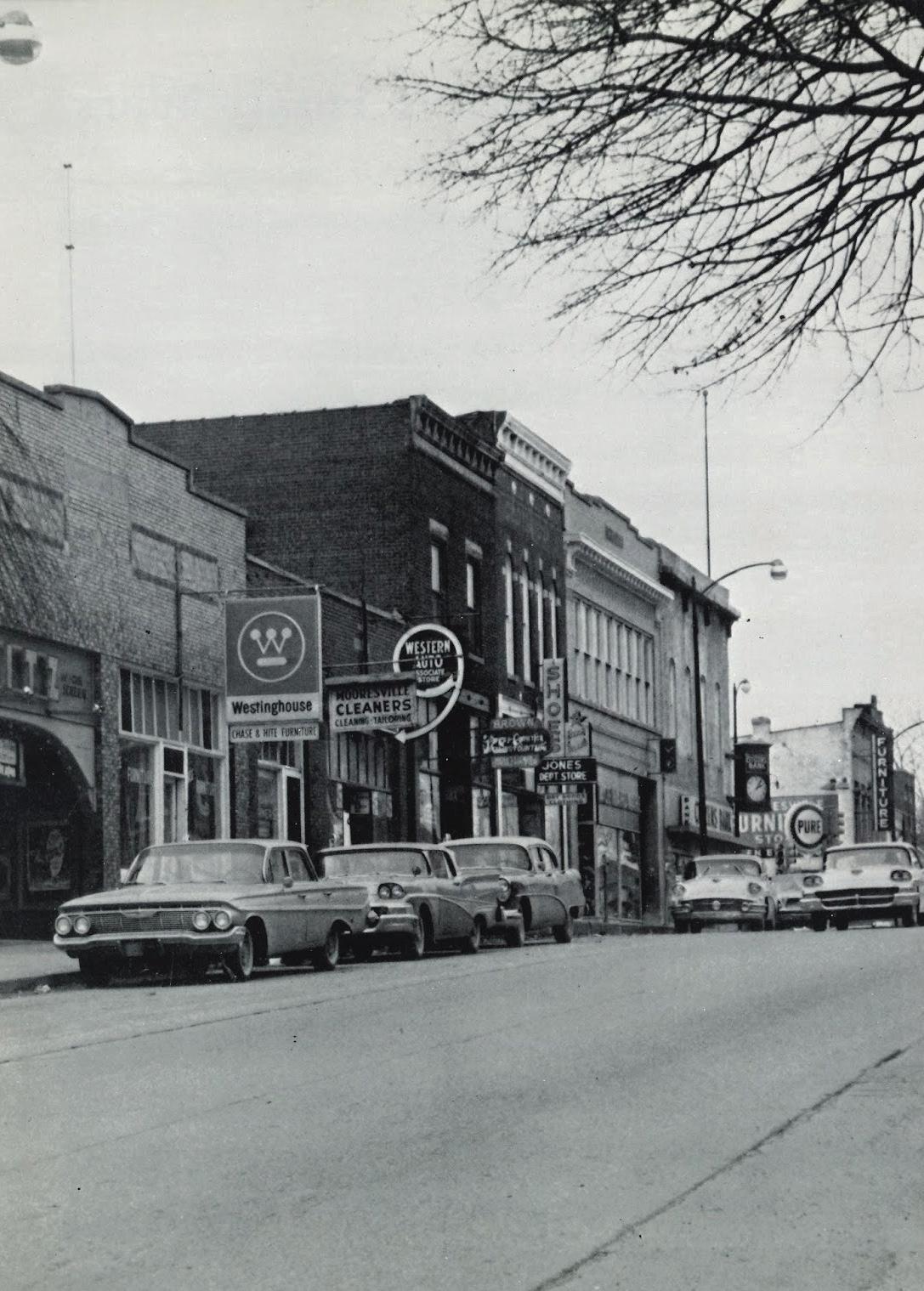
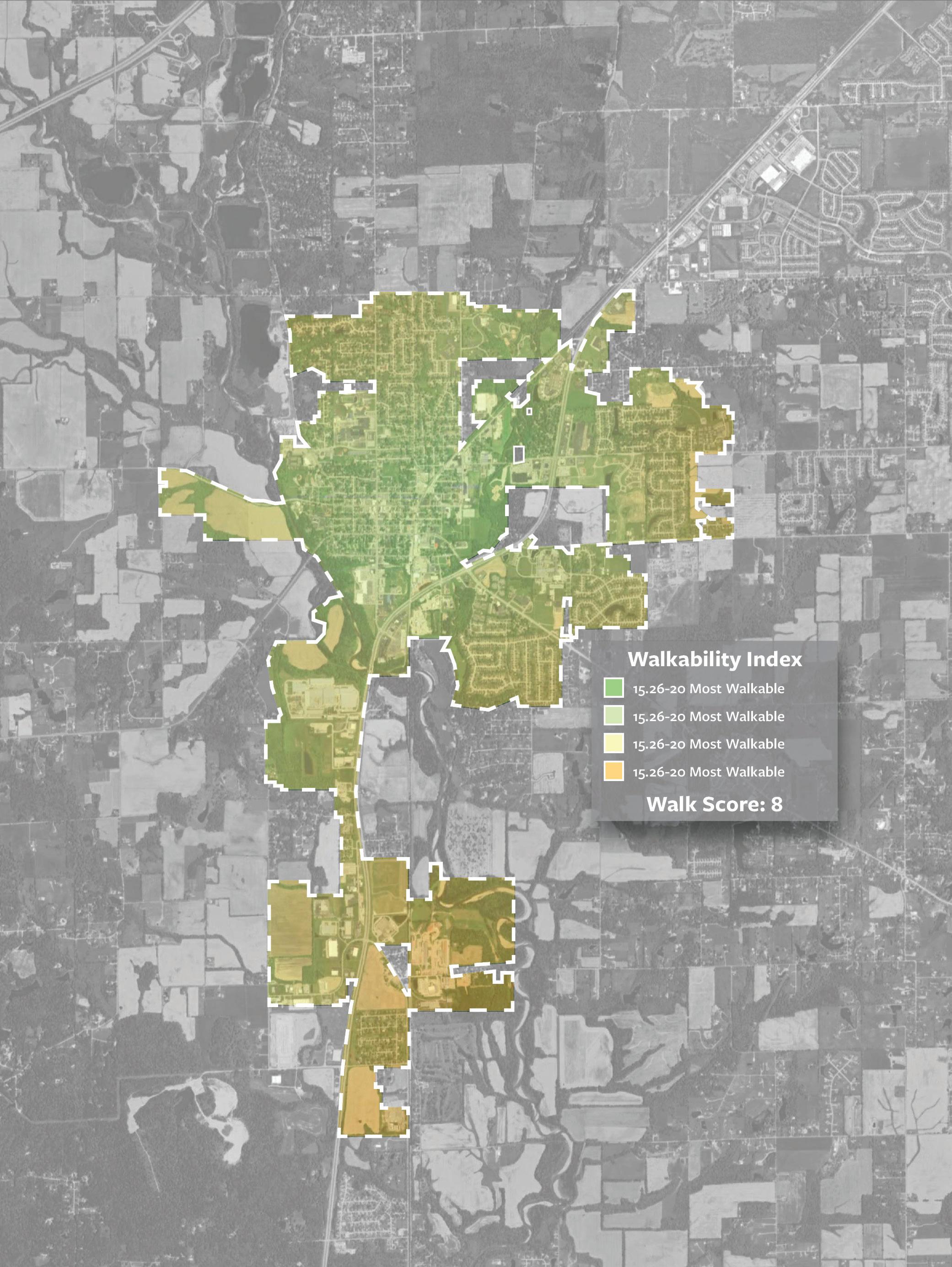
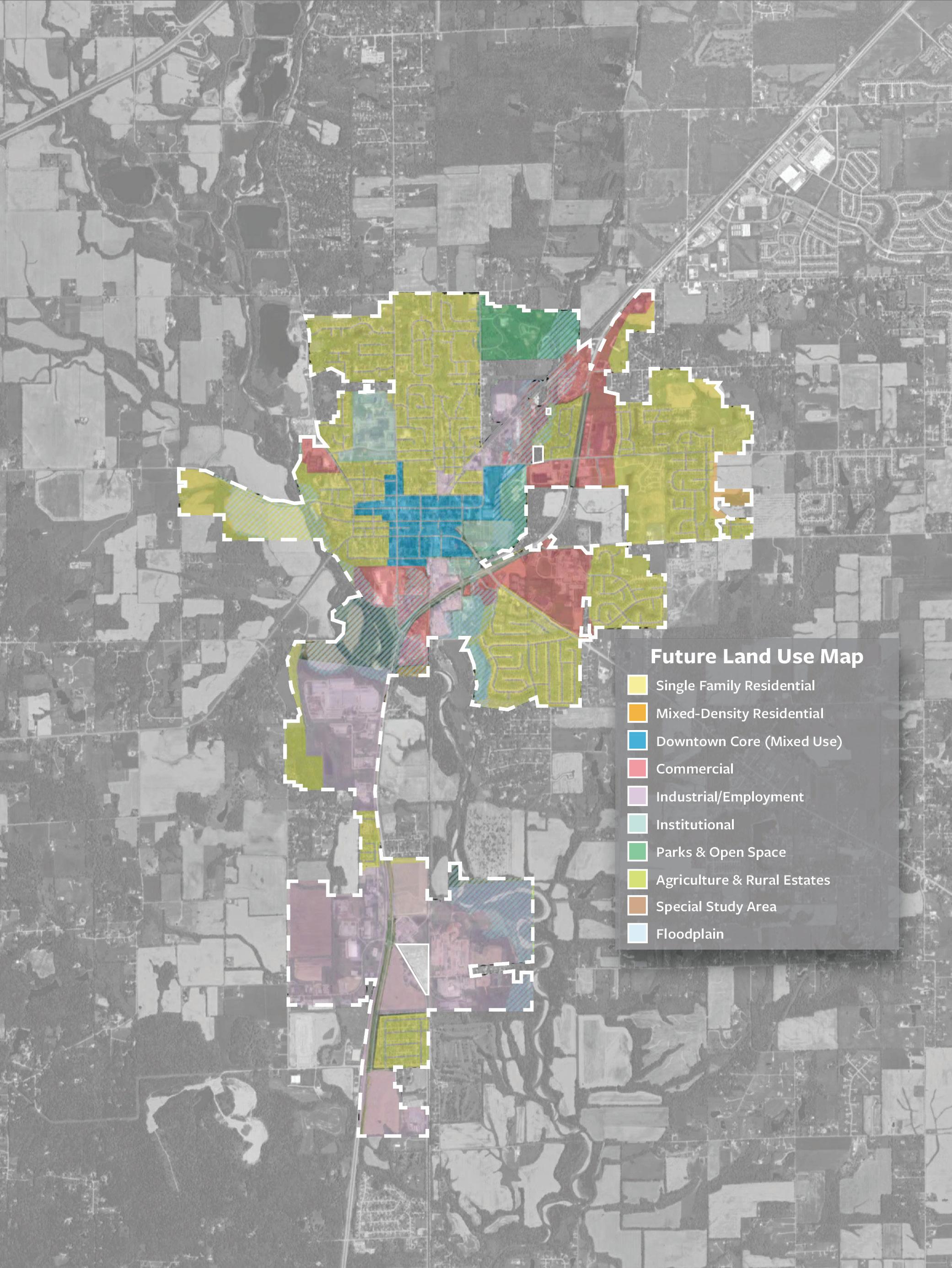
recreational development and neighborhood connectivity. Active transportation is also emphasized in the Plan’s Mobility and Access chapter. Mooresville currently maintains 3.1 miles of multi-use trails, and community feedback gathered during the comprehensive planning and MPRD master planning processes indicate widespread support for trail expansion. Priorities include safe connections between parks and neighborhoods, school routes, and links to regional trail systems like the planned Indy Greenways and the White River Trail. These improvements align with MPRD’s goal of fostering active lifestyles, environmental stewardship, and equitable access.
Lastly, the Comprehensive Plan acknowledges the importance of modern digital infrastructure, especially in the context of remote work, online education, and access to public information. As MPRD explores digital engagement tools, online registrations, and virtual programming, highspeed internet access will be critical for ensuring equitable participation across all parts of town.
Together, these systems - water, sewer, broadband, roads, and trails - are more than functional assets. They are the underlying support structure for a thriving, connected, and resilient community. As the MPRD continues to plan for the future, the integration of parks into broader land use and infrastructure strategies will be essential - not only to improve access, but to ensure that parks remain central to Mooresville’s growth, livability, and quality of life. In addition to roadways, Mooresville is investing in active transportation options. The town’s 3.1 miles of trails, which connect parks, neighborhoods, and schools, are undergoing upgrades to enhance their usability. These trails support pedestrian and cyclist access, offering safe, eco-friendly alternatives for travel and recreation while enhancing community connectivity. Further expanding this trail network, especially to connections to neighboring trail networks that are under development, will allow Mooresville to attract more visitors into town, creating economic opportunity for local businesses. In addition, with the Town’s significantly large acreage of public open space and natural resources, expanding trails and natural resources allows Mooresville to proudly become a top-destination for the region.
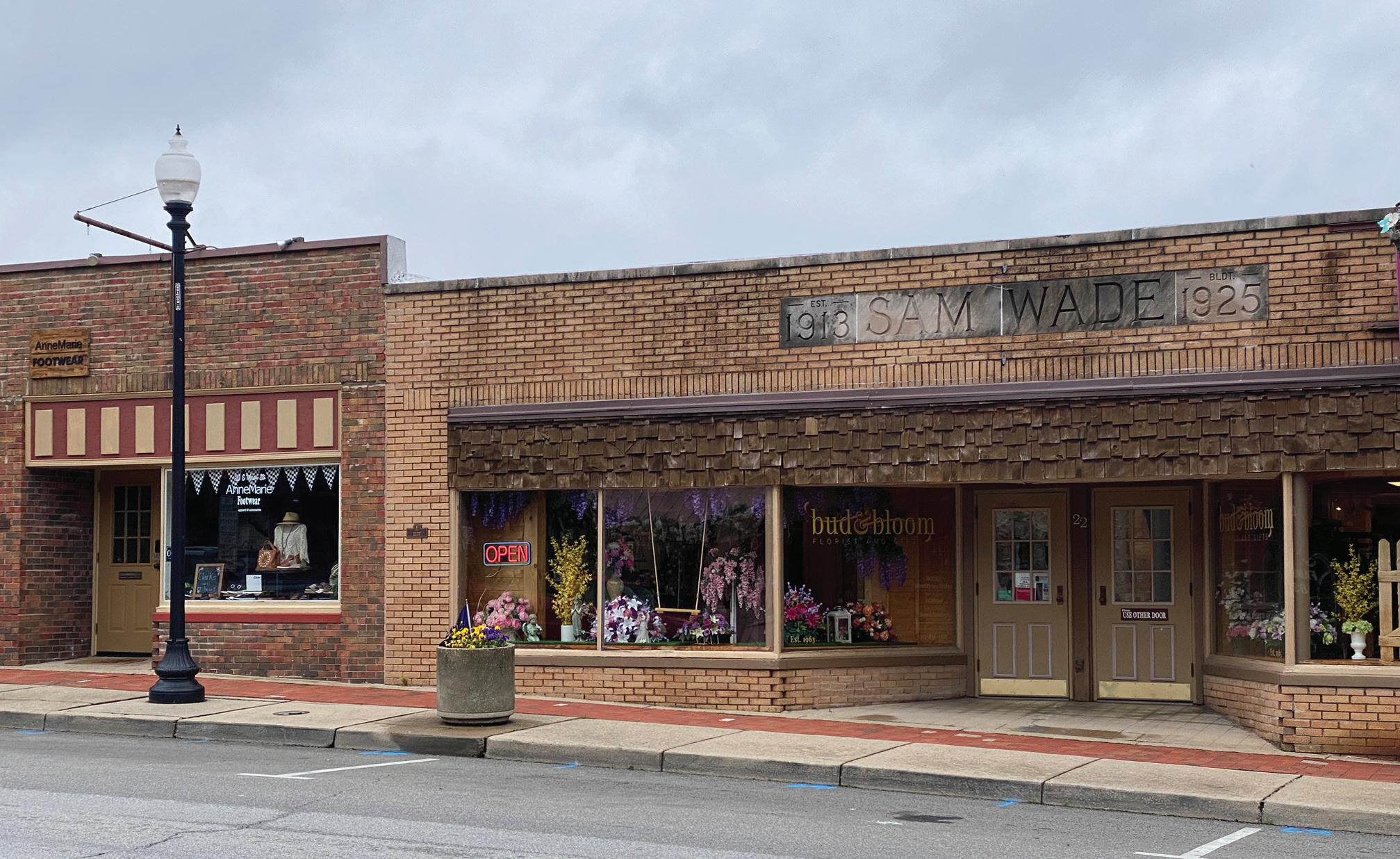
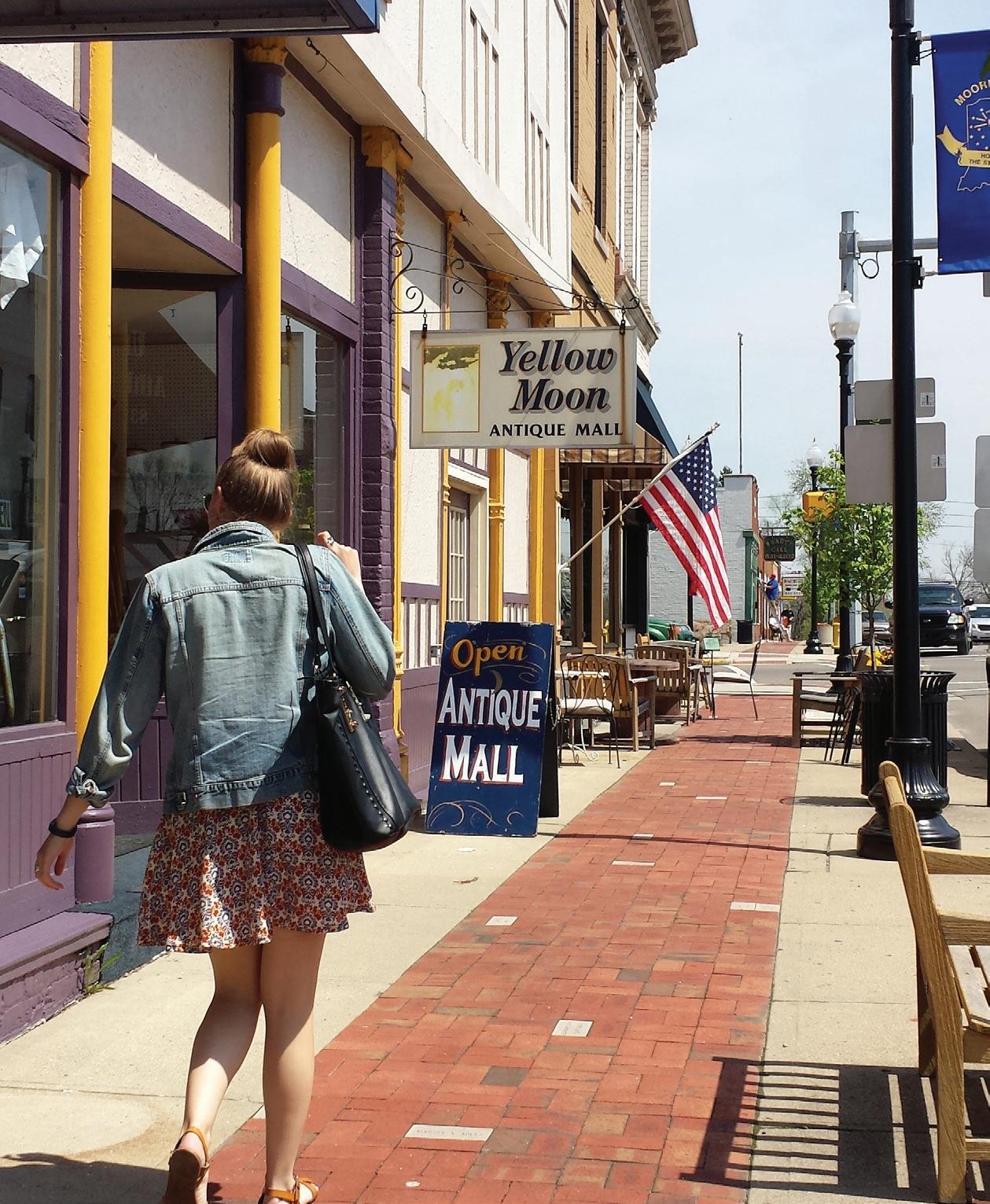
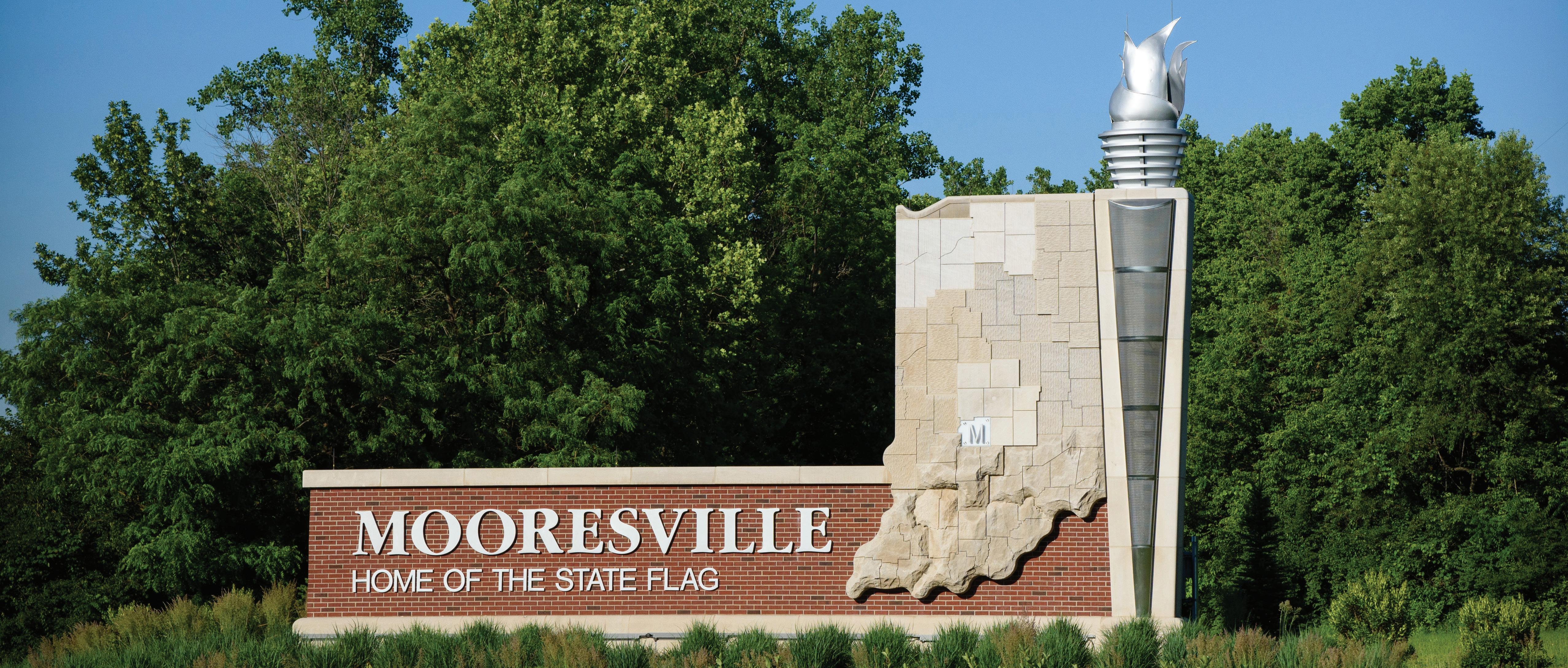
Mooresville is a town rooted in stability and shaped by gradual change - demographically, economically, and socially. With a population of just over 10,000, it stands as the second-largest municipality in Morgan County, following Martinsville. While not experiencing the explosive growth of some Indianapolis suburbs, Mooresville has maintained steady population increases and continues to attract residents seeking small-town charm with access to regional opportunities.
The town’s demographic profile reveals a mature and family-oriented population. The median age is approximately 43 years, notably higher than the Indiana average of 38. This is driven in part by the town’s older adult population: 20.6% of residents are aged 65 and older, a figure significantly above the state average. At the same time, the number of children under five is slightly below average, suggesting shifting generational dynamics and underscoring the importance of familyfriendly and multigenerational spaces within the park system. With 90.3% of adults holding a high school diploma, educational attainment in Mooresville is strong - but only 21% of residents possess a college degree, compared to the Indiana average of 33.4%, pointing to opportunities for greater educational outreach and workforce development.
Mooresville’s racial and ethnic makeup remains predominantly White Non-Hispanic at around 95%, but the town is slowly becoming more diverse, with African American, Hispanic/Latino, and Asian residents making up a growing share. The community’s cultural heritage is reflected in the reported ancestries of its residents, which include English, German, Irish, Italian, and Polish roots. As demographic shifts continue across the region, there is growing potential for MPRD to foster inclusion through bilingual outreach, culturally relevant programming, and public spaces that welcome all.
Households in Mooresville tend to be family-based, with an average household size of 2.49 persons and approximately 69% of households consisting of families. This composition reinforces the importance of community investments in parks, recreation programs, and infrastructure that supports young families, caregivers, and intergenerational activities.
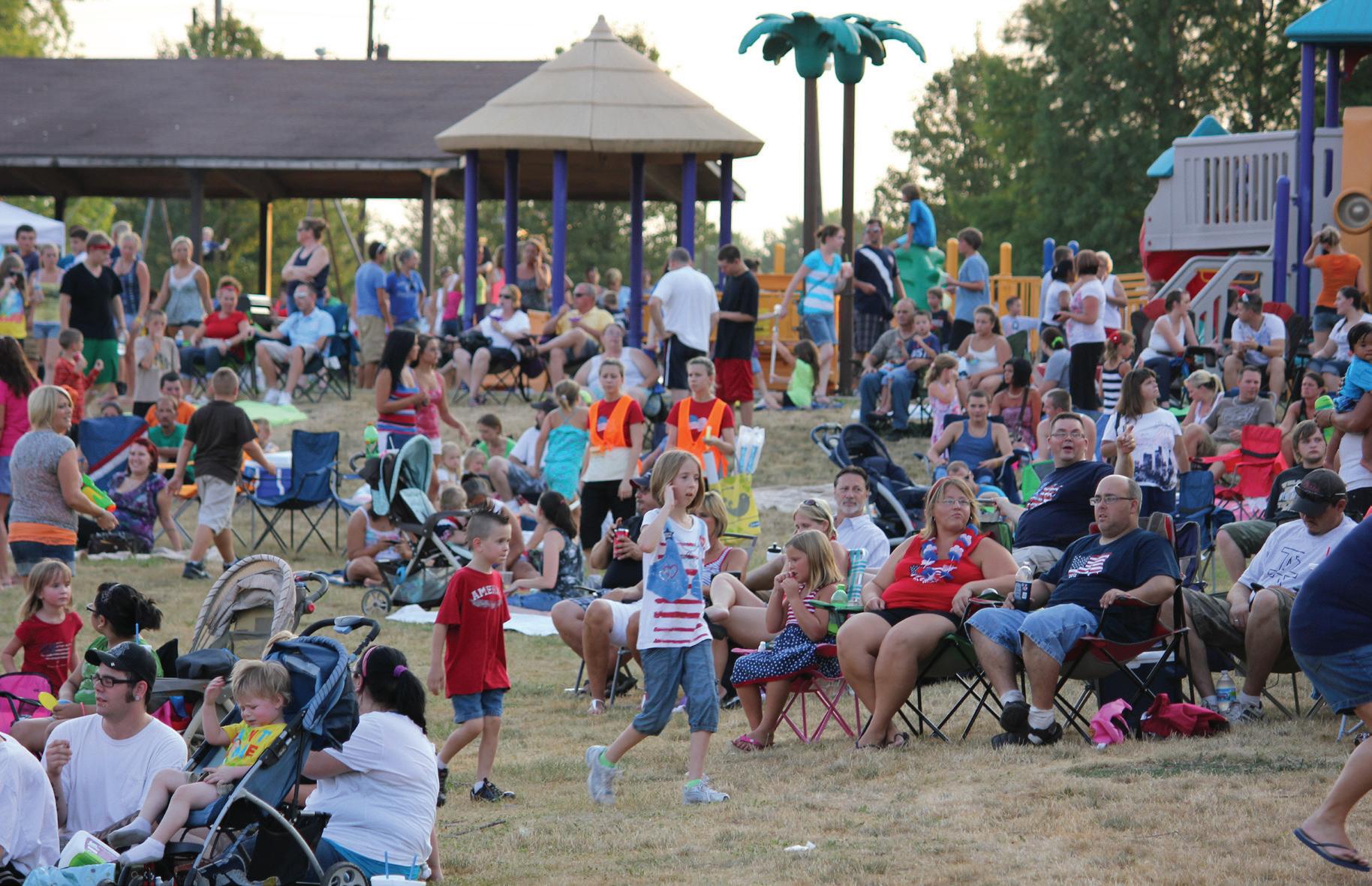
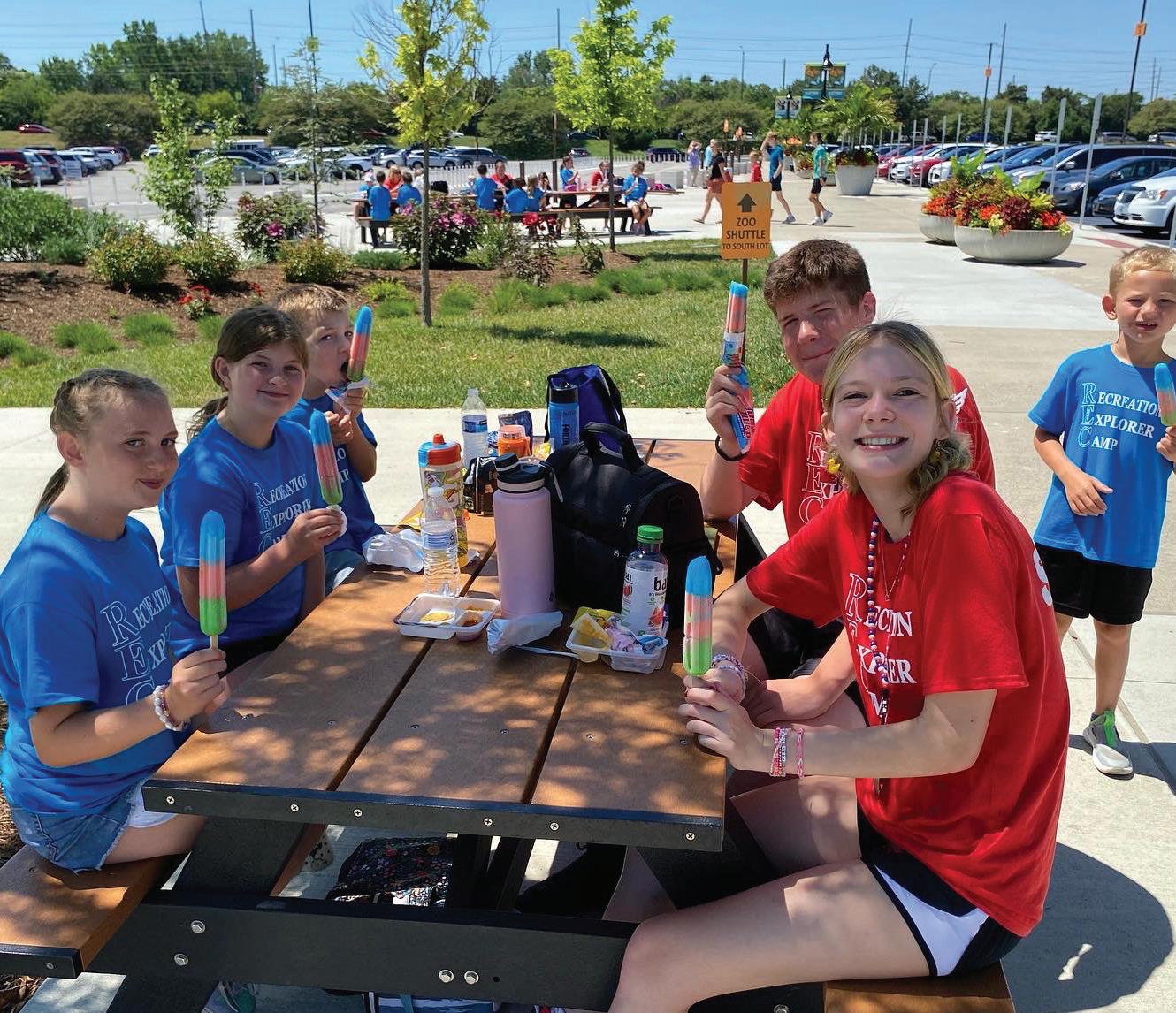
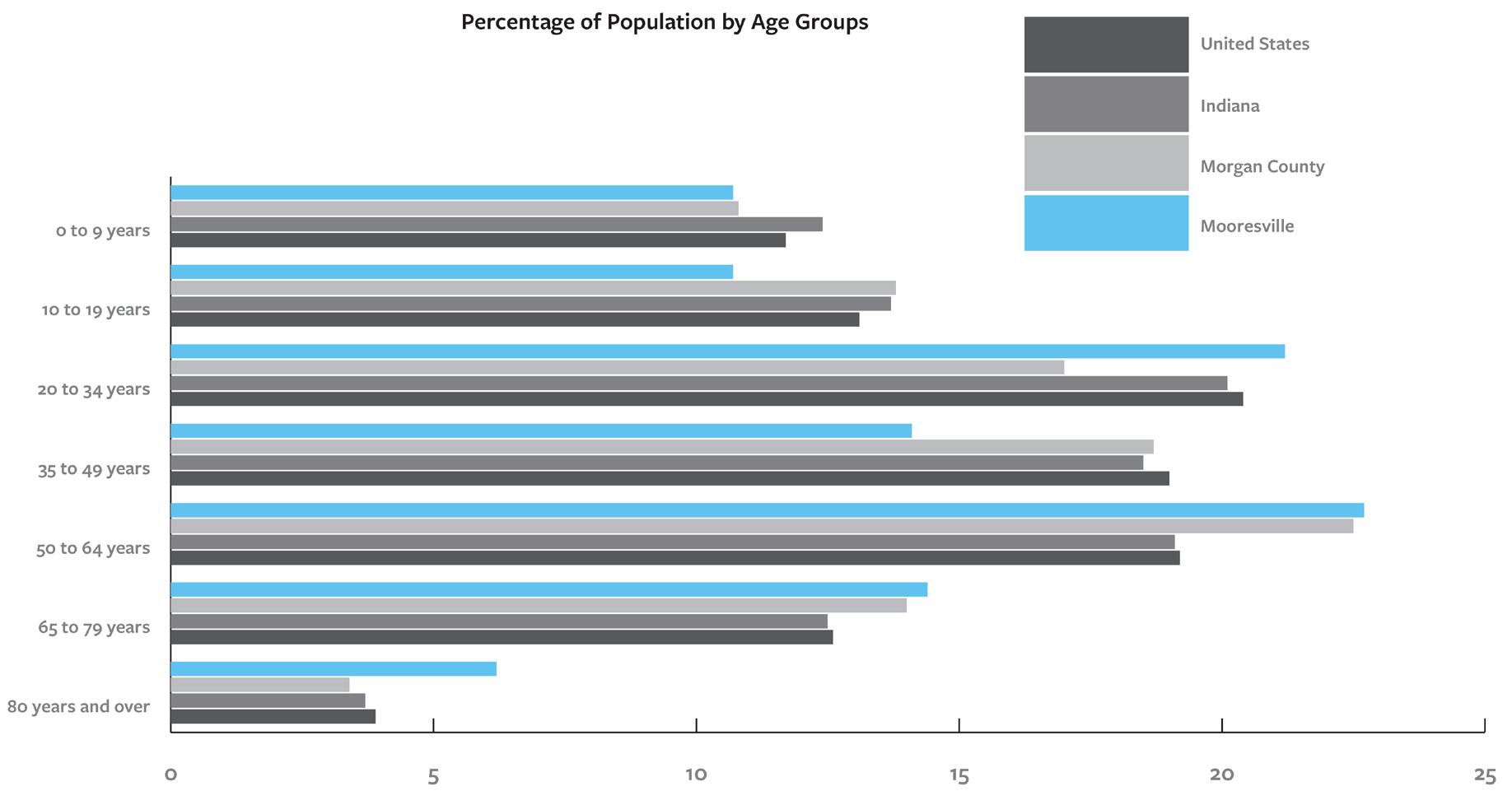
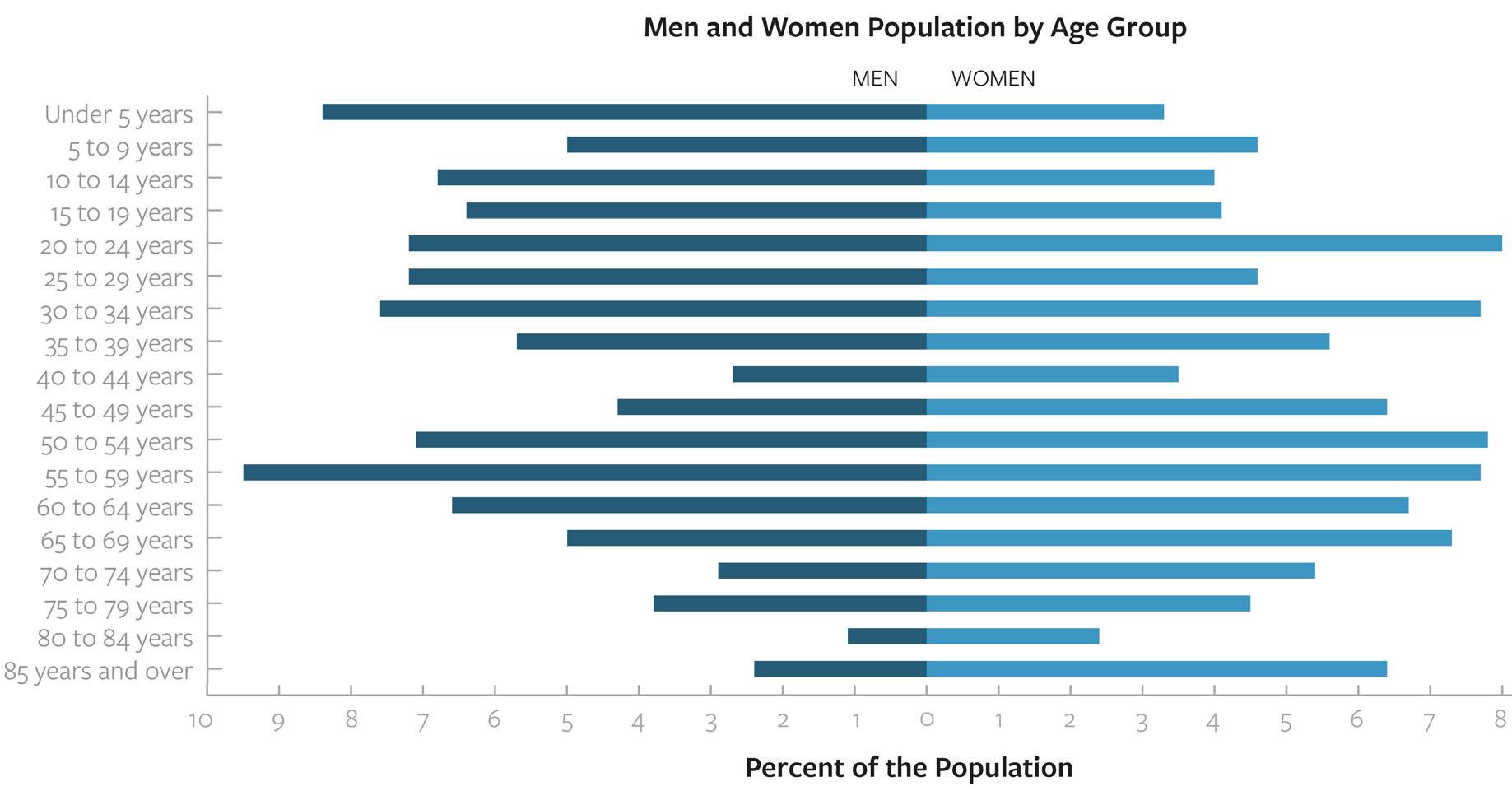

Economically, Mooresville enjoys a median household income of $70,228, modestly above the Indiana average. Its diverse economy includes healthcare, manufacturing, transportation, and retail, with anchor employers such as Nice-Pak Products Inc., TOA (USA) LLC, and Franciscan Health Mooresville. These employers not only stabilize the local economy but also shape Mooresville’s role as an employment hub for nearby communities.
According to the U.S. Census Bureau’s OnTheMap tool, Mooresville sees over 5,000 commuters entering the town for work each day, while a slightly smaller number of residents commute outward for employment. This dynamic is critical: the inflow of non-resident workers contributes significantly to the town’s daytime population and economy, increasing demand on infrastructure, roads, and public amenities. Meanwhile, the average resident commute is 25.8 minutes, reflecting the town’s position within the larger Indianapolis labor market and the economic linkages it shares with the region.
These commuter trends have planning implications for both MPRD and the town at large. The daily influx of workers means that parks and open spaces may serve both residents and a broader daytime populationcreating a need for parks that are flexible, visible, and accessible to all. It also reinforces the importance of creating local employment opportunities, which could reduce outward commutes and deepen local investment in community life.
Despite these strengths, economic disparities persist. Mooresville’s poverty rate of 13.3% is close to state and national averages, but recent increases in povertylevel households signal a need for expanded access to affordable services, free or low-cost recreational programming, and infrastructure investments that support economic mobility. Combined with sluggish income growth (less than 0.3% over the past year), these challenges highlight the need for a parks and recreation system that actively supports wellness, resilience, and community cohesion.
Mooresville’s cost of living index of 87.5 makes it one of the more affordable communities in the region - a quality that continues to attract families, retirees, and remote workers seeking balance and livability. These assets, when paired with strategic investments in trails, parks, and community programming, offer a compelling case for sustainable, place-based growth.
In short, Mooresville’s social and economic context reveals a community that is both grounded and in motion - demographically older but attracting new residents, economically stable yet facing hidden challenges, and geographically positioned for growth while working to protect its small-town identity. MPRD’s role in this landscape is not just to respond to these shifts, but to help shape them - ensuring that parks and recreation continue to be vital tools for equity, quality of life, and long-term community vitality.
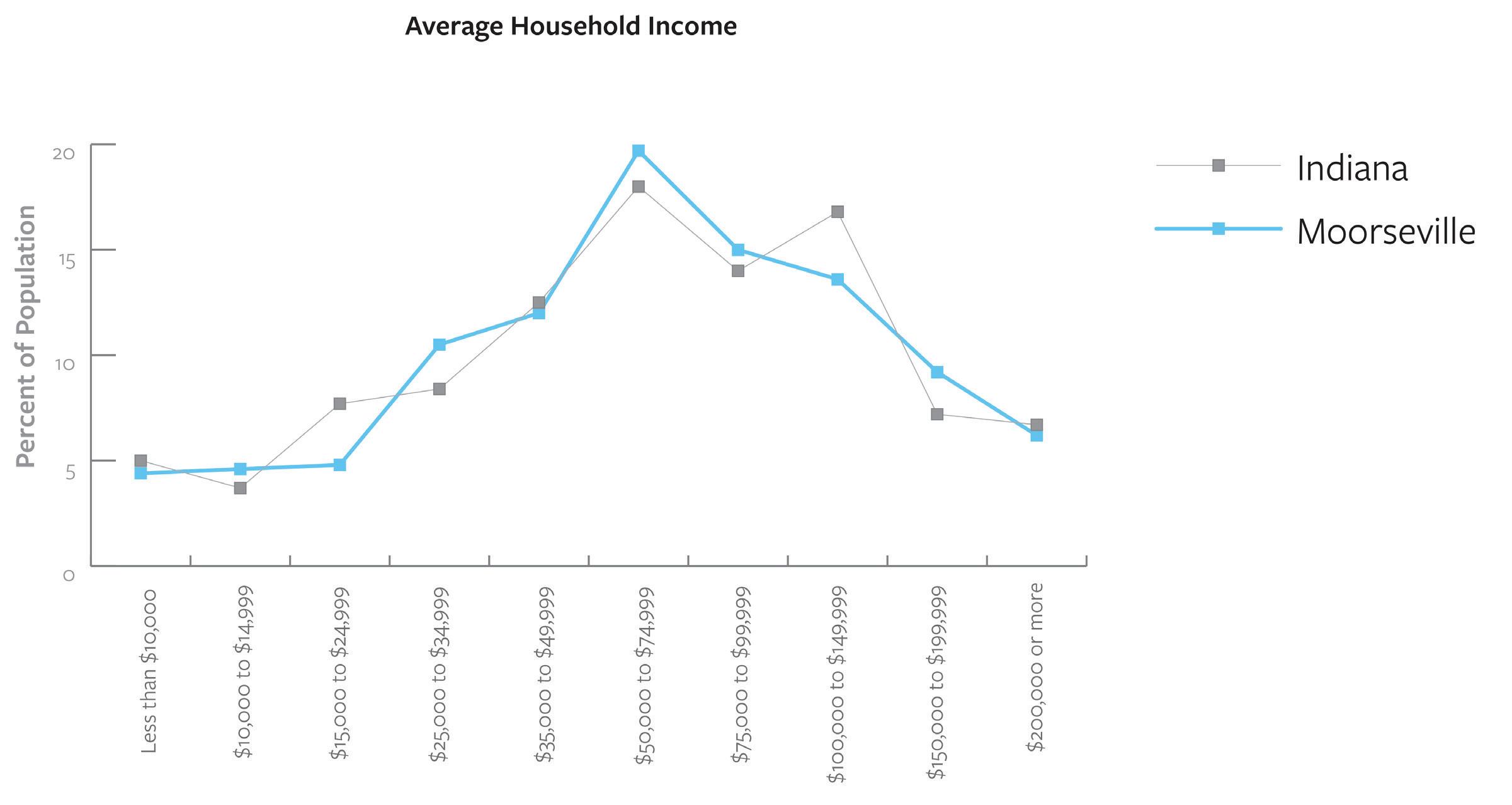
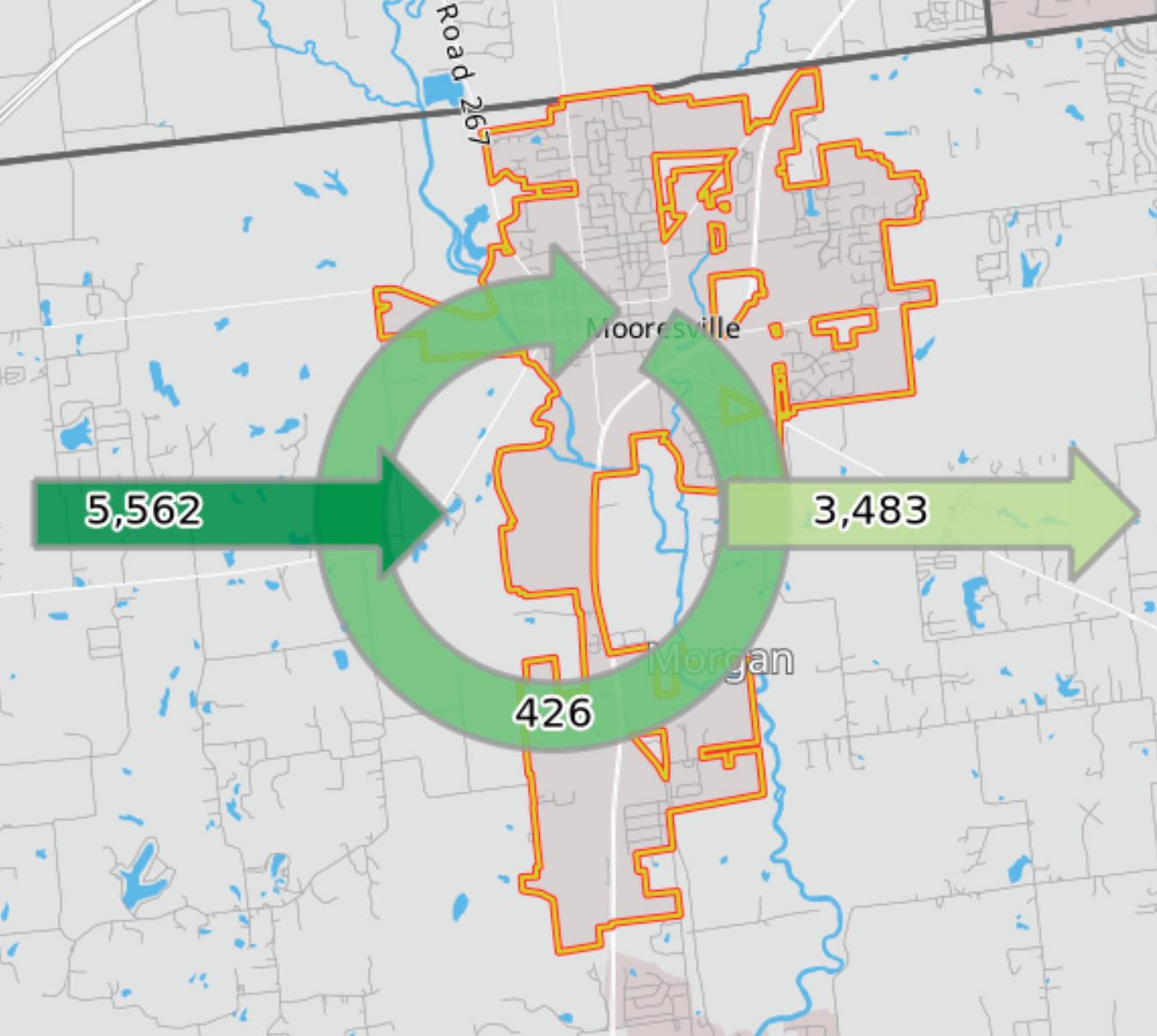
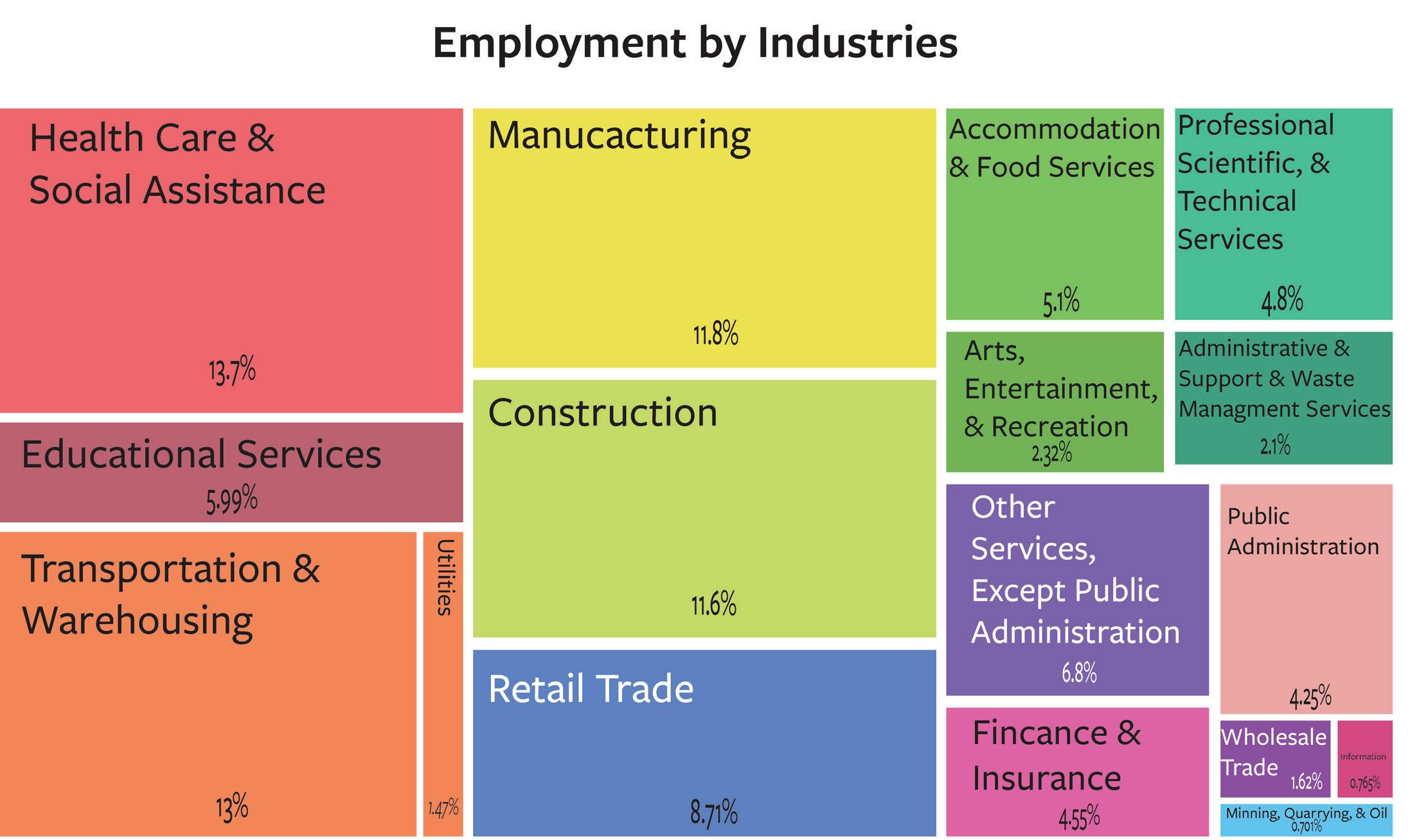
The importance of accessibility and Universal Design in parks and public spaces cannot be overstated. These principles are not simply about compliance with the Americans with Disabilities Act (ADA); they are about creating environments where all peopleregardless of age, ability, or mobility - can engage fully in community life. Accessible infrastructure fosters social connection, independence, and physical and mental well-being, making it a cornerstone of equity in the built environment.
MPRD recognizes that accessibility is not a one-time checkbox, but a continual process rooted in community values. From playgrounds and picnic shelters to restrooms and trail systems, Universal Design is being integrated into both new construction and the renovation of existing facilities. The department’s approach reflects a broader commitment: to create inclusive spaces where people of all abilities can play, move, and connect together.
An accessible playground, for instance, becomes more than just equipment - it becomes a shared social environment where children of all abilities can learn, collaborate, and grow side by side. A wide, gently graded trail not only supports wheelchair users, but also accommodates strollers, cyclists, and older adults with limited mobility. These elements don’t just serve individuals with disabilities, they benefit the entire community. MPRD has made steady progress in this area and continues to incorporate inclusive features as part of its ongoing capital improvements:
Pioneer Park
• In 2020-2021, the playground received a new accessible play surface, improving safety and accessibility
• Planned improvements are in the works (2024-2025) including several accessibility enhancements like wheelchair accessible pickleball courts, additional parking spaces, and
more playground enhancements.
Old Town Park
• In Spring 2024, a new playground was installed, featuring accessible play equipment and surfacing.
• New bathroom facility with universal access
These upgrades reflect a philosophy of equity, inclusion, and forward-thinking design. MPRD also conducts regular assessments of its facilities to identify ADA deficiencies and opportunities for improvement. In addition to technical audits, community engagement plays a key role. By listening to residents with disabilities and their caregivers, the department ensures that future investments align with real needs and lived experiences.
Mooresville’s approach to accessibility is also informed by broader best practices from organizations like the National Recreation and Park Association (NRPA) and PlayCore’s Center for Outreach, Research, and Education. Where possible, MPRD incorporates not only physical accessibility, but also sensory-friendly elements, clear wayfinding, and social inclusion opportunities, building spaces where neurodivergent users and those with cognitive disabilities also feel welcomed and supported.
Looking ahead, Universal Design will continue to guide MPRD’s strategic framework. As new development extends westward and as the population diversifies in age and ability, every park - whether large or small - must be considered through the lens of accessibility. By embedding inclusive design into planning, policy, and community outreach, Mooresville is not just meeting its legal obligations - it is building a culture of care, where everyone has the opportunity to thrive, connect, and enjoy the natural and recreational spaces that make Mooresville a great place to call home.
In accordance with the Americans with Disabilities Act (ADA), MPRD has established a grievance procedure to ensure that individuals with disabilities have a clear and accessible way to report barriers, make recommendations, or file
complaints related to accessibility. This process promotes transparency, responsiveness, and continual improvement of parks and programs.
Individuals who believe they have been subject to discrimination or have identified a physical or programmatic barrier may submit a written grievance to the Mooresville ADA Coordinator.
David Moore, ADA Coordinator (317) 831-9547 info@mooresvilleparks.com
Anyone who requires an auxiliary aid or service for effective communication, or a modification of policies or procedures to participate in a program, service, or activity of the Town of Mooresville shall also contact the ADA Coordinator. Complaints that a program, service, or activity of the Town of Mooresville is not accessible to persons with disabilities should be directed to the ADA Coordinator. The Town of Mooresville will not place a surcharge on a particular individual with a disability or any group of individuals with disabilities to cover the cost of providing auxiliary aids/ services or reasonable modifications of policy.
Aging Population Needs
• Over 20% of Mooresville residents are 65+, yet many parks lack accessible or age-friendly features like shaded seating, smooth walking paths, or passive recreation spaces.
• While recent park upgrades have improved accessibility, older facilities still lack compliant features, creating barriers for people with disabilities.
Economic Inequities
• Rising poverty and slow income growth may limit residents’ ability to participate in fee-based programs
or access services without financial assistance.
Uneven Park Access
• Growth on the west side of town is outpacing the park system’s reach, leaving newer neighborhoods underserved and increasing pressure on Pioneer Park.
Outward Commuting Reduces Local Engagement
• Longer commute times reduce residents’ availability for local programs, making flexible and well-timed offerings more critical.
Commitment to Universal Design
• MPRD is proactively incorporating accessibility into projects - offering a strong foundation to build a more inclusive, equitable system.
Growing Cultural Diversity
• Demographic shifts create opportunities to offer culturally relevant programming, inclusive outreach, and community-driven events.
Serving Commuters and Daytime Users
• With over 5,000 people commuting into town each day, downtown parks and trails can serve dual purposes - enhancing visibility and use during the workday.
High Community Value on Parks
• Mooresville’s civic pride and strong household incomes support continued investment in high-quality, inclusive parks and programs.
Opportunity to Expand Trail Network
• Strategic trail expansion can improve connectivity, reduce reliance on vehicles, and make parks more accessible to people of all abilities.
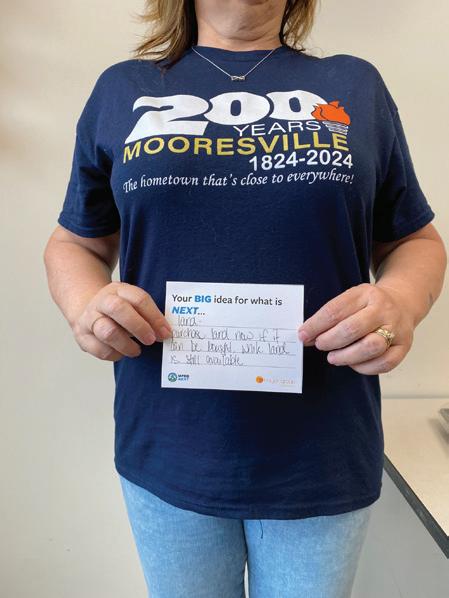
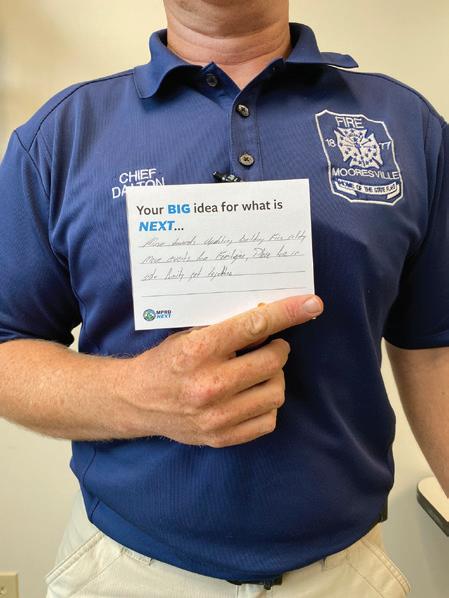
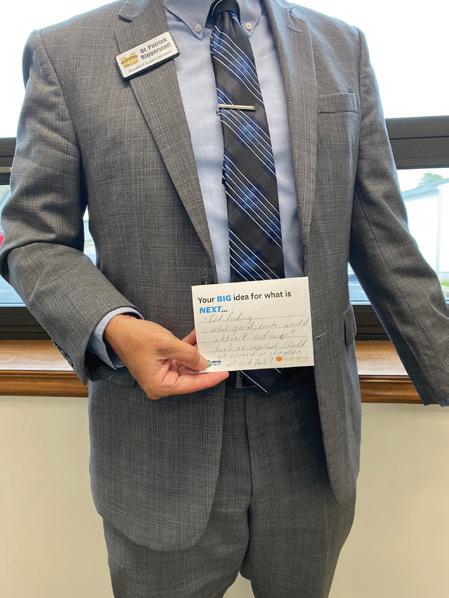
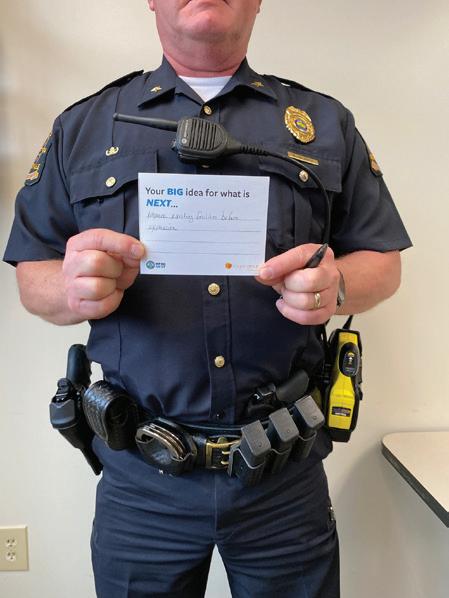
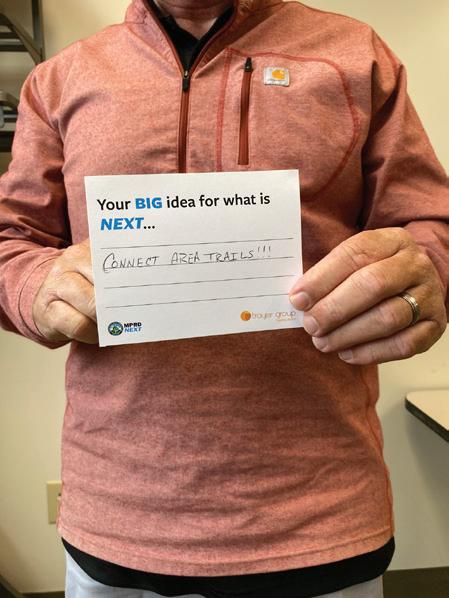
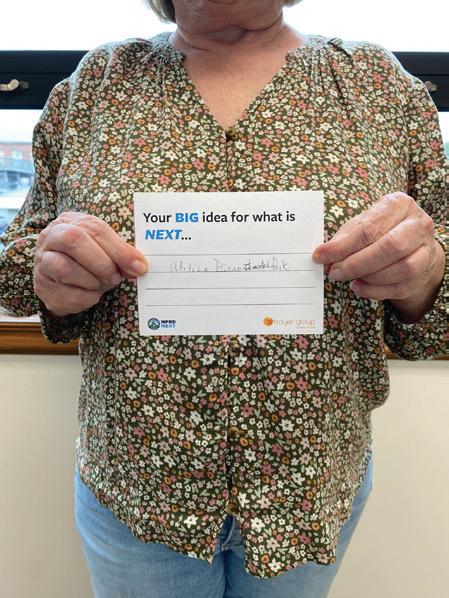
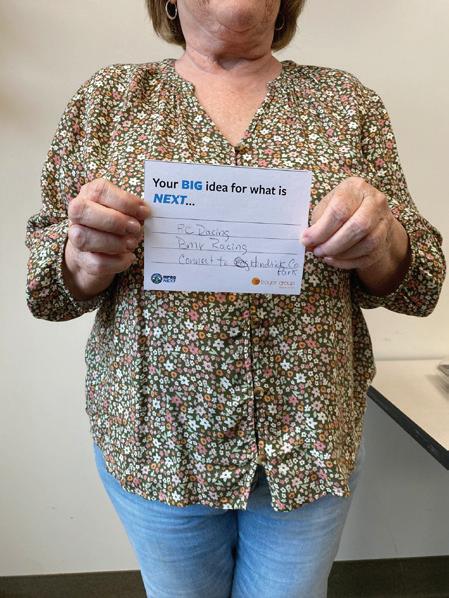
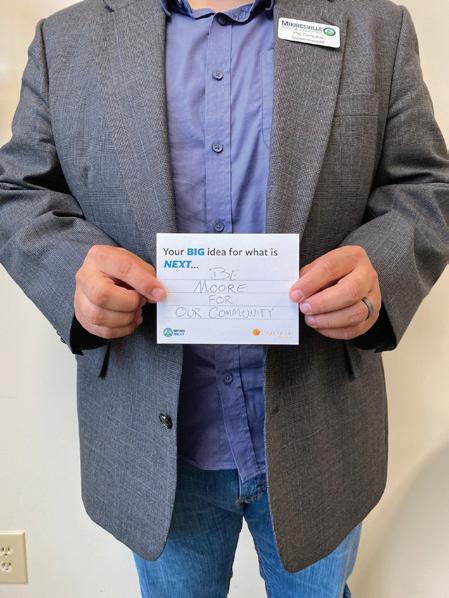
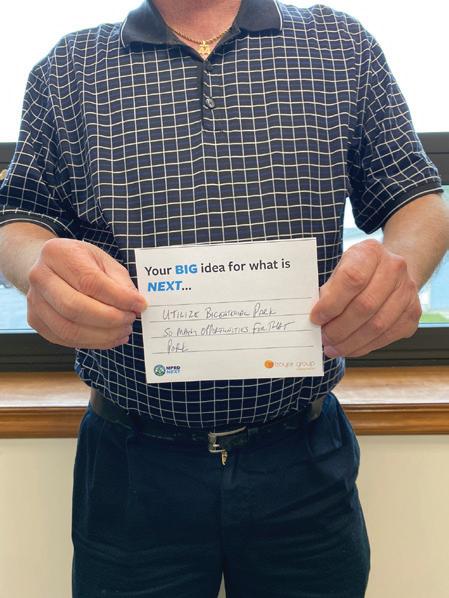
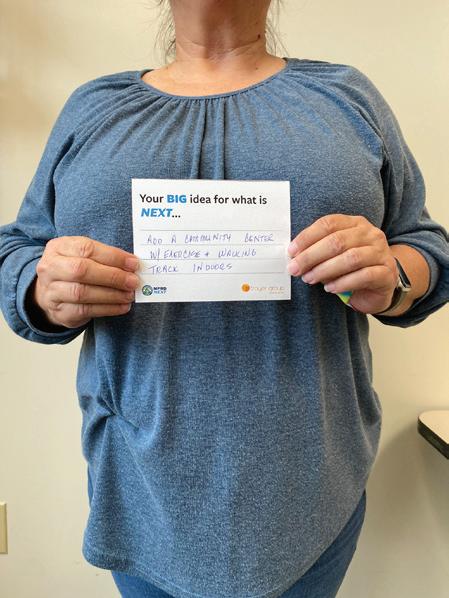
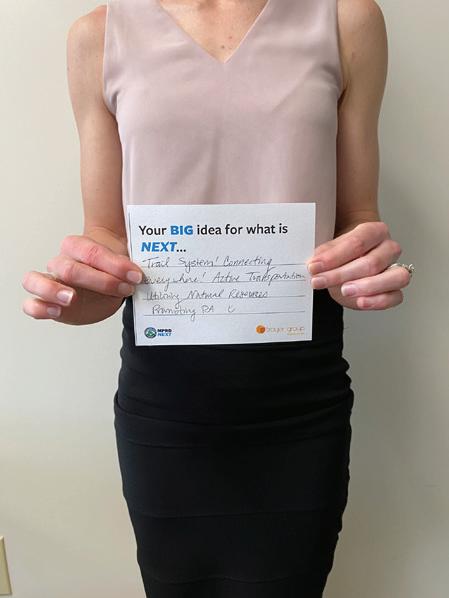
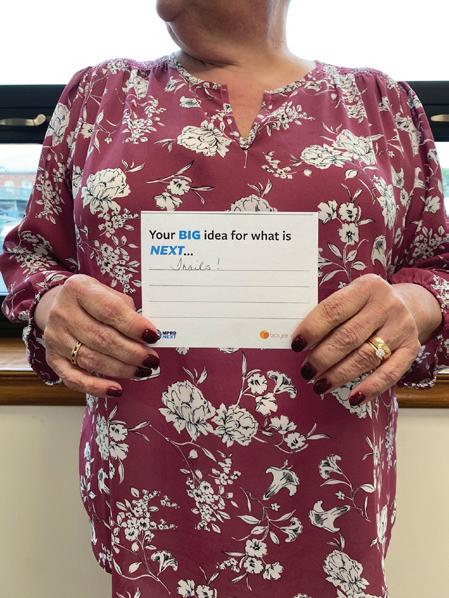
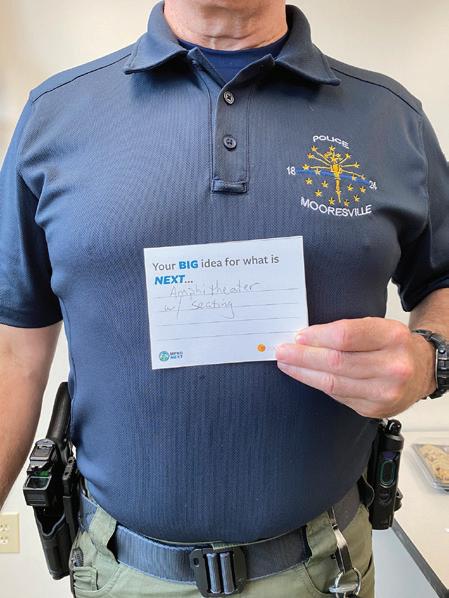
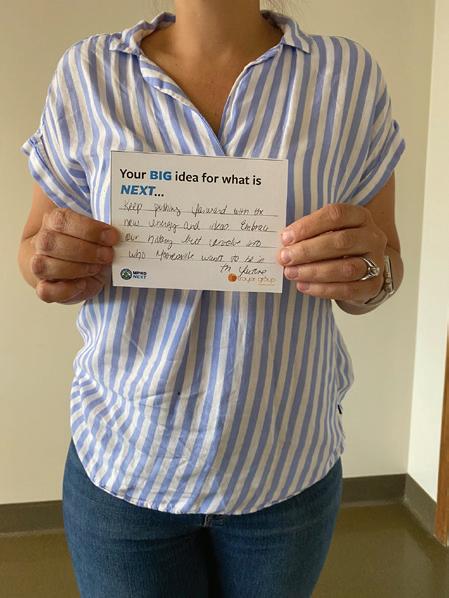
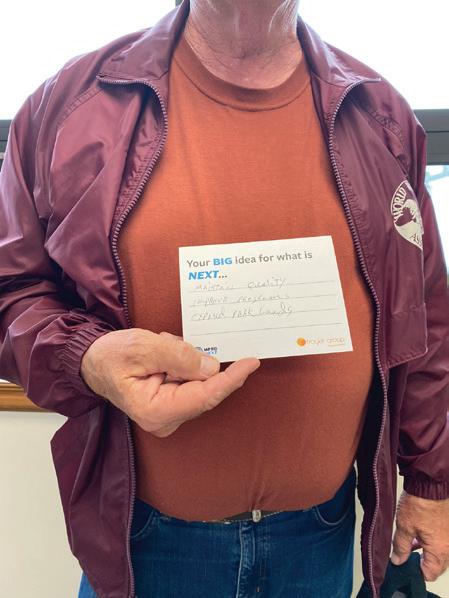
A successful public involvement process accomplishes several important tasks: it gathers input about the parks and feedback on proposed ideas, increases community support for parks and recreation, and expands awareness of what Mooresville’s parks system has to offer. With these goals in mind, the MPRD and the planning team implemented a multifaceted public engagement strategy aimed at reaching a wide range of residents, stakeholders, and community partners.
While stakeholder groups played a central role in shaping this master plan, it was the broad and meaningful participation of the public that helped identify key themes and action items. Several methods of outreach were used to ensure that residents of Mooresville had ample opportunity to share their experiences, voice concerns, and contribute ideas for the future. This section outlines the methodology and results of the engagement strategies used during the planning process.
To begin, the planning team conducted separate workshops and listening sessions with MPRD staff, Town leadership, and partner organizations. These conversations helped to establish a deeper understanding of the department’s operational strengths, challenges, and evolving needs. Discussions covered topics such as staffing capacity, maintenance needs, internal goals, and the desire for more inclusive programming. Input from advisory and stakeholder groups helped to shape early plan priorities and validate the feasibility of proposed strategies.
The team also designed and distributed an online survey to gather input from the broader community. The survey was promoted through MPRD’s website, the Town’s digital channels, social media, newsletters, and at in-person events. Hundreds of responses were
collected, offering insight into current usage patterns, amenity preferences, accessibility concerns, and future programming desires. Open-ended questions gave residents the opportunity to elaborate on their experiences and priorities, and all responses were reviewed both quantitatively and qualitatively to identify trends and emerging themes.
To expand the plan’s reach beyond digital audiences, additional engagement was conducted at community events and informal public pop-ups. Using low-barrier tools like dot voting, comment boards, and conversation-based prompts, these in-person outreach moments captured valuable feedback - especially from those who may not have had time to complete a full survey.
Together, these layers of engagement provided a clear window into the community’s vision for the future of Mooresville parks. Whether through surveys, stakeholder interviews, or public events, feedback consistently reflected a desire for both continuity and transformation - preserving what’s most loved about Mooresville while embracing new opportunities to grow and improve the park system.
Several key themes emerged repeatedly throughout the engagement process, helping to define the strategic direction of this plan:
Residents expressed strong interest in programming and events that welcome all ages, backgrounds, and abilities. There is a growing desire to make Mooresville parks inclusive to all, while also offering unique experiences that draw regional visitors and reflect the Town’s cultural fabric.
The community placed high value on improving trail connections across town and preserving the natural resources that define Mooresville’s identity. Future planning should prioritize sustainable growth that enhances ecological health and access to open space.
A need for increased staffing, better facility upkeep, and a stronger focus on everyday maintenance was a consistent concern. Residents recognized that growing use and expectations require MPRD to have the resources and staff capacity to deliver a high level of service.
Upgrades to existing parks - such as more restrooms, lighting, and play equipment - were frequently mentioned, as was interest in developing new community assets.
Aspirational ideas like an indoor aquatic center or a yearround community recreational facility reflect a desire to serve residents of all ages through all seasons.
Mooresville’s pride in its history and heritage came through strongly, with many residents expressing a desire to highlight the Town’s roots in future park improvements and programming. Integrating interpretive elements, honoring local stories, and preserving historic character were common priorities.
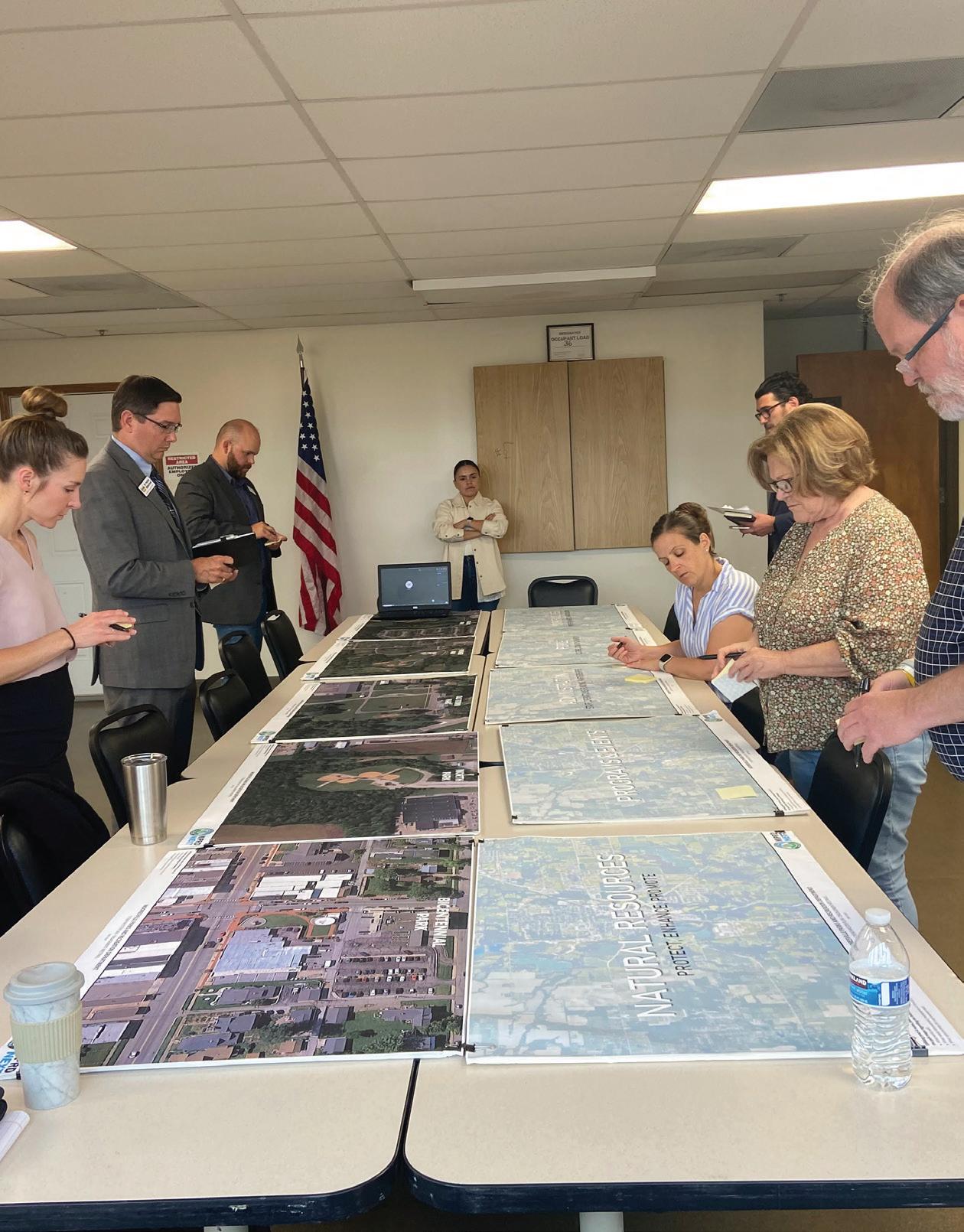
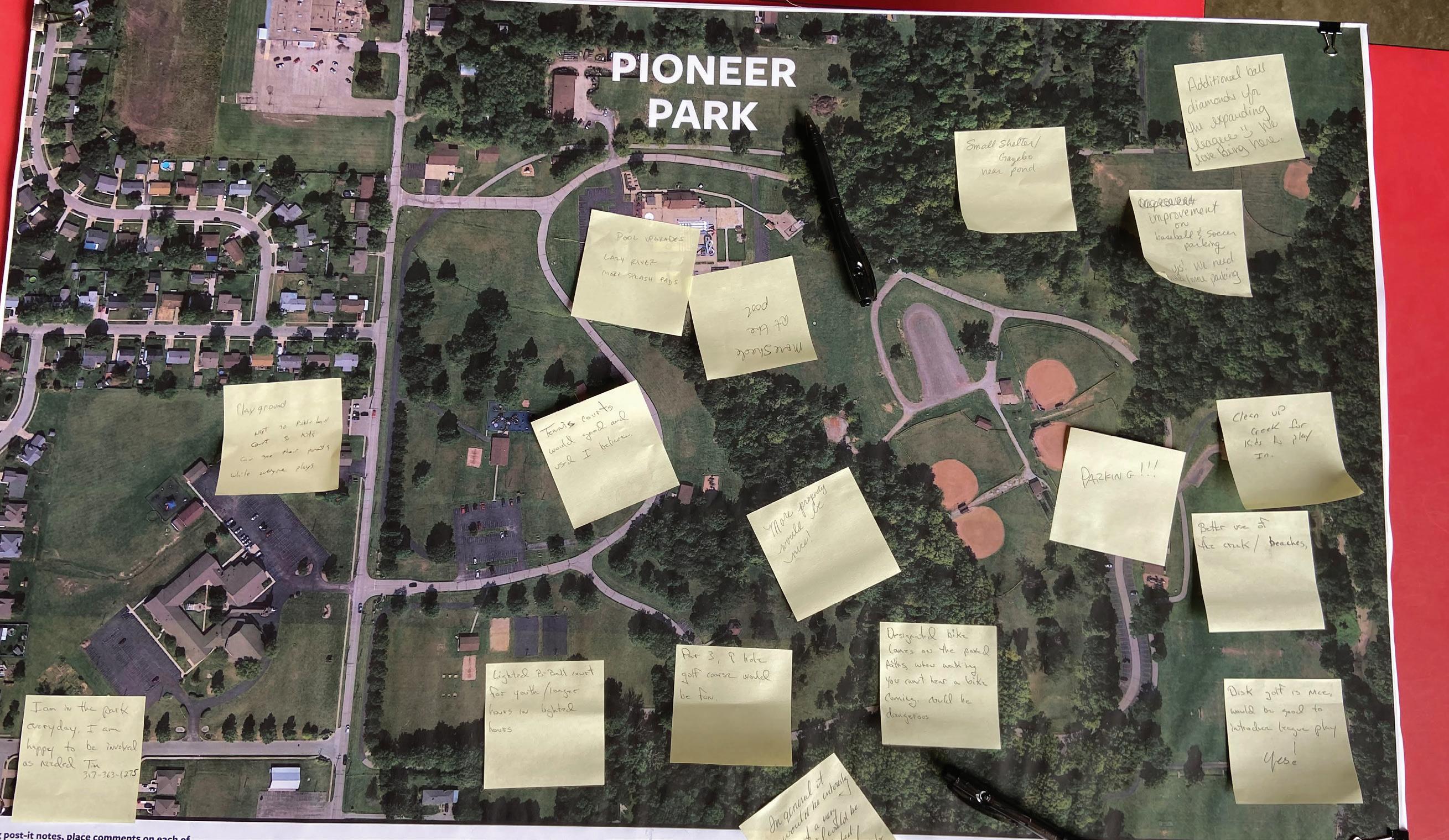
Several stakeholder meetings were held in May involving key stakeholders groups with a critical interest in the parks.
Stakeholders groups that were interviewed include:
• Fire & Police Department Leadership
• Town Department Heads
• Mooresville Schools Superintendent
• Parks Board
• Community Organizations
• Community Partnership/User Groups
• Public Open House (2 hours, hosted in person at MPRD office)
Meeting Format
Engagement activities created by the project team were used as data collection tools in addition to group discussion with core area question prompts. Each of the meetings were structured similarly, hosted in person with a quick review of the process before diving into new areas, followed by a deeper dive into a set of specific questions. The overarching discussion topics addressed the broad lenses to examine the entire MPRD system and included topic areas of administration, people, natural resources, park facilities, programs and events, as well as for specific parks. Over 320 responses were collected via these three stakeholder meetings.
Modernization and Expansion: Upgrading existing facilities and expanding park amenities are top priorities. This includes both improvements and addition of new features to enhance park experiences.
Community Focus: Engaging the community through diverse events, improving park visibility locally and regionally, and ensuring inclusivity throughout are essential for increasing park utilization and satisfaction.
Environmental and Recreational Connectivity:
Enhancing natural resources, expanding trails, and improving connectivity locally and regionally can help attract new users from Mooresville and beyond. This is critical for promoting outdoor activities and environmental stewardship.
Staffing and Management: Addressing staffing needs and securing adequate funding sources and partnerships are critical to effectively manage MPRD maintenance, operations and programming, as well as for successful implementation of any future plans.
ISSUES IDENTIFIED
Aging Infrastructure and Outdated Facilities:
• Many existing parks and amenities are showing signs of wear, with outdated features that no longer meet current user expectations. The need for modernization is a recurring concern across the system.
Limited Staffing and Resources
• MPRD’s current staff is stretched thin, which limits capacity for daily maintenance, program development, and long-term planning. Stakeholders expressed concern about the ability to grow services without additional personnel and operational support.
Gaps in Trail and Park Connectivity
• Fragmented trail segments and lack of direct access between neighborhoods, schools, and park sites hinder the use of active transportation and limit crosscommunity recreation opportunities.
Visibility and Awareness Challenges
• Despite strong community pride in its parks, stakeholders noted that MPRD could do more to market its offerings and increase public awareness - particularly for underused facilities or seasonal programming.
Limited Indoor and All-Season Facilities
• The absence of indoor recreation space was noted
as a barrier to consistent year-round programming. Stakeholders identified the need for multi-use, flexible spaces that serve families, youth, and seniors all year.
OPPORTUNITIES IDENTIFIED
Modernization and Facility Expansion
• There is strong support for both renovating existing park infrastructure and adding new amenities that reflect modern recreational trends and meet evolving community needs.
• Mooresville has a tight-knit civic culture and history of gathering. Expanding community events, festivals, and cross-generational programs can deepen connection, increase visibility, and build long-term support for parks.
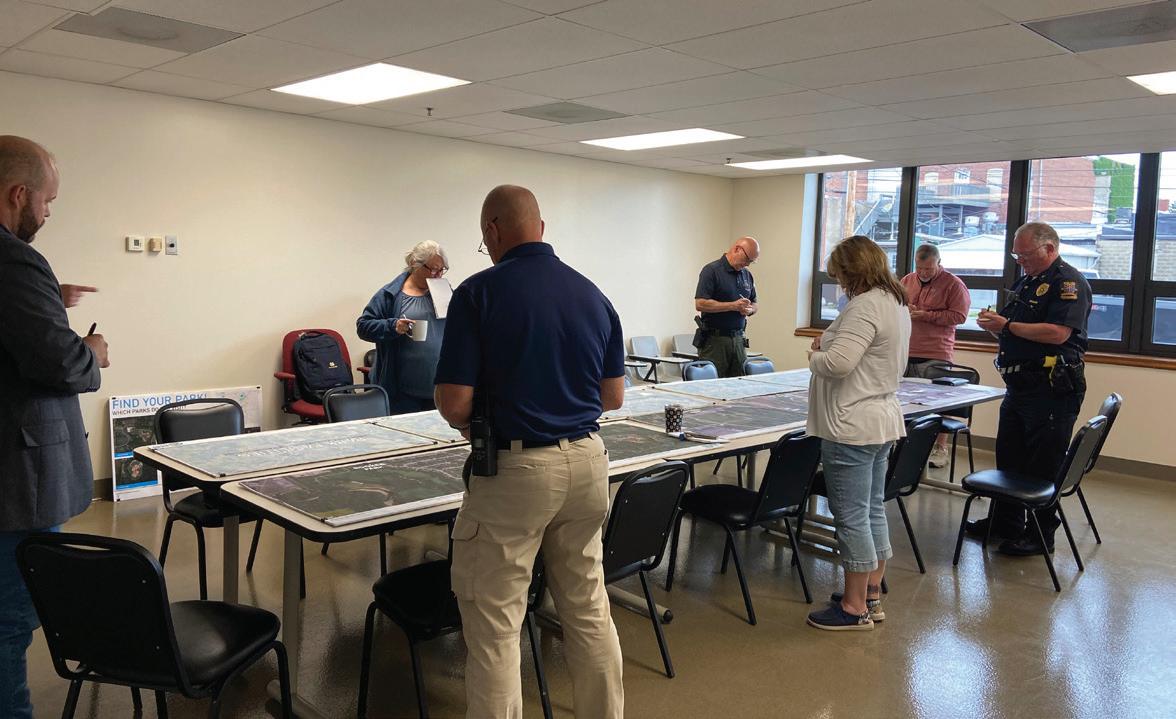
• Stakeholders strongly supported expanding trails and greenways, enhancing local access while connecting to broader regional systems. These investments are seen as ways to improve health outcomes, promote outdoor activity, and elevate environmental responsibility.
• There is an opportunity to build new partnershipswith schools, civic groups, businesses, and regional partners - to expand capacity and secure diverse funding for future projects.
• The next phase of park system development offers a chance to prioritize equity and accessibility. Stakeholders emphasized the importance of designing parks and programs that reflect the needs of all residents, regardless of age, ability, or income.
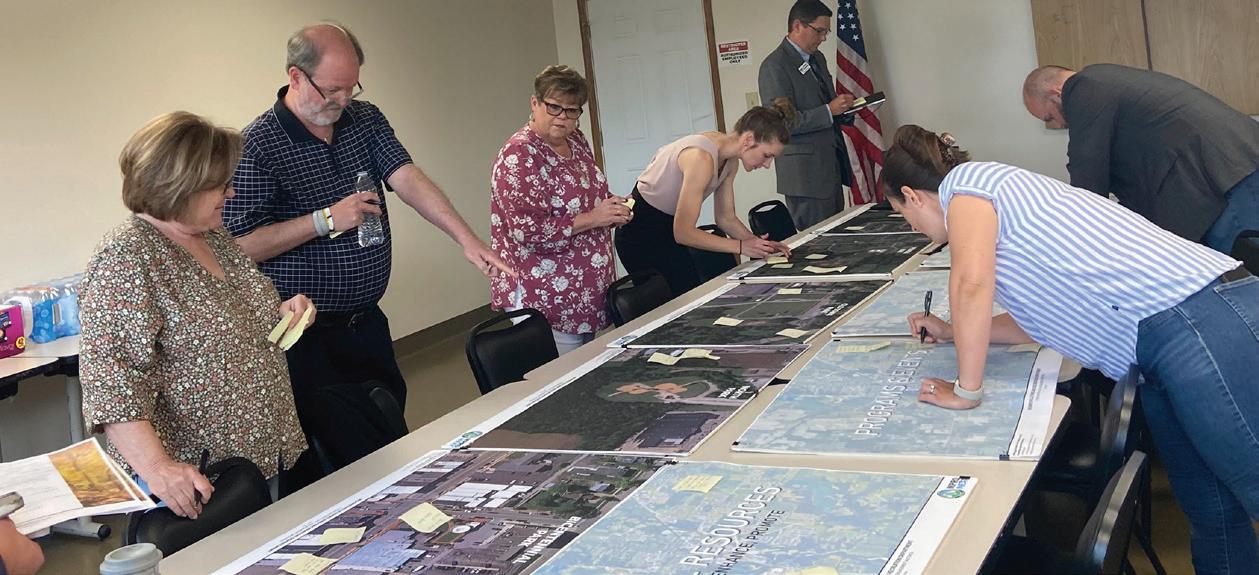
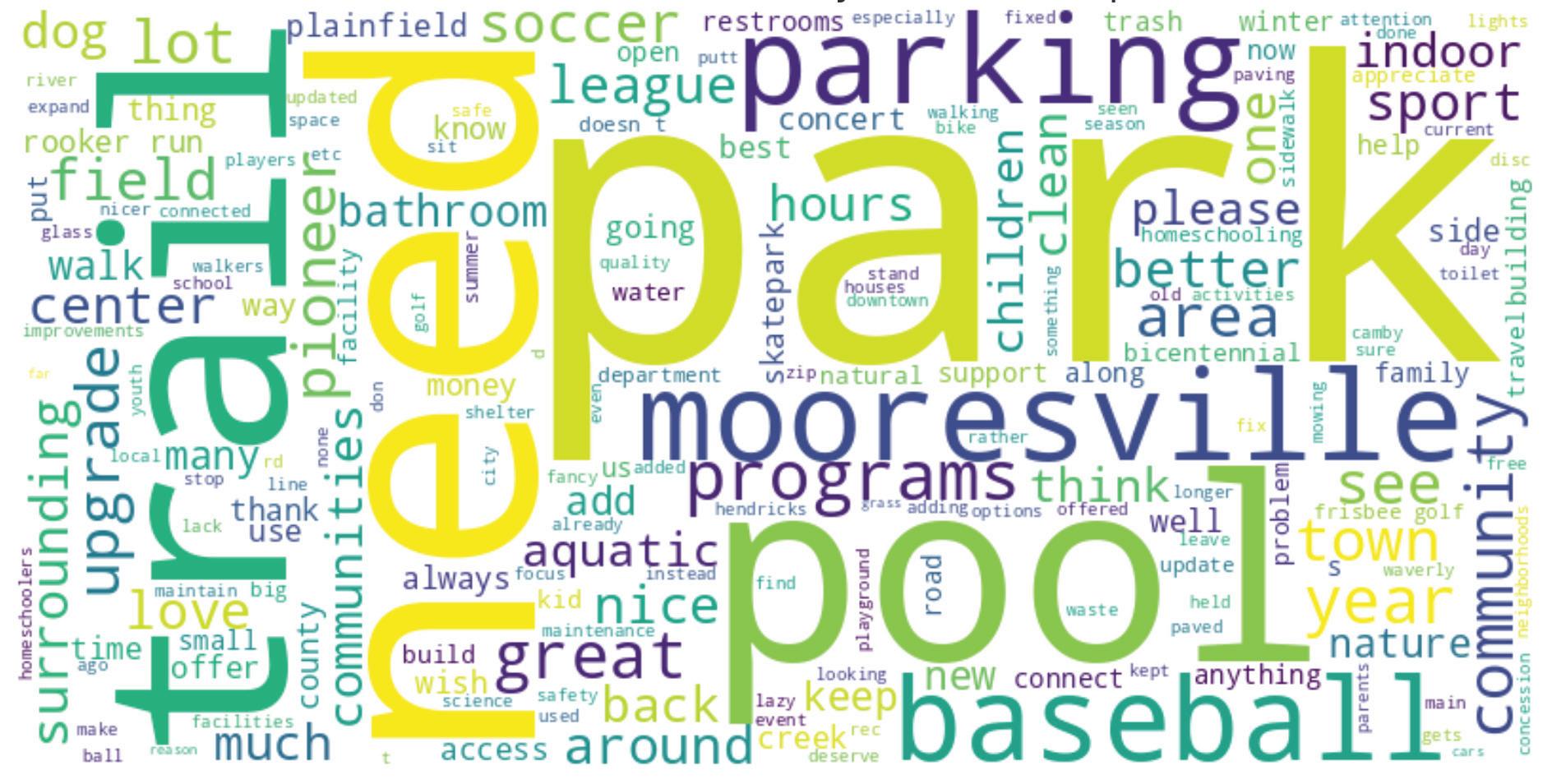
As a key element of the broader engagement strategy for this plan, an online community survey was conducted to gather meaningful input from Mooresville residents. Designed collaboratively by the Troyer Group, MPRD staff, and the steering committee, the survey captured public attitudes, behaviors, and priorities related to parks, programming, and recreation facilities. It also offered valuable insight into barriers to access and emerging needs across the system. The survey was promoted widely through digital platforms and physical outreach, and included refined questions focused on usage patterns, satisfaction levels, inclusivity, and funding priorities. Demographic questions helped the team evaluate representation and better understand who was participating.
Several overarching themes emerged from the survey results and directly informed the plan’s goals and priorities:
Maintenance and Modernization
Residents support sustained investment in maintaining existing infrastructure, updating aging facilities, and improving overall conditions across the park system.
Expanding trails, enhancing access, and preserving natural assets are key community priorities - highlighting a desire for both recreation and environmental care.
Residents value inclusive design and programming, and there is strong support for creating welcoming, accessible environments for users of all ages and abilities.
The desire for more indoor recreational amenities points to a growing need for flexible, all-season space that can serve families, youth, and seniors alike.
Residents expressed pride in the Town’s identity and history and emphasized the importance of reflecting that identity in parks and programs moving forward.
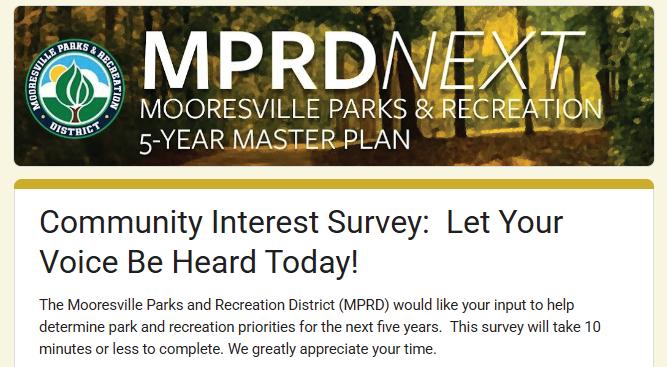
Please rate the condition of the parks and facilities from those listed below that you and/or those in your household have visited in the past 12 months. If you have not visited a park/facility, please click "No".
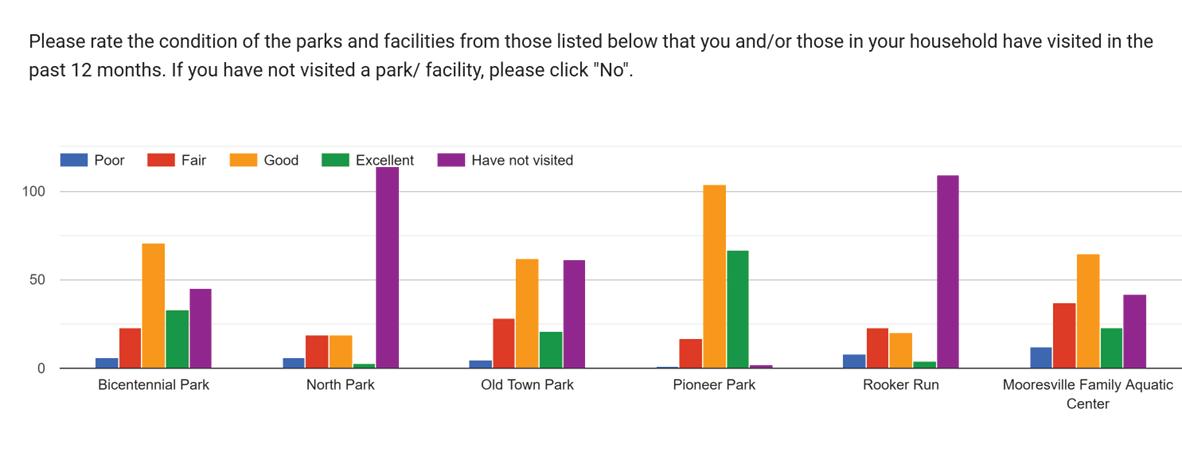
In the past 12 months, have you or anyone in your household taken part in any of the following recreational programs or services provided by the MPRD? If so, please rate the overall quality of the programs and services you and your household members participated in.


What features of MPRD do you use and how would you rank their importance to you and/ or the members of your household?
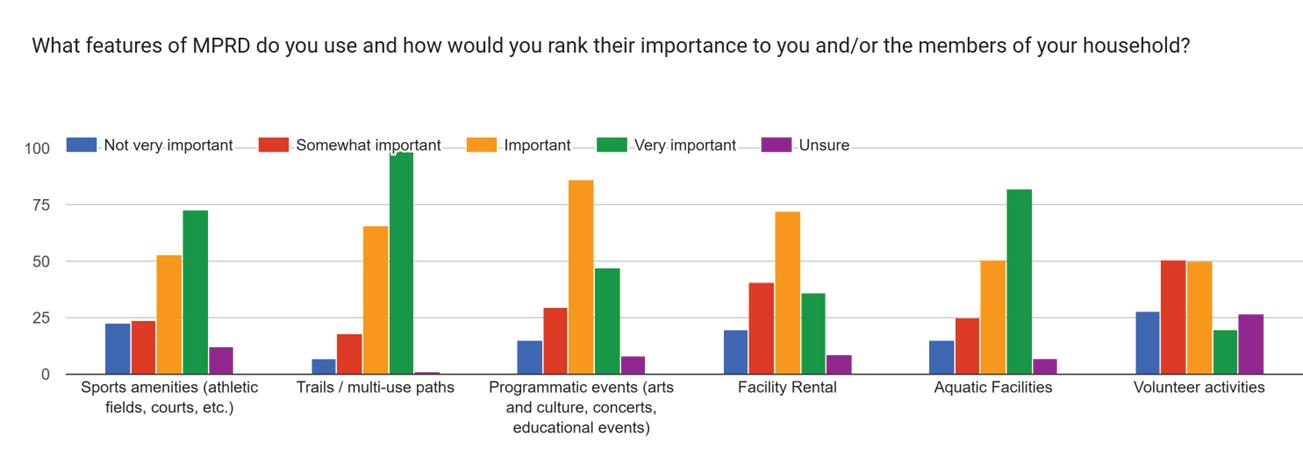
Please prioritize the importance of various outcomes you and your household may experience from parks, trails, recreation facilities, programs, and services by selecting one of the following priority rankings per outcome: Highest, High, Low, Lowest, or Unsure.
Thinking about how public money has been spent on recreation, parks and facilities in the past 5-10 years, which of the following statements is most accurate?
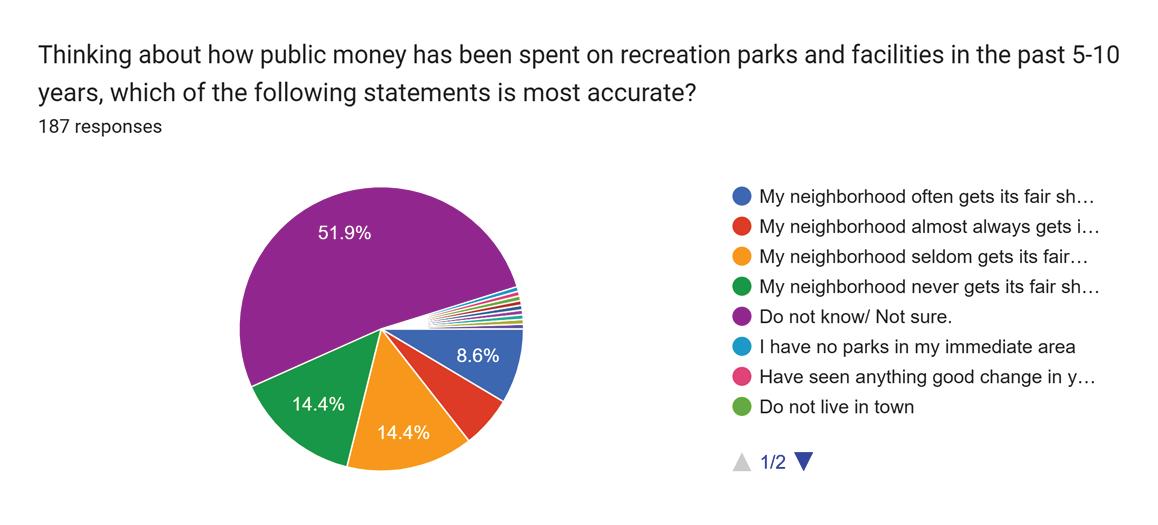

Now imagine MPRD received a $1M grant to develop and maintain parks, facilities, and programs. From the options
Imagine MPRD needed to reduce its budget. From the options below, select your first, second, and third choice for
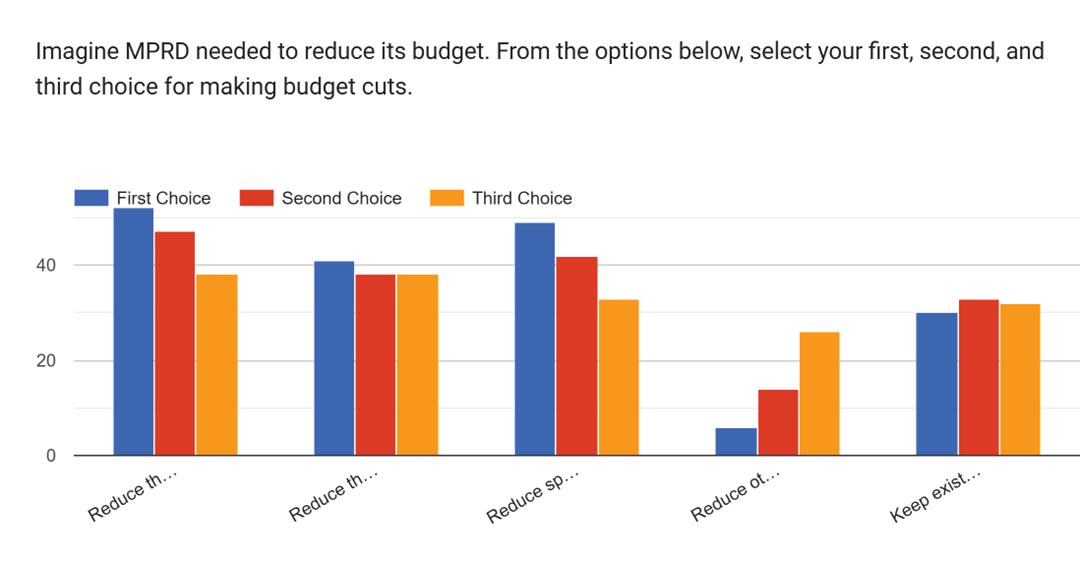
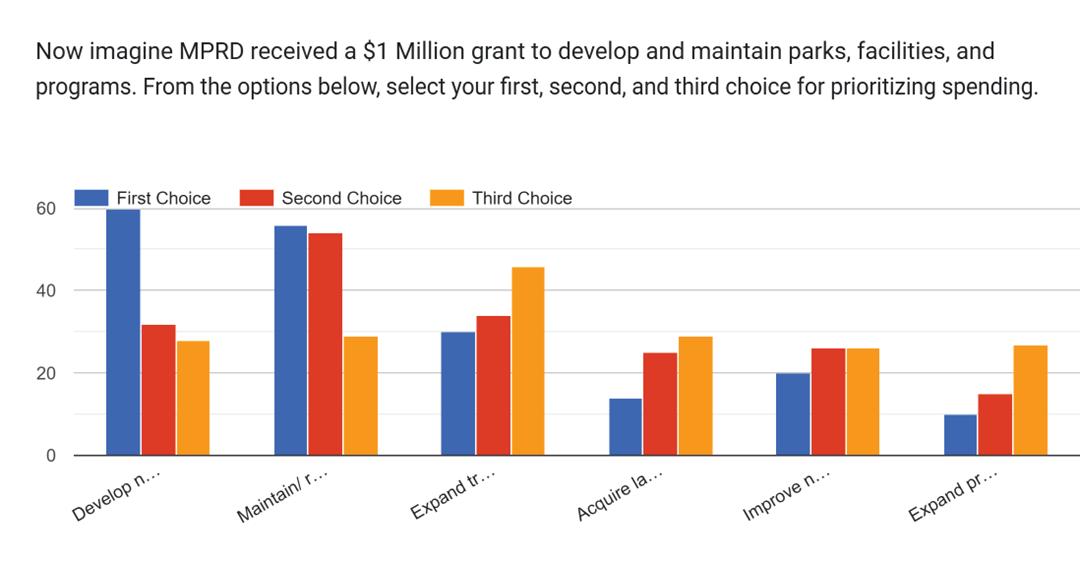
The survey revealed that Mooresville residents place a high value on diverse recreational opportunities, with strong interest in both current amenities and future facility development. Trails and multi-use paths, aquatic facilities, and sports amenities ranked as the most important amenities across all demographics. This reflects a community interested in staying active yearround, and suggests that future programming should
be responsive to both structured team activities and more passive or individual recreation.
In terms of facilities, Pioneer Park continues to be the best known and highest-rated site, with 89% of respondents rating it as Good or Excellent. However, less visited parks such as Rooker and North Park indicate opportunities for future investment and activation—especially as the community grows.
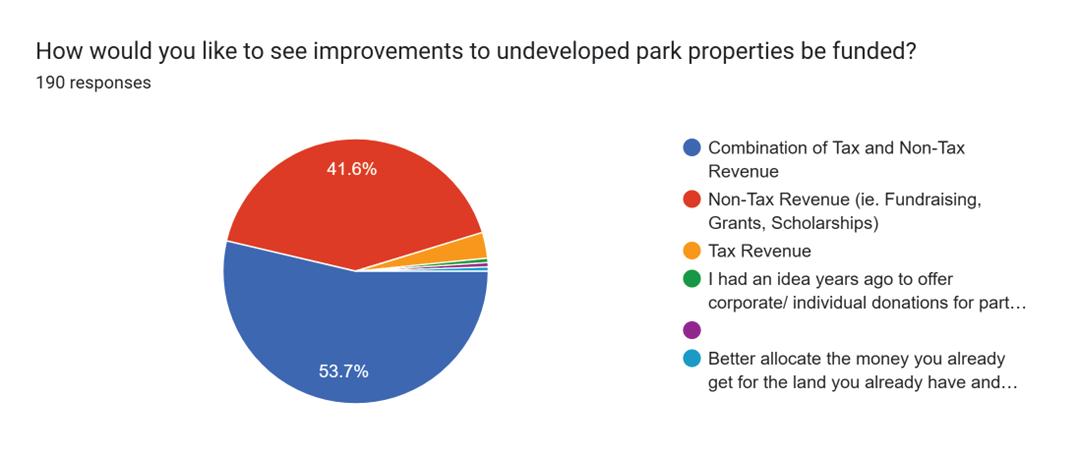

Please rank the three (3) most important issues the MPRD must address with its five-year master plan.
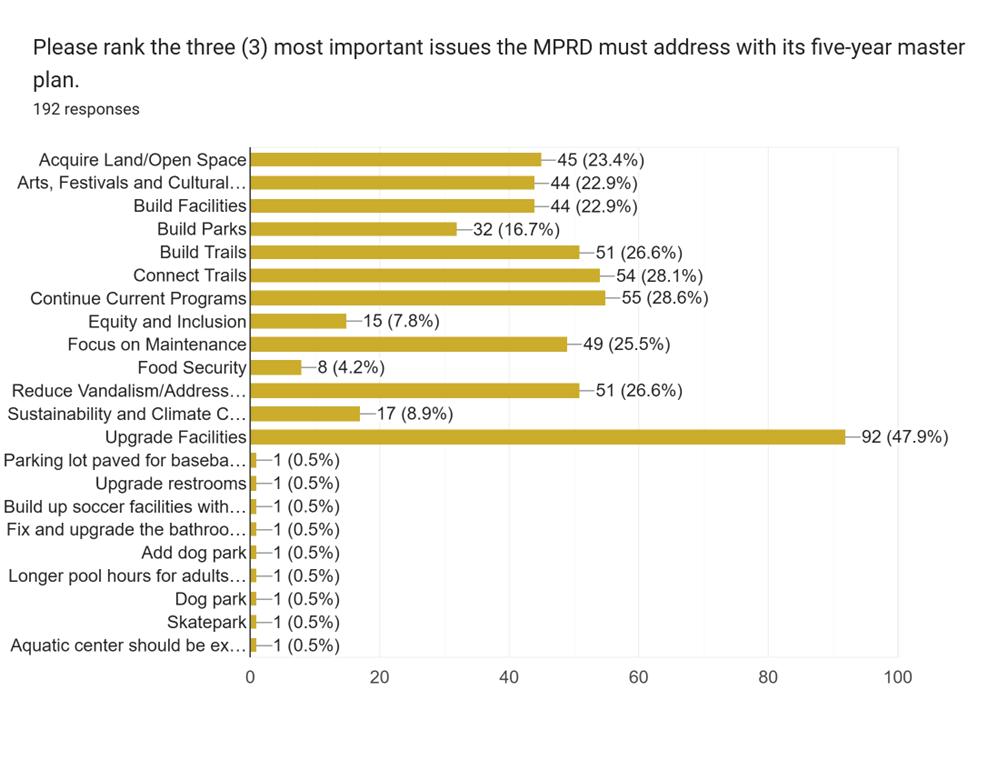
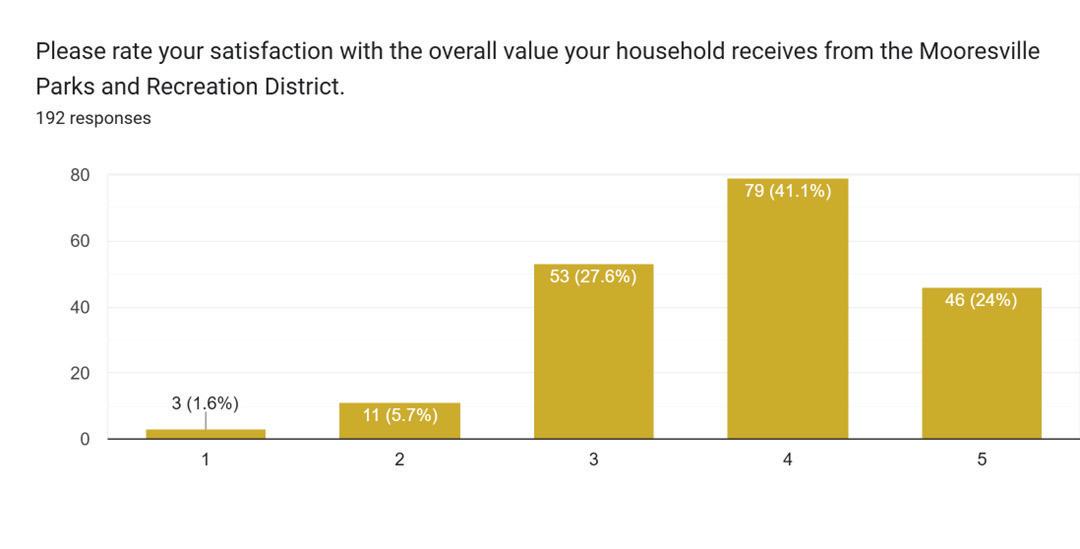
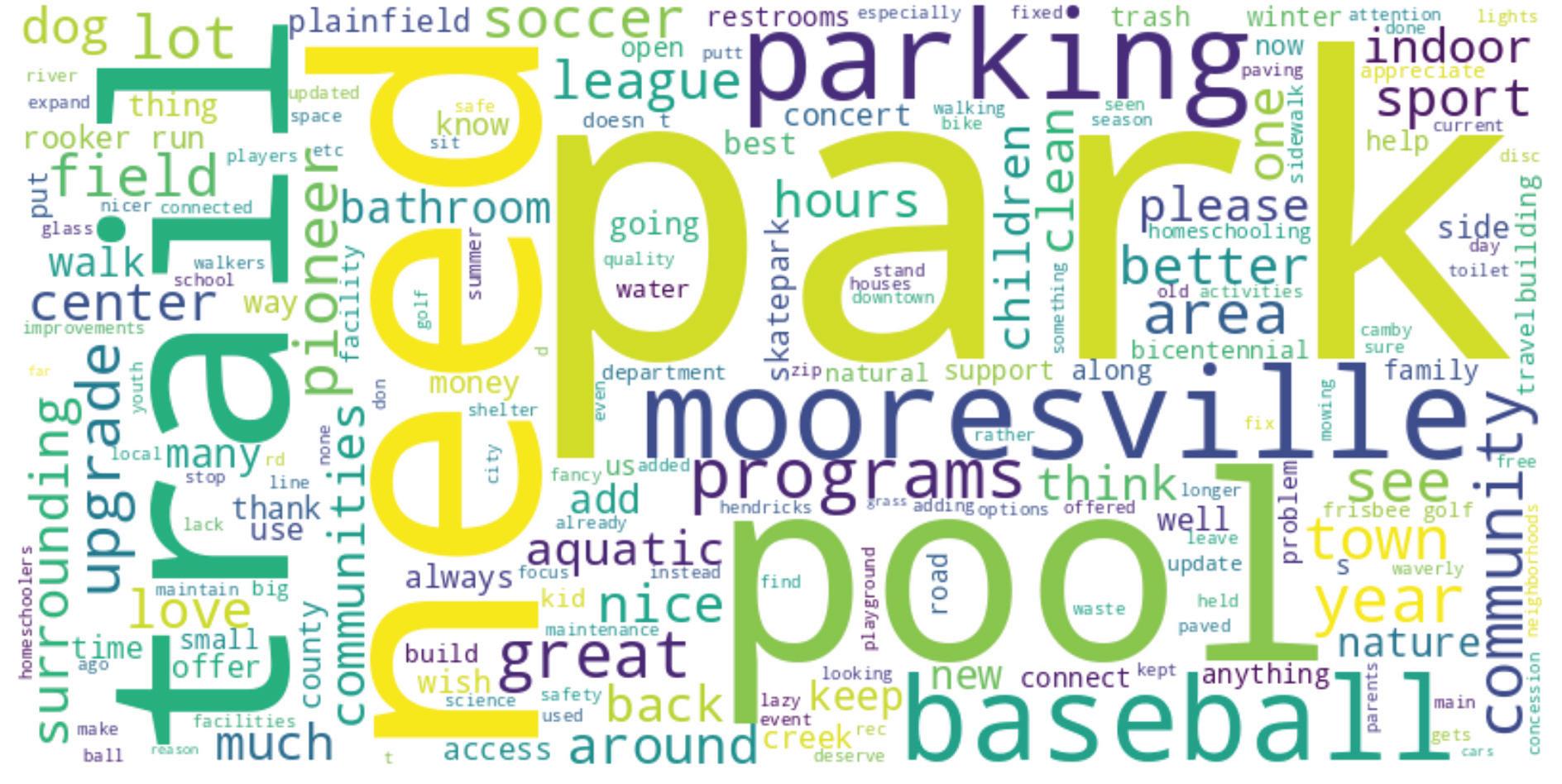
• Low visibility or underuse of certain parks (e.g., Rooker and North Park) suggests potential gaps in marketing, access, or amenities.
• Inconvenient hours and aging infrastructure limit usage for some residents.
• Facilities and programs may not yet reflect the full diversity of Mooresville’s population or needs.
• High levels of satisfaction and engagement offer a strong foundation for future investment and expansion.
• Trails and connectivity are clear priorities and can serve as a unifying system across neighborhoods.
• Communication strategies can continue leveraging digital platforms while expanding outreach to underrepresented groups.
• There is strong community appetite for new facilitiesparticularly those that can serve residents year-round and support intergenerational programming.
The Final Draft Master Plan was hosted on Issuu with links and a form provided to facilitate public comments on the master plan website (mprnext.com). The website will remain open for on-going feedback related to this process and its proposed vision and initiatives.
MPRD Superintendent, Philip Cornelius, has presented the Final Draft Master Plan with the Mooresville Park Board on April 14, 2025. Pending any changes from IDNR review, this plan is anticipated to be adopted in its final version.
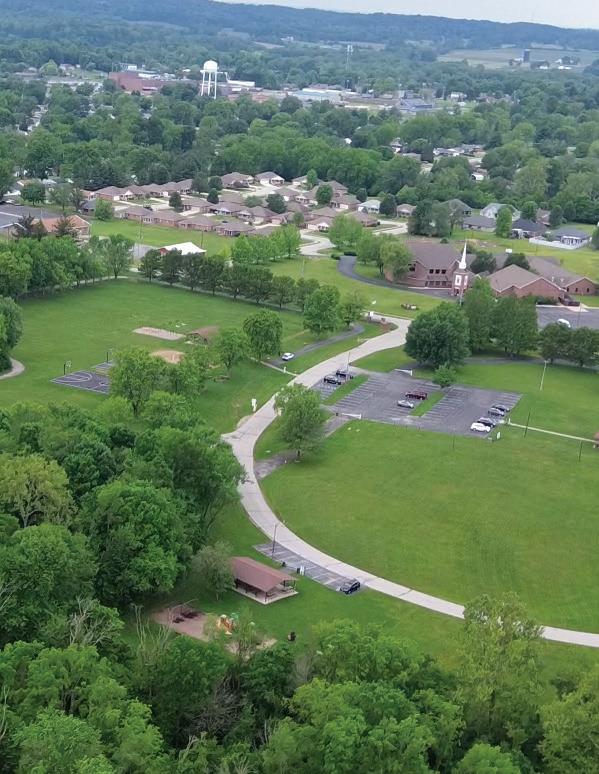
5.0
Industry Trends Level of Service Analysis
As Mooresville continues to grow and evolve, so too must its approach to parks and recreation. The most successful park systems are those that not only respond to local needs, but also anticipate broader cultural, environmental, and technological shifts. Across the country - and increasingly within Indiana - parks and recreation departments are embracing new tools, partnerships, and programming models to remain relevant, inclusive, and resilient. This section highlights several key trends that are reshaping the landscape of public parks, and how those trends can help inform the next chapter for MPRD.
The rise of nontraditional and emerging sports continues to reshape the programming and design of local parks. Pickleball remains the fastest-growing sport in the country, with an intergenerational appeal that makes it especially well-suited for Mooresville’s olderthan-average population and its growing number of young families. Community feedback also highlights a desire for expanded court sports, flexible athletic spaces, and outdoor fitness opportunities that meet diverse interests and ability levels.
In addition to organized sports, recreation is increasingly shaped by informal, social, and family-friendly activity - disc golf, yoga in the park, and even drone zones or skateable art. These “lifestyle” amenities create inclusive entry points to physical activity and often have lower maintenance costs and barriers to access.
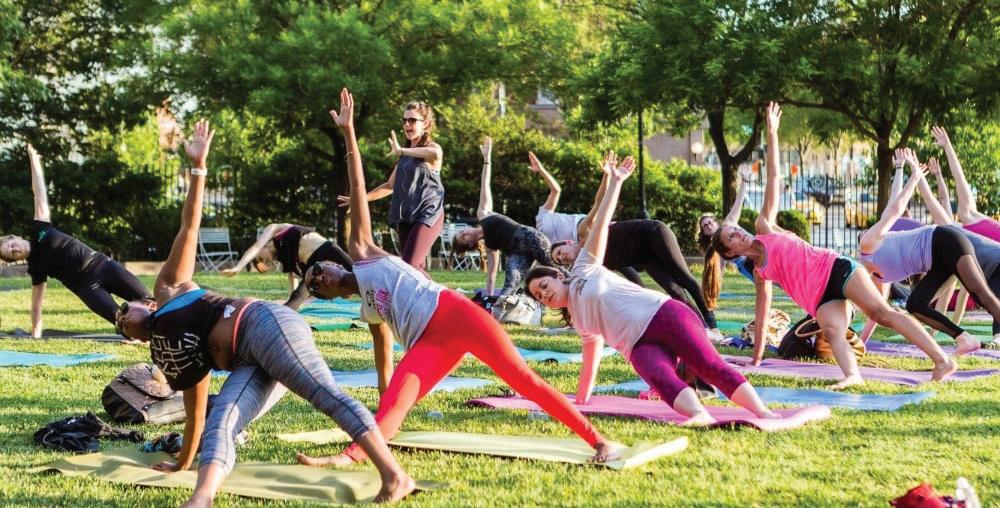
Nationally, the demand for parks that support all ages and abilities is becoming a norm rather than an exception. Universal Design and ADA improvements are no longer simply compliance issues - they are central to creating spaces where everyone feels welcome. Intergenerational design strategies are gaining traction, with playgrounds that include fitness equipment for adults and gathering spaces that support grandparents, caregivers, and multigenerational outings.
For Mooresville, this trend directly aligns with community priorities. With 20% of residents over age 65 and a growing number of young families, the town is uniquely positioned to lead in the development of spaces that bring people together across generations.
Communities are recognizing that parks are not just places for recreation - they are infrastructure for resilience. More park systems are prioritizing green infrastructure, native plantings, stormwater management, and climate adaptation as part of everyday design and operations.
For MPRD, sustainability isn’t just aspirational - it’s practical. Floodplain management, invasive species control, and native habitat restoration are all critical to maintaining Mooresville’s expansive parklands. These practices support both ecological health and long-term fiscal sustainability.
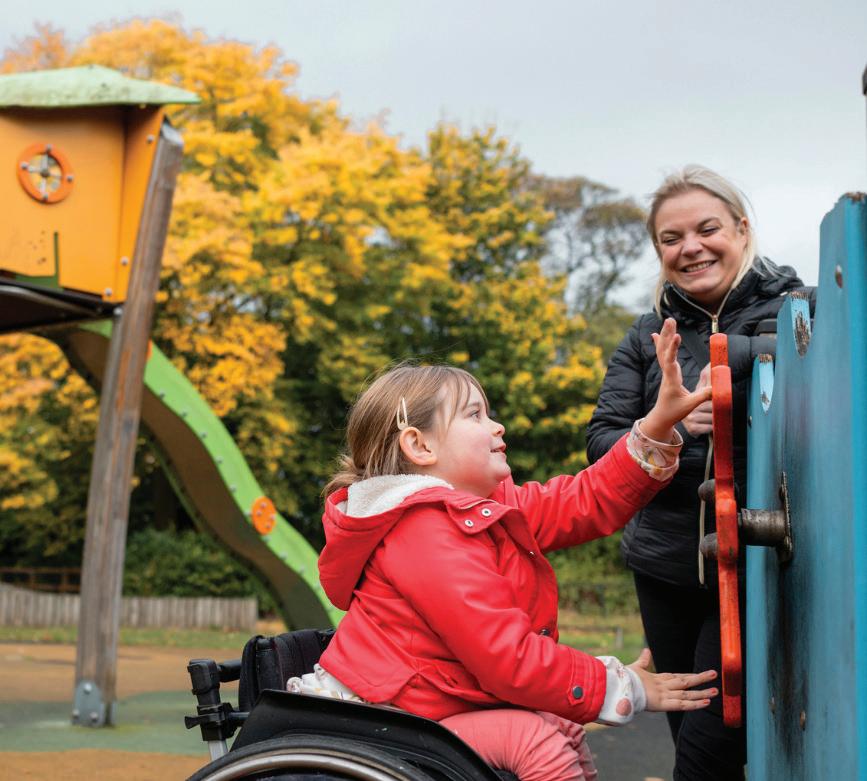
While technology can’t replace human connection, it can enhance it. Parks across the country are integrating interactive signage, mobile apps, and digital storytelling tools to help users engage more deeply with nature and history. In some communities, augmented reality is being used to animate cultural landmarks or lead guided fitness challenges.
Though Mooresville may not be ready for high-tech installations, there's strong potential for low-cost strategies like QR-coded self-guided tours, app-based wayfinding, or social media-driven programs that increase visibility and engagement - especially with younger residents.
Perhaps the most consistent trend is a shift away from rigid programming models toward more adaptive, communitydriven formats. Pop-up events, seasonal workshops, mobile recreation vans, and partnerships with schools, libraries, and health organizations are helping park departments extend their reach without overextending their resources. This approach is particularly promising for Mooresville, where public interest in arts, culture, health, and outdoor education intersects with a strong tradition of civic partnership. By thinking beyond traditional recreation and engaging partners across sectors, MPRD can continue to grow its impact even within limited budgets.
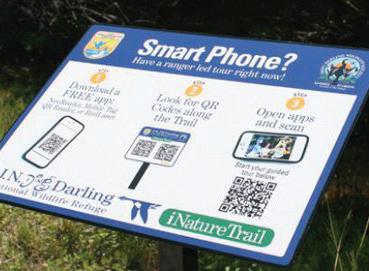
Trends in parks and recreation aren’t just about what’s popular - they’re about what’s possible. For Mooresville, the future of recreation will be shaped by its people: their values, needs, and vision for the kind of community they want to build together. As MPRD plans for its next chapter, these national and regional trends serve as both a reference and a springboard - helping the department continue to evolve as a responsive, innovative, and deeply rooted public resource.
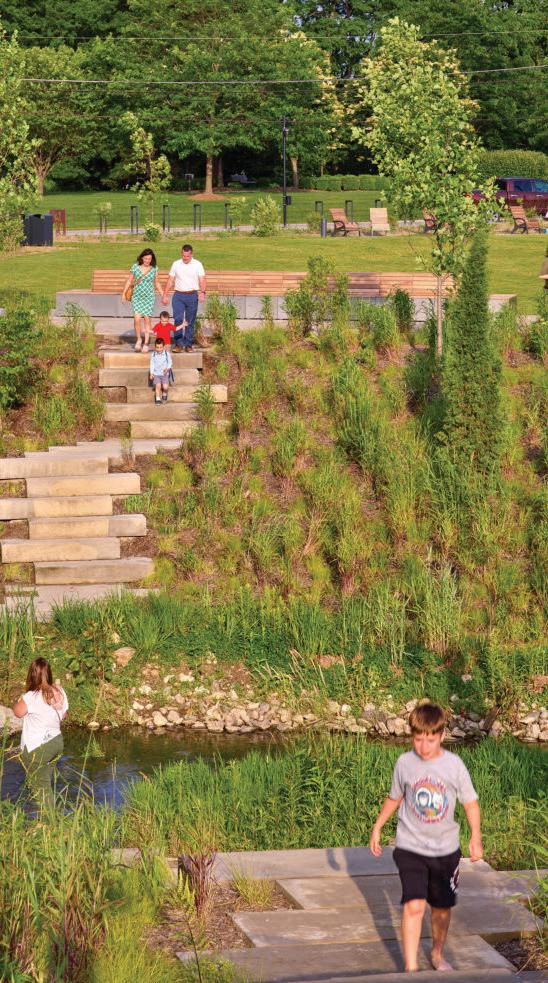
Evaluating Level of Service (LOS) helps determine how well Mooresville’s existing parks and recreation system is meeting the needs of its current population - and how it can grow to serve a changing future. This analysis considers land, amenities, programming, and access, and uses national benchmarks from the National Recreation and Park Association (NRPA), along with local data, to identify both gaps and opportunities for investment.
Mooresville’s potential as a regional hub for recreation, bolstered by infrastructure improvements and a strong quality of life means that parks must serve not only current residents, but also future growth and daily commuter inflow.
MPRD currently manages roughly 175 acres of parkland across its five major parks: Pioneer, Rooker, North, Old Town, and Bicentennial. This results in approximately 17.5 acres per 1,000 residents, well above the NRPA guideline of 10 acres per 1,000. While this suggests a strong foundational system, acreage alone does not tell the full story.
With a population just over 10,000 and an aging but diversifying demographic, Mooresville must now evaluate the location, distribution, and utility of its park assets. Central Mooresville is well-served by parks, particularly Pioneer Park, but peripheral neighborhoods and future growth areas will require new investments to maintain equitable access.
Public input confirmed a strong desire for additional amenities:
• Expanded trail connectivity
• Indoor recreation or community center space
• More restrooms, seating, and accessible infrastructure
• New amenities for teens and seniors
• Improved year-round programming
One of the most important findings from this plan is the scale of Mooresville’s daytime population growth. According to aforementioned data from the U.S. Census “OnTheMap” tool, over 5,000 individuals commute into Mooresville each day for work, which is a staggering 50% increase over its residential population.
This makes Mooresville a net-importer of workers and elevates the true demand on its parks, trails, and recreational resources. These commuters may use trails on lunch breaks, attend programs after work, or rely on public facilities - yet they do not contribute directly to the Town’s property tax base.
This creates a unique planning challenge: the Town must provide a higher level of service than its population alone would suggest. Traditional LOS models may underestimate demand unless they account for these daily users. Future planning efforts should therefore use an adjusted “functional population” that includes both full-time residents and daily visitors.
Additionally, this commuter population represents a growth opportunity. Many of these individuals could be drawn to live in Mooresville if quality-of-life amenities - especially parks and trails - remain a priority. By investing in recreation infrastructure, the Town not only meets current needs but strengthens its ability to attract new residents, housing development, and workforce retention.
• Trail access is the top amenity priority per public engagement results. Current mileage (~3 miles) falls short of national averages for communities of this size. Expansion is critical, particularly for regional connectivity and commuter-friendly alternatives.
• Indoor recreation is a service gap. While Pioneer Park is highly utilized, many residents expressed a need for year-round fitness and community gathering space. A
future indoor facility could fill this gap.
• Parks are central to Mooresville’s identity. Beyond recreation, parks serve as community anchors for major events, gatherings, and civic pride. The new Bicentennial Park is a testament to this - and future facilities should reflect that same community-centered design.
• Maintenance and staffing are growing needs. Even the best amenities lose their value if they’re not maintained. Expanding the system will require investment in staffing, operations, and lifecycle planning.
To maintain and improve Mooresville’s Level of Service, MPRD should consider the following:
• Plan for population + commuter-based demand. Use adjusted metrics to forecast facility needs.
• Pursue parkland in identified growth areas, especially west of town along future development corridors.
• Invest in trail expansion to better connect neighborhoods, parks, and civic destinations.
• Explore shared-use facilities or public-private partnerships to deliver indoor recreation space.
• Integrate long-term maintenance and staffing plans alongside capital improvement budgeting.
• Use commuter and regional visitation trends as part of Recreation Impact Fee discussions and funding strategies.
Mooresville’s current park system delivers a strong baseline of service - but growth, both from within and from outside commuters, is changing the equation. By broadening the lens through which demand is measured and embracing
Chapter 6.0
Goals + Strategies
Individual Parks Analysis + Recommendations
Capital Improvement Plan
Recreation Impact Fee
Strategic Implementation Matrix
"By grounding our decisions in data and community input, we create a legacy that reflects thoughtful planning, fiscal responsibility, and a genuine commitment to well-being. I firmly believe that this plan is not just important—it is essential for our continued growth, resilience, and service to the public.
Let us lead with intention. Let us plan with purpose."
- Philip Cornelius, MPRD Superintendent
This chapter marks the culmination of the Mooresville Parks and Recreation Master Plan - a strategic pivot from understanding to action. Through the course of this planning process, MPRD and its partners followed a clear and intentional path: Discover the unique characteristics of the community and park system; Engage with residents and stakeholders to understand their needs and aspirations; Plan through data, design, and dialogue; and now, Deliver a strategic framework to carry the department into its next five years of service
This Strategic Framework represents more than just a list of priorities - it is the connective tissue between vision and implementation. Each goal reflects the values voiced by the community, the realities of current operations, and the ambitions for Mooresville’s future. They were not created in isolation, but instead emerged through a collaborative process of wordsmithing, discussion, and reflection by the MPRD staff, the advisory committee, and the broader public.
Taken together, these goals provide a shared roadmap for parks and recreation in Mooresville. They are designed to guide day-to-day decisions and long-range planning alike, ensuring that MPRD’s actions remain aligned with the evolving needs of the community it serves. Each goal is supported by specific strategies - practical next steps that can be scaled, phased, and adapted over time. While this is the final chapter of the master plan, it is also the beginning of a new chapter for Mooresville Parks and Recreation. With these goals in place, MPRD is equipped not only to respond to growth, but to lead it - ensuring that parks, trails, natural areas, and programs continue to strengthen the health, identity, and belonging of this town for years to come.
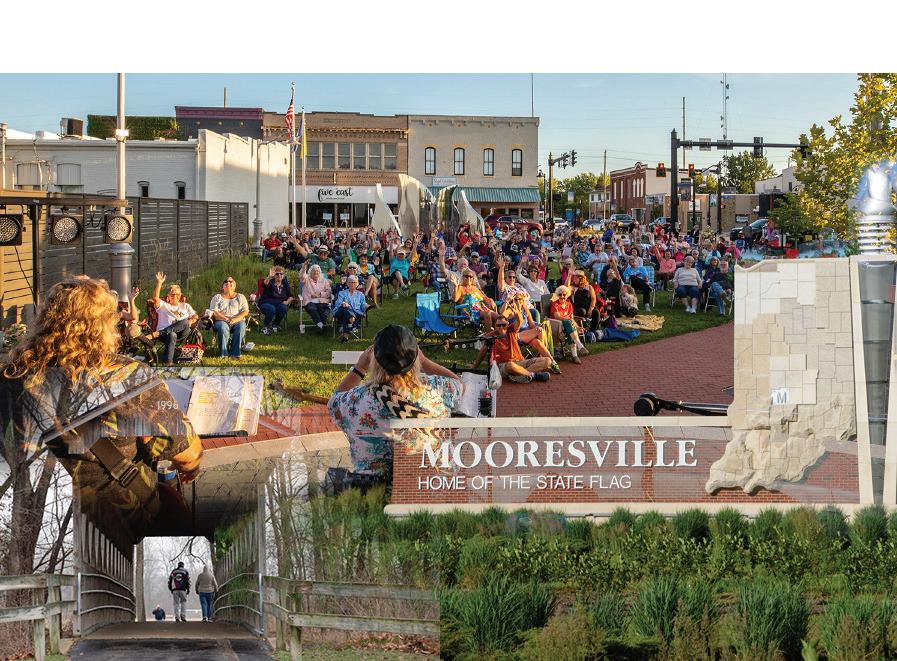
Goal #1: IMPROVE AND EXPAND PARK ASSETS WITH AN EMPHASIS ON COMMUNITY HEALTH AND ECOLOGIC RESILIENCY.
Goal #2: EXPAND THE TRAIL NETWORK THROUGHOUT THE COMMUNITY TO IMPROVE ACCESS AND CONNECTIVITY, AS WELL AS PROMOTE PHYSICAL ACTIVITY AND WELLBEING.
STRENGTHEN ADMINISTRATIVE INFRASTRUCTURE AND EXPAND STAFFING CAPACITY TO ENSURE EFFICIENT AND EFFECTIVE SERVICE DELIVERY.
Goal #3: IMPROVE AND ENHANCE CURRENT PROGRAMMING, SEEKING OPPORTUNITIES TO ADD NEW CULTURAL EVENTS.
1.1 Perform detailed assessments of existing facilities, open spaces, and natural resources to identify improvement needs.
1.2 Adopt ecologically sensitive maintenance practices and efficient water management systems.
1.3 Install fitness zones, inclusive playgrounds, and other amenities that encourage active use.
1.4 Restore native habitats and manage invasive species to support biodiversity.
1.5 Utilize smart technology and mobile apps to monitor park usage and promote health and conservation.
1.6 Collaborate with health organizations for programming and funding to support improvements.
1.7 Reduce invasive and non-native species, control nuisance wildlife, continue reforestation efforts, and support continued use of native planning.
1.8 Identify opportunities for expansion and land acquisition that responds to the residential growth planned in the Future Land Use Map
2.1 Identify key areas for trail expansion by analyzing gaps in the current network and potential connections to community hubs.
2.2 Design trails that accommodate various activities like walking, biking, and running to encourage diverse use.
2.3 Collaborate with local groups, businesses, and schools to support trail development and maintenance.
2.4 Incorporate lighting, signage, and ADA-compliant features to make trails safe and accessible for everyone.
2.5 Pursue grants and partnerships that focus on infrastructure improvements, physical activity, and wellness initiatives to fund trail expansions.
2.6 Organize events like community walks, runs, and biking tours to encourage use and awareness of the trail network.
4.1 Evaluate current staffing levels and identify gaps to ensure adequate support for operations and programs.
4.2 Offer training programs and certifications to enhance staff skills and boost service delivery.
4.3 Adopt technology solutions for scheduling, resource management, and communication to streamline administrative processes.
4.4 Pursue grants, partnerships, and budget reallocations to fund the hiring of additional staff.
4.5 Implement policies and programs that promote worklife balance, job satisfaction, and career advancement to retain talented staff.
3.1 Use surveys and focus groups to gather input on desired cultural events and activities.
3.2 Partner with local cultural and arts organizations to co-create and host diverse events.
3.3 Expand programming by utilizing various parks and public spaces for different types of cultural events.
3.4 Ensure programming is accessible and appealing to all age groups, abilities, and cultural backgrounds.
INCREASE AVAILABILITY TO PARKS AND PROGRAMS TO IMPROVE COMMUNITY HEALTH AND WELLNESS
5.1 Identify and reduce physical, financial, and social barriers to access.
5.2 Upgrade facilities with ADA-compliant features, sensory-friendly spaces, and health and/or fitness focused signage to facilitate physical activity.
5.3 Partner with local health providers to offer wellness programs and health screenings in parks, promoting active lifestyles.
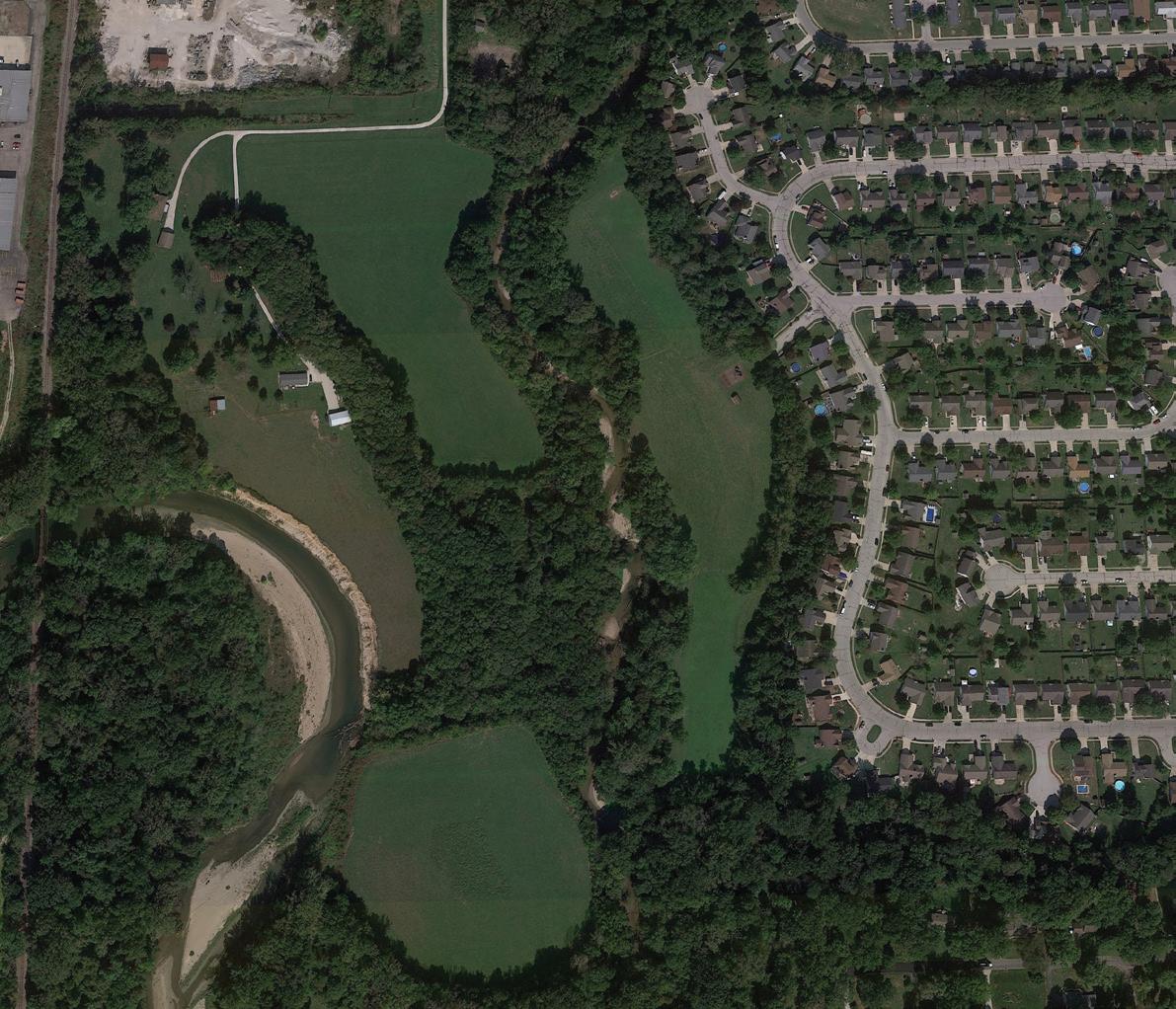
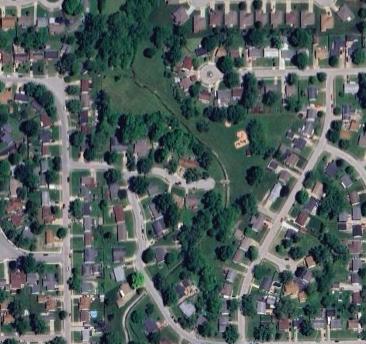
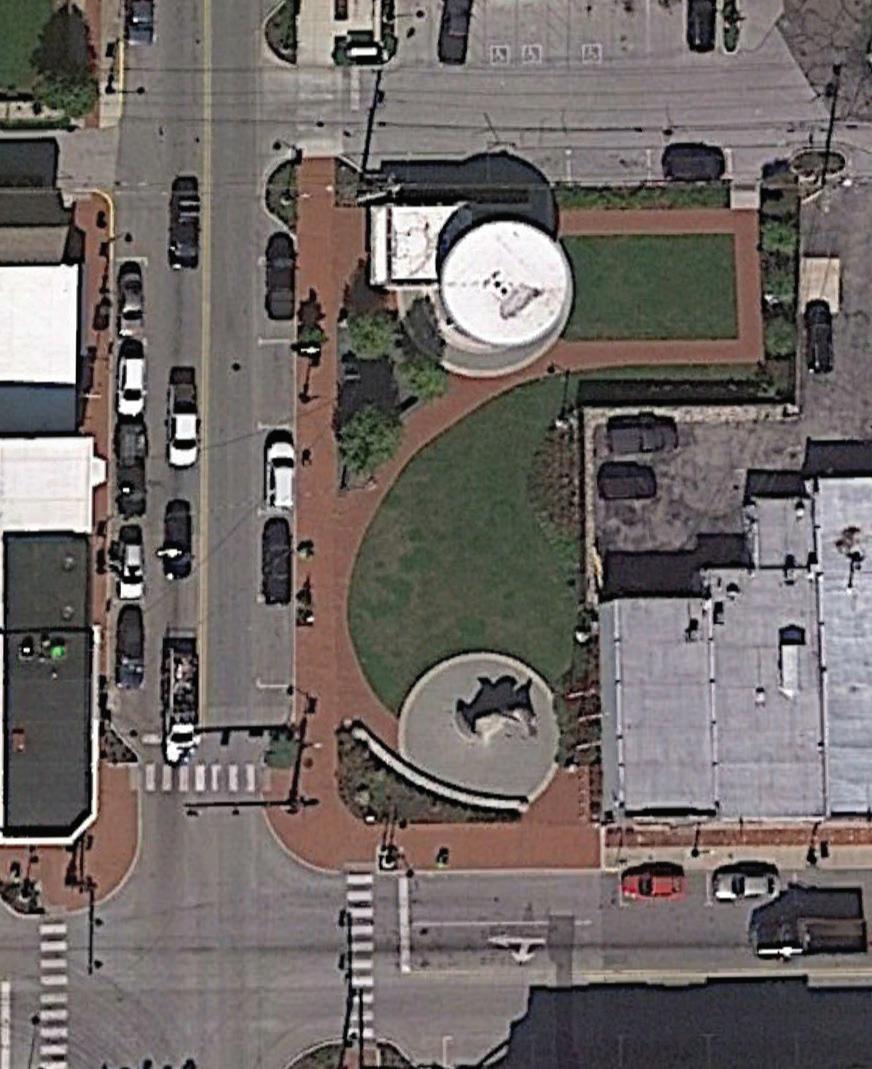
The following section translates the goals and strategies of this Master Plan into site-specific actions for each of Mooresville’s five parks - Rooker Run Park, North Park, Old Town Park, Bicentennial Park, as well as showing the current and future improvements planned for Pioneer Park.
These recommendations are rooted in what we’ve heard from the community, observed during site assessments, and aligned with broader system-wide priorities such as accessibility, ecological resilience, and recreational equity. While each park plays a unique role within the systemwhether as a community anchor, neighborhood gathering place, or natural retreat - together they represent the heart of Mooresville’s commitment to public space.
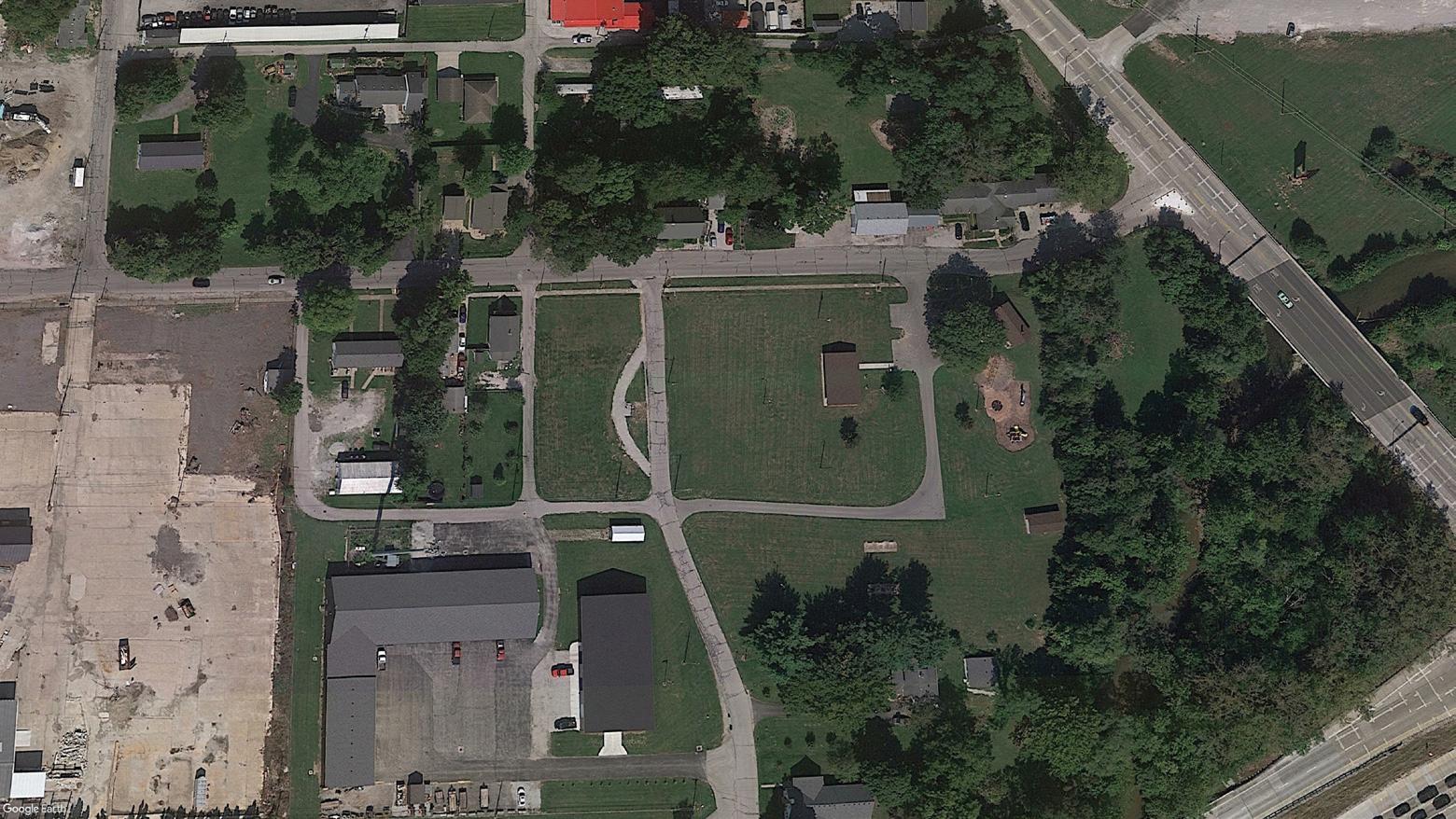
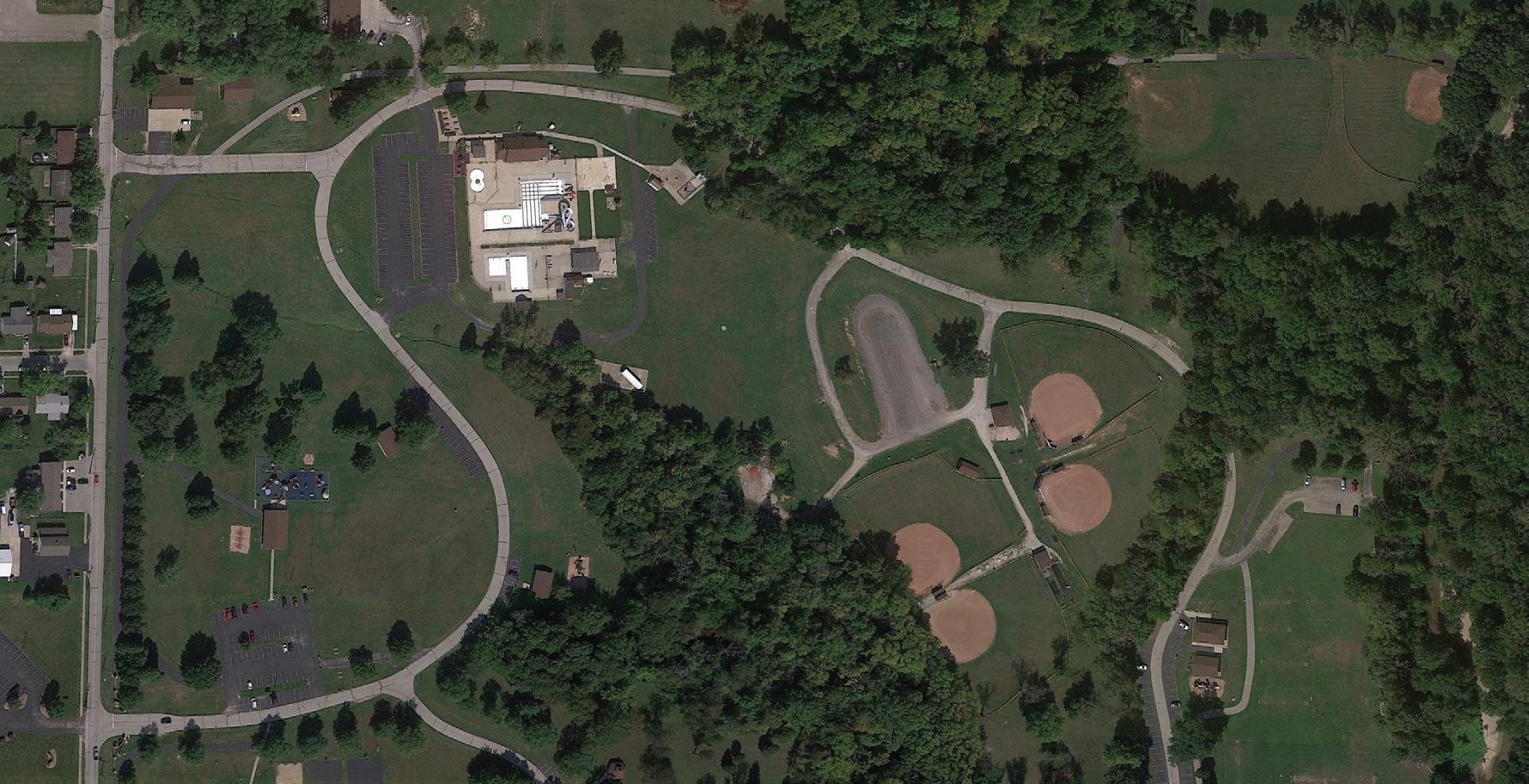

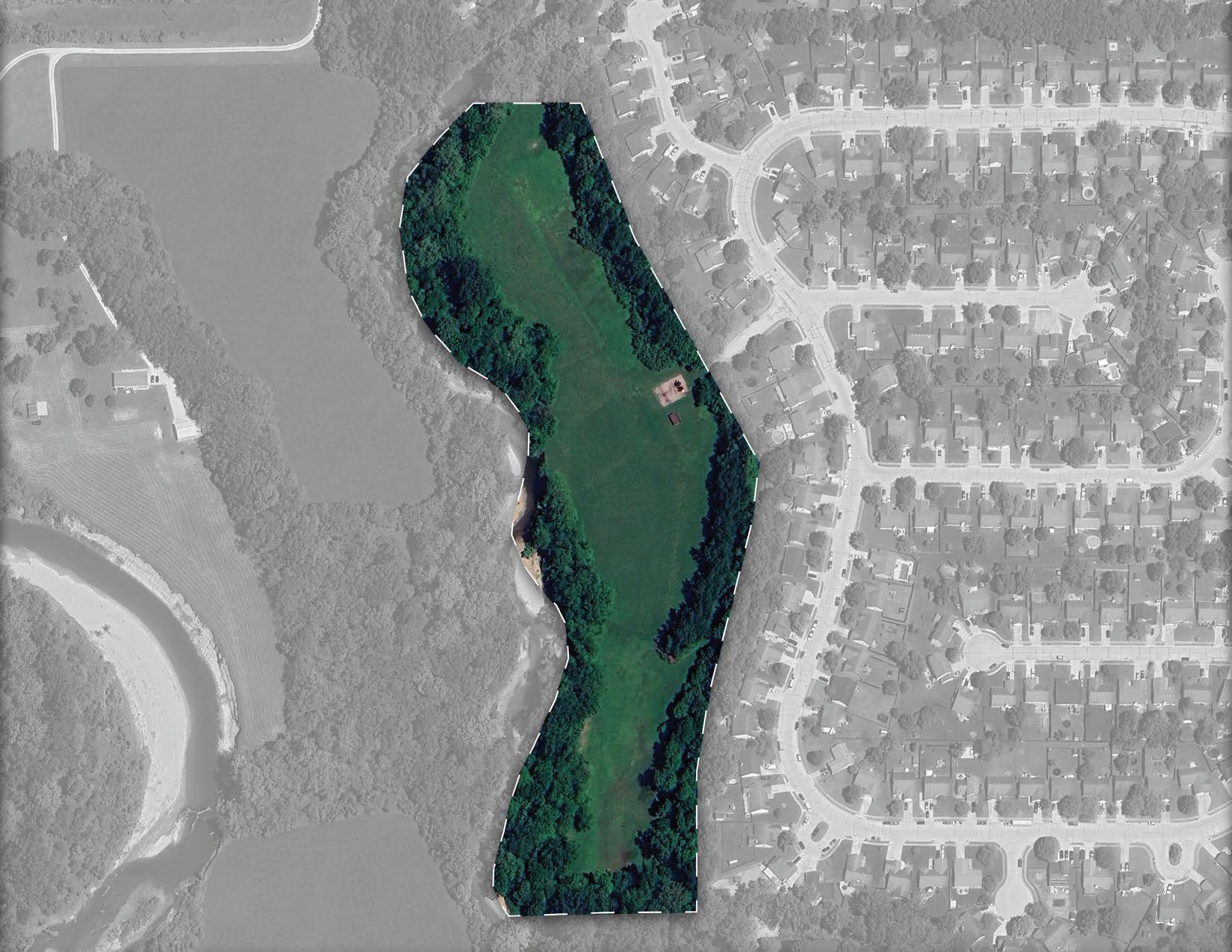

Located on E. Fork White Lick Creek 18.70 acres
The land for Rooker Run Park was donated to the park district by the developer in 1995. It is a a low-laying open area on the East Fork White Lick Creek with a raised area at the entrance of the park. A playground and shelter were added to Rooker Run Park in 2006. This park lacks wide awareness from the Town at large, which provides a key opportunity for improvement and enhancements to capitalize on this underutilized park land.
1. Nature-centered education programs to teach kids/ young adults how to bird-watch, fish, etc.
2. Walking groups & fitness classes
3. Neighborhood gatherings like picnic gatherings or movie nights
4. Organized team sport programming like soccer, football, etc.
5. Town-scale programs usually held in Pioneer Park could be relocated here for geographic diversity in large community events.
Playground
Pavilion
Open Lawn Space
Mature Shade Trees
Defined Entry w/ Signage and Small Parking Area
Walking Trail Along Perimeter
Land Expansion to Incorporate Creek Recreation
Improve Stormwater Management w/ Green Infrastructure
Dog Park/ Designated Dog Area
Park Wayfinding and Clear Access for Increased Community Awareness
Lawn Sports Field (Soccer, Football, etc.)
Restrooms
Enhance Playground Area For Improved Inclusive and Accessible Play Value
Raised boardwalk over flood zone habitat for year-round use and opportunities for ecological education signage
Lawn conversion into flood-prone ecological habitat with native plants
Old Town Park
261 E. South Street
6 acres
Established in 1877 by town founder Samuel Moore, the park continues to hold historical significance. This park features a playground, restrooms, a community pavilion with lawn games, and a small parking area. Significant enhancements were made in 2024, with roughly $310,000 worth of capital project improvements invested by the Town of Mooresville. When donated by Moore, he stipulated this land should serve as a communal space for the Town’s citizens, and requested activities such as baseball, horse racing, gambling, and the consumption of alcohol be prohibited. Future planned enhancements should take this into consideration, embracing his vision for a wellmaintained and welcoming gathering space for all residents of Mooresville.
1. Nature-centered education programs to teach kids/ young adults how to bird-watch, fish, garden, etc.
2. Fitness classes on flexible lawn space (like yoga, zumba, tai chi, etc.)
3. Neighborhood gatherings like picnics, lawn game meet-ups, or communal gardening.
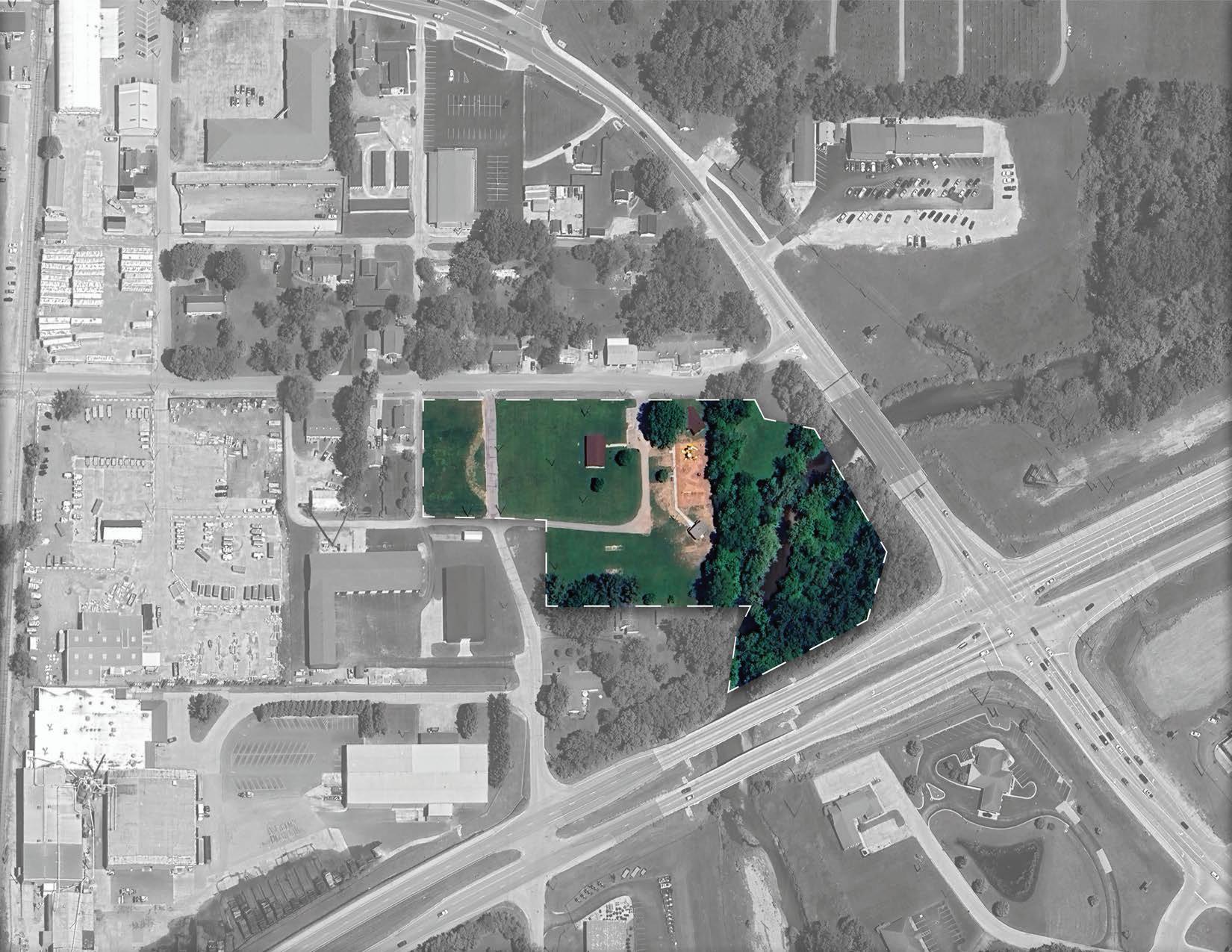

Wayfinding with Interprative Art to Commemorate History and Improve Park Awareness
Enhance Playground Area For Improved Inclusive and Accessible Play Value
Create A Raised Table To Increase Pedestrian Safety And Prevent Vehicles
Speeding Through Park
Enclosed Neighborhood Dog Park Lawn conversion into flood-prone ecological habitat with native plants
Relocate Horseshoes And Enhance Sandbox To Create A Lawn Games Area (Along With Existing Cornhole)
Community Garden Space to Refocus on Moore’s Goals for this Space
Paved Plaza With Additional Seating, Opportunities for Passive Programming, And Increased Universal Accessibility
North Park
99 Parkview Drive
4 acres
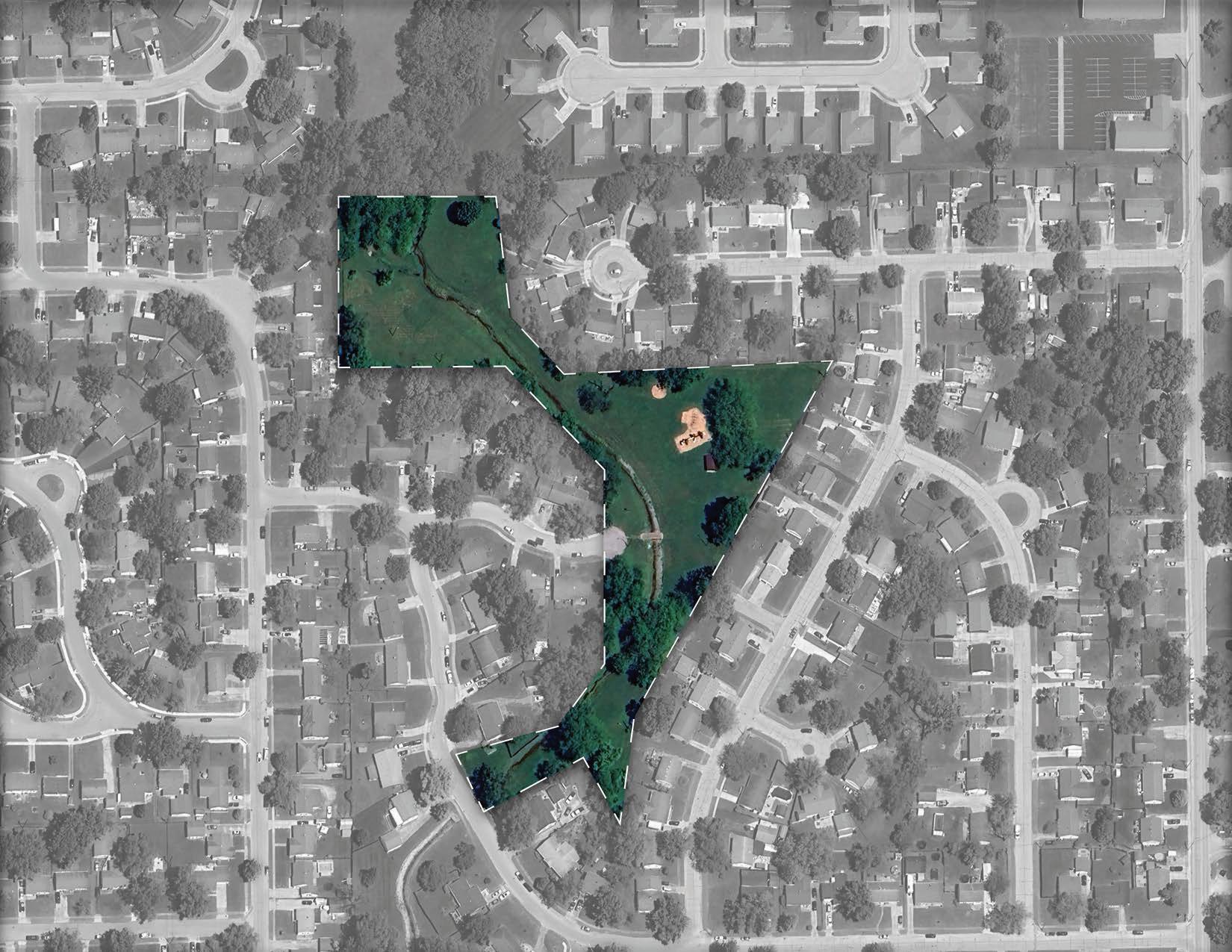

North Park is located in the midst of a residential neighborhood, just south of Pioneer Park. This park, with a stormwater ditch running meandering throughout, features a small playground, a pavilion with picnic tables, and an abundance of open lawn. Due to its location and lack of enhanced/ programmed amenities, this park is low-use and lacks public awareness.
1. Nature-centered education programs to teach kids/ young adults how to bird-watch, fish, etc.
2. Fitness classes on flexible lawn space (like yoga, zumba, tai chi, etc.)
3. Neighborhood gatherings like picnics, lawn game meet-ups, or block parties.
Playground
Pavilion
Open Lawn Space
Mature Shade Trees
Defined Entry w/ Signage & Parking
Walking Trail Along Perimeter
Lawn conversion into flood-prone ecological habitat with native plants
Enhance Playground Area For Improved Inclusive and Accessible Play Value
Improve/ Expand Pavilion for Sheltered Community Gathering
Park Wayfinding and Clear Access for Increased Community Awareness
Established in 2016 to commemorate Indiana’s bicentennial, the park honors Paul Hadley, a Mooresville native and designer of the Indiana state flag. The park features a distinctive sculpture inspired by the torch on the state flag, accompanied by a limestone outline of Indiana. Visitors can enjoy amenities such as a plaza, multipurpose event lawns, seating opportunities, a covered stage area, and a time capsule dedicated during the bicentennial celebrations. Although a fairly new park, some key enhancements would help make this community space much more vibrant and increase daily and program use.
1. Partner with local nearby businesses on Farmers Market to elevate and provide value for retail, dining, and local organizations, as well as increase community belonging.
2. Encourage daily use with food truck partners or on-site food vendors.
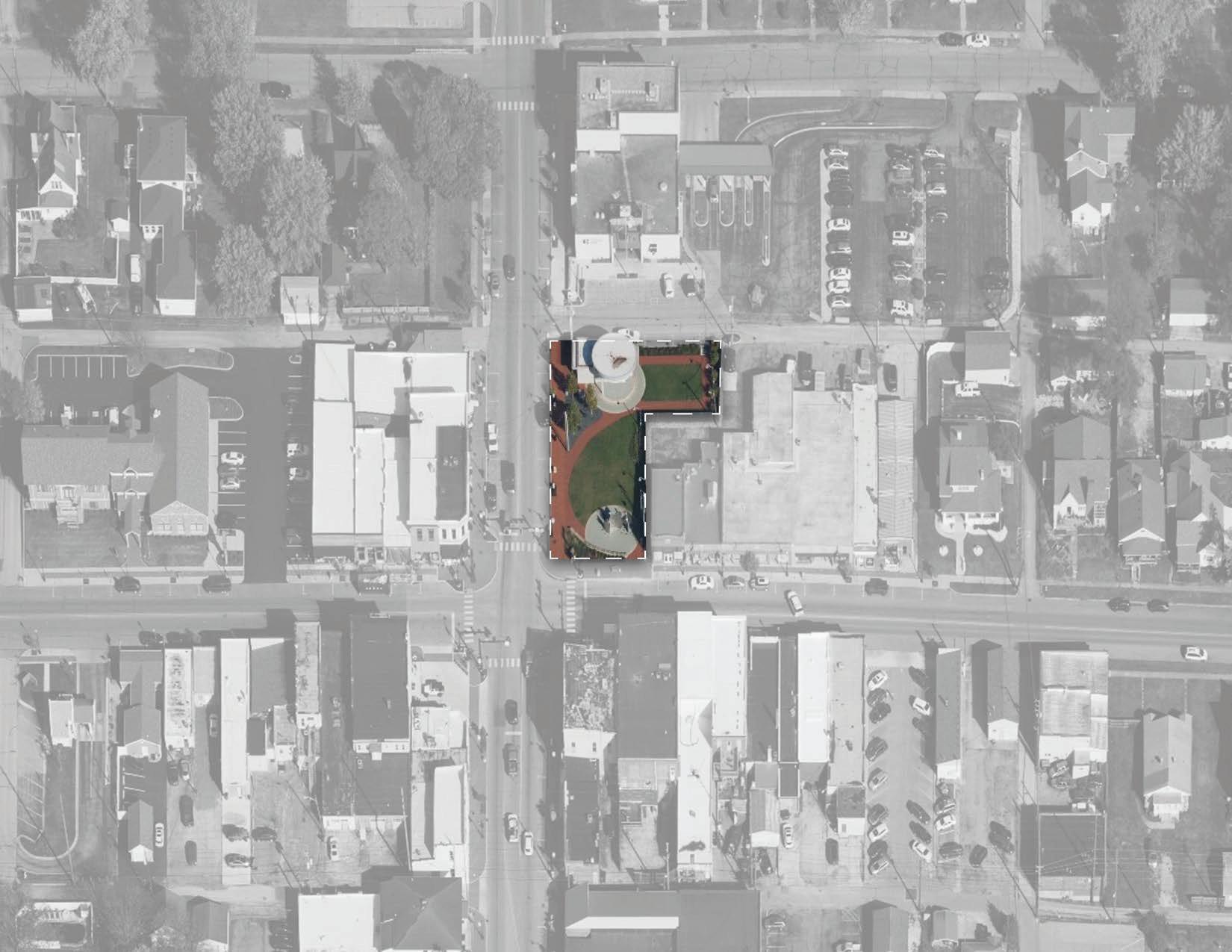

Pioneer Park is a 130-acre community hub in Mooresville, Indiana, featuring the Mooresville Family Aquatic Center, picnic shelters, playgrounds, baseball diamonds, soccer fields, and a 2.9-mile loop trail. The park hosts various events, including the annual Old Settlers Festival and a summer concert series. Recent enhancements include the addition of an 18hole disc golf course in 2023.In addition, in November 2023, the Mooresville Park Board approved an agreement with the Mooresville Redevelopment Commission (RDC), which has committed up to $3.15 million for various improvements. These upgrades include the addition of pickleball courts, basketball courts, an inclusive playground, and an event center, with construction anticipated to begin in 2024 and completion expected by 2025 or 2026. These developments aim to provide residents and visitors with enhanced facilities and a more vibrant community space.
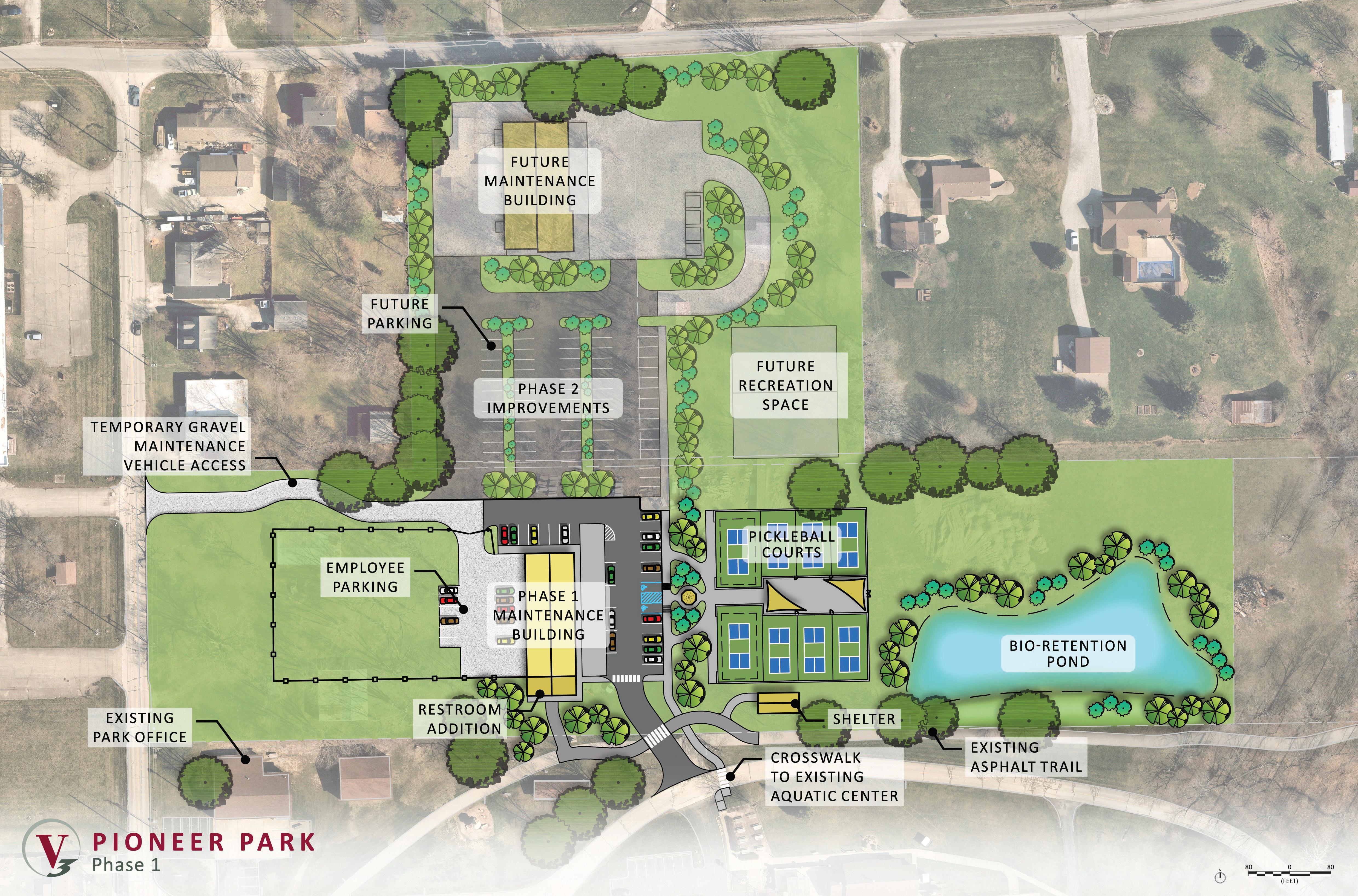
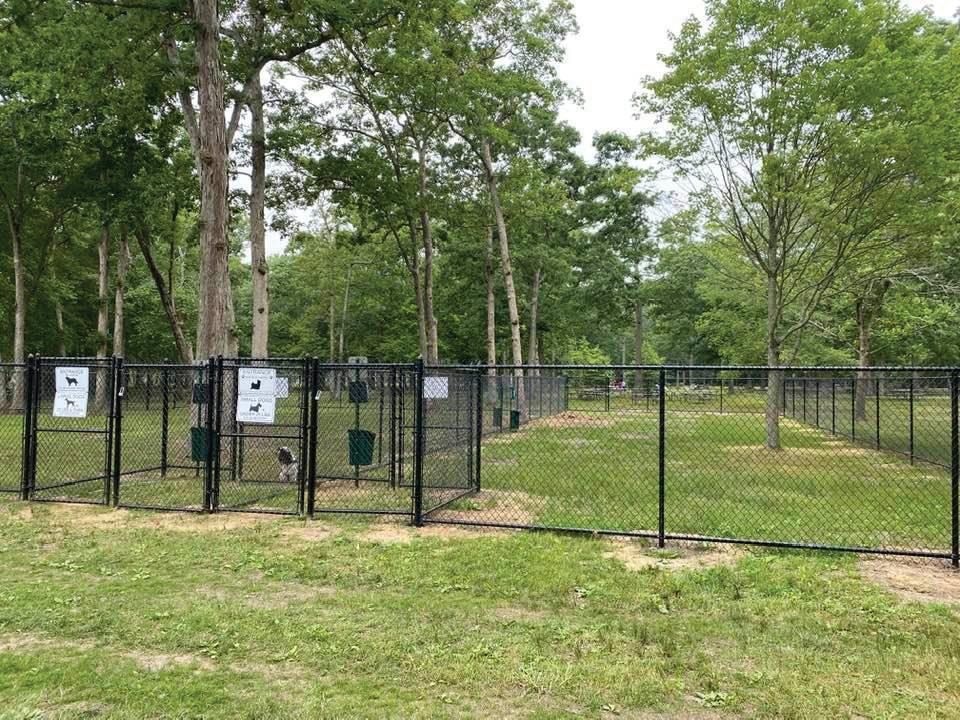
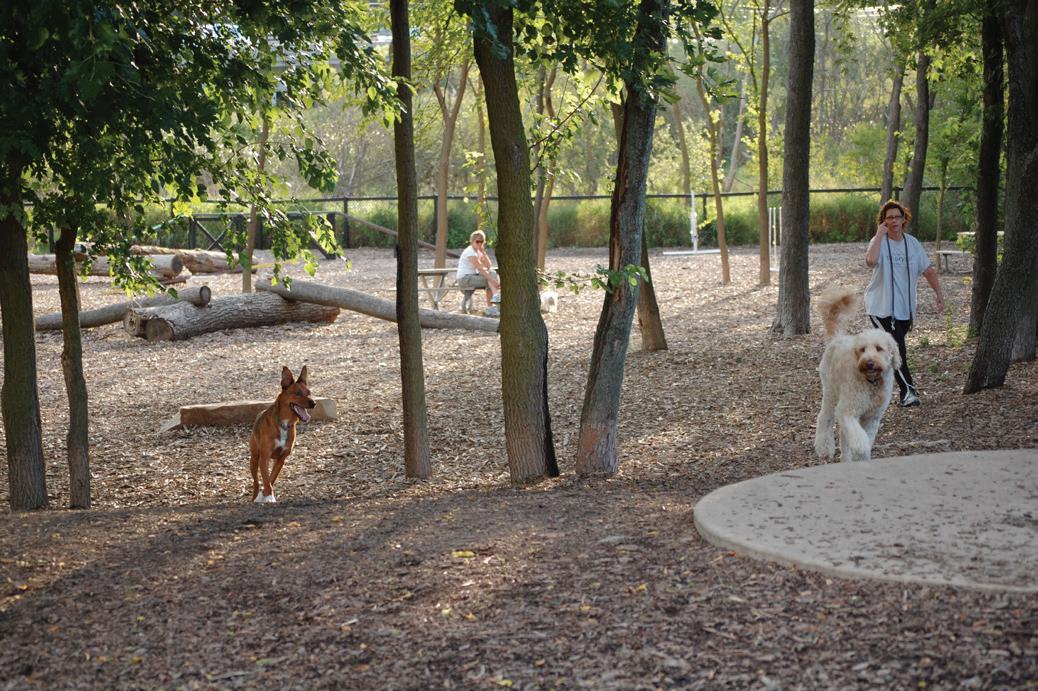
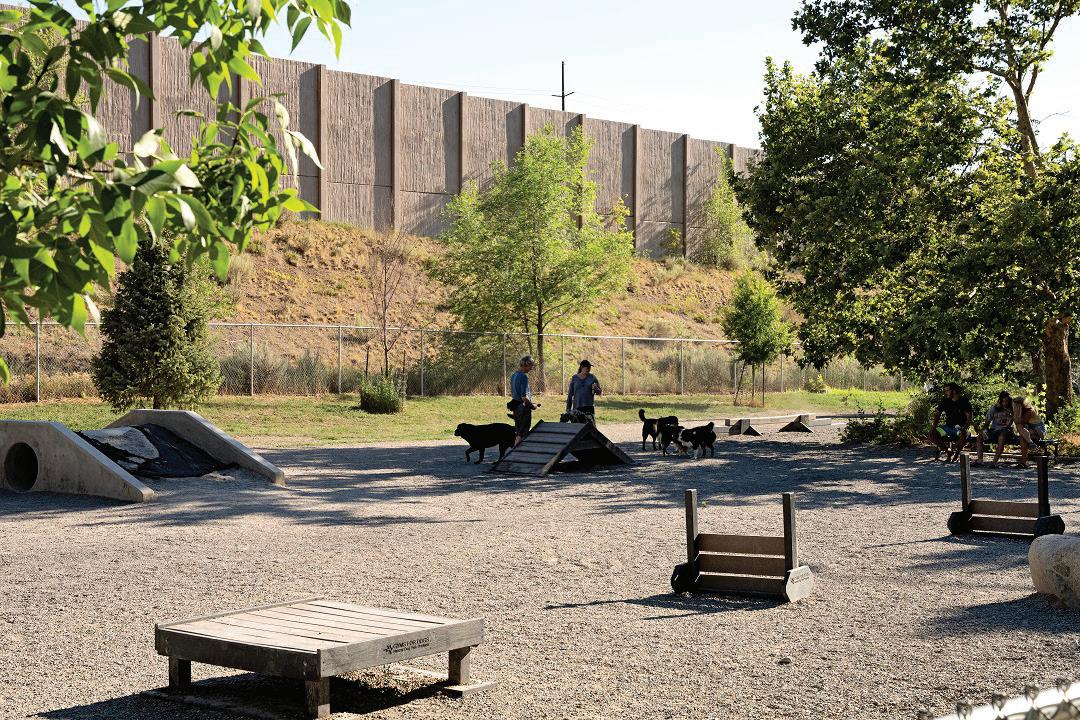
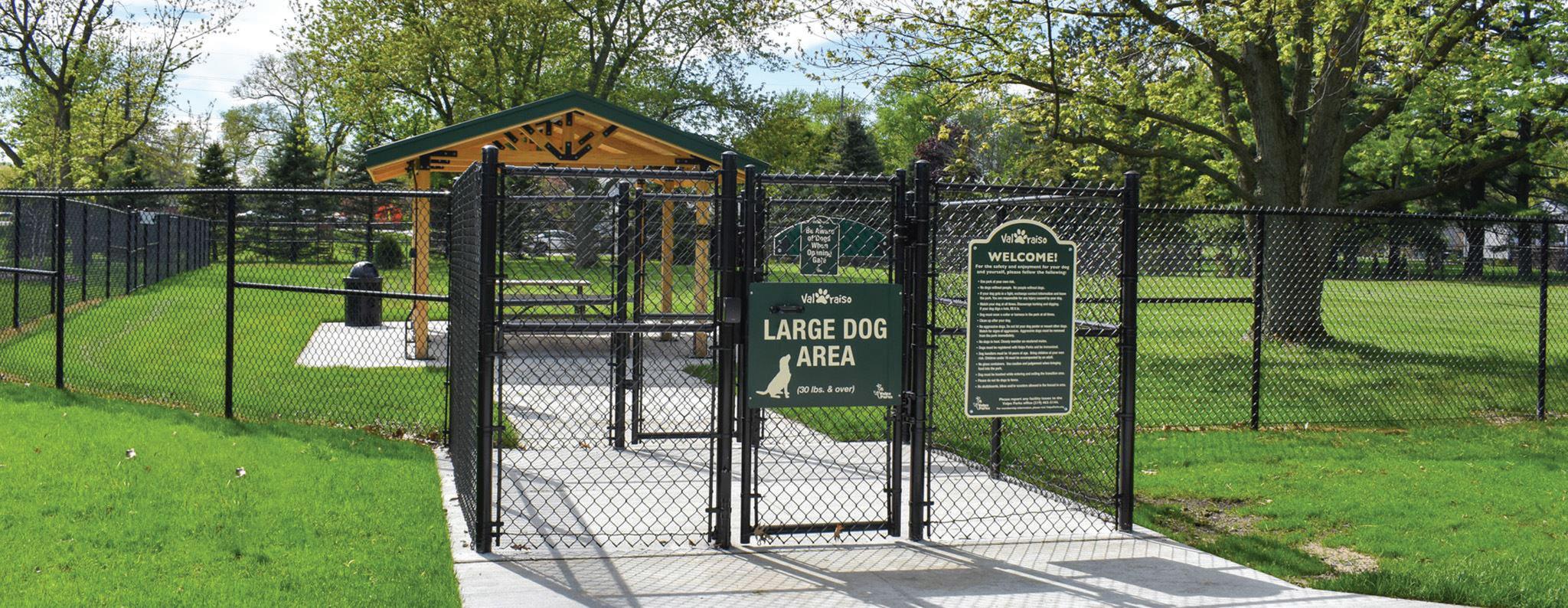
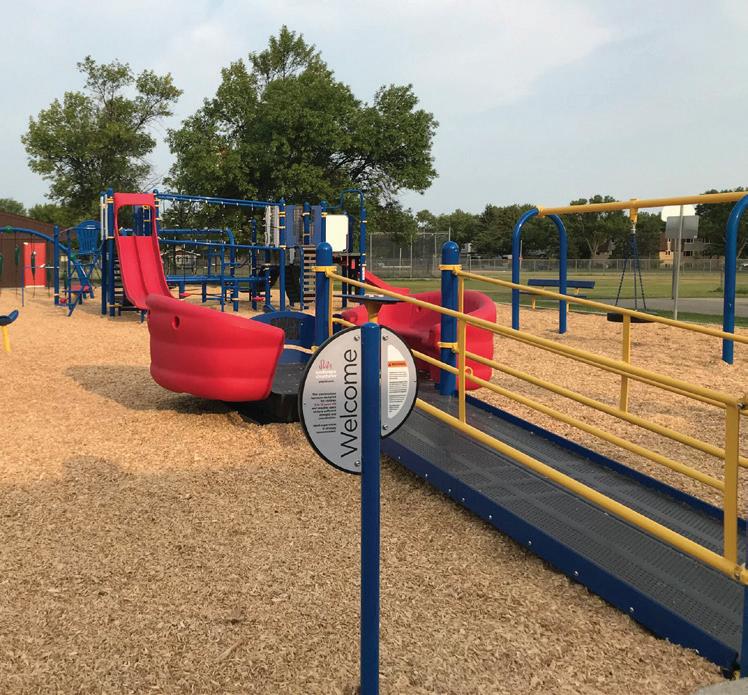
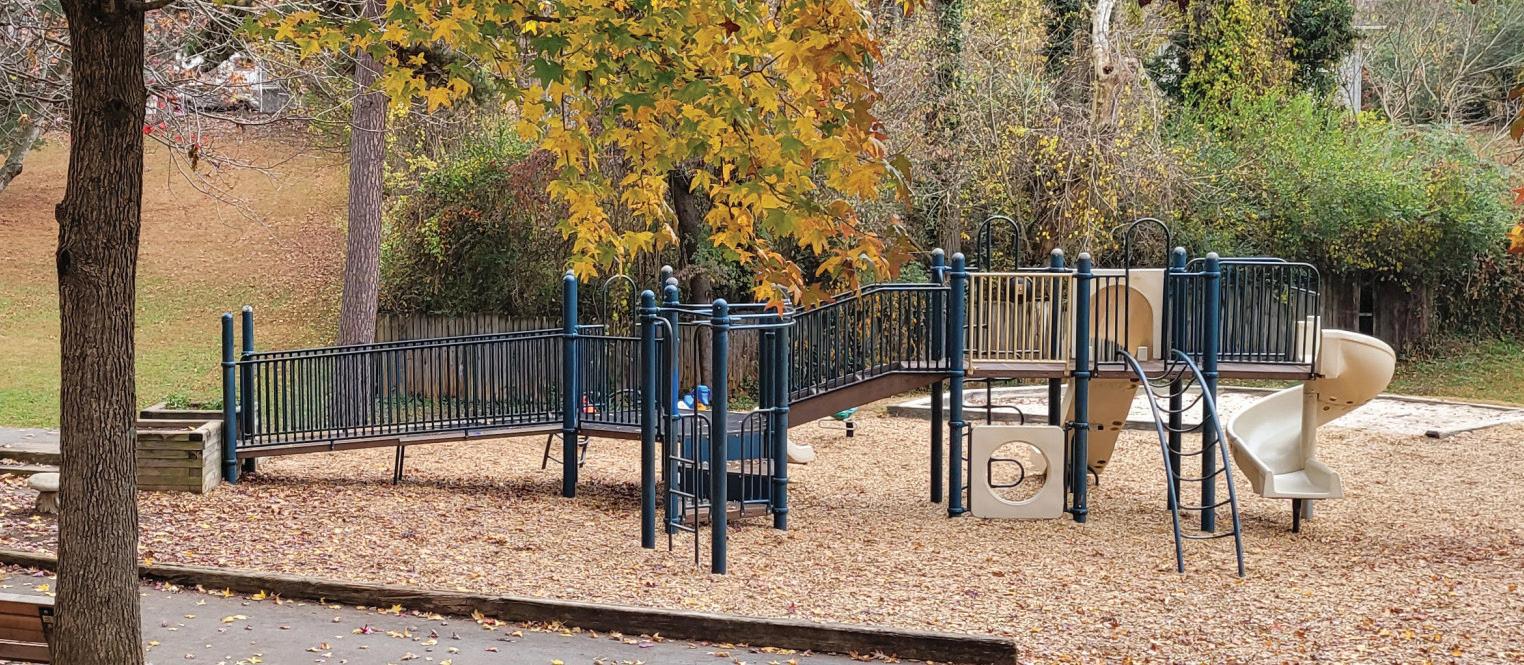
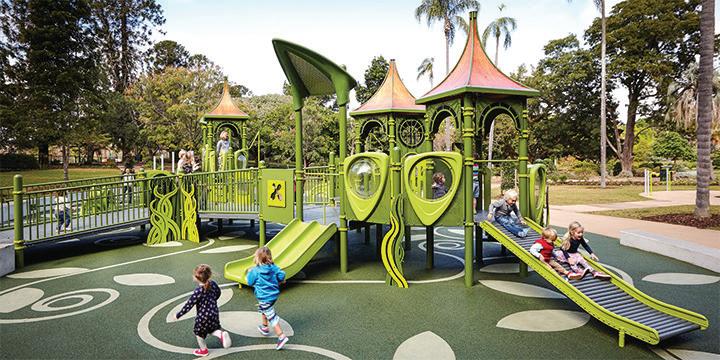
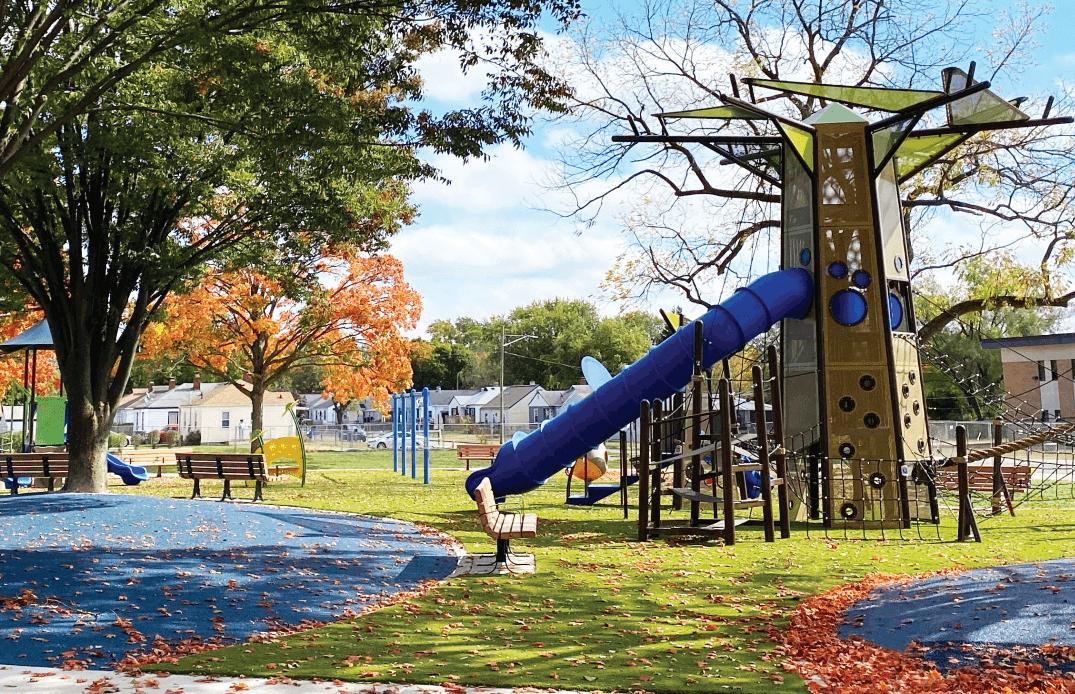
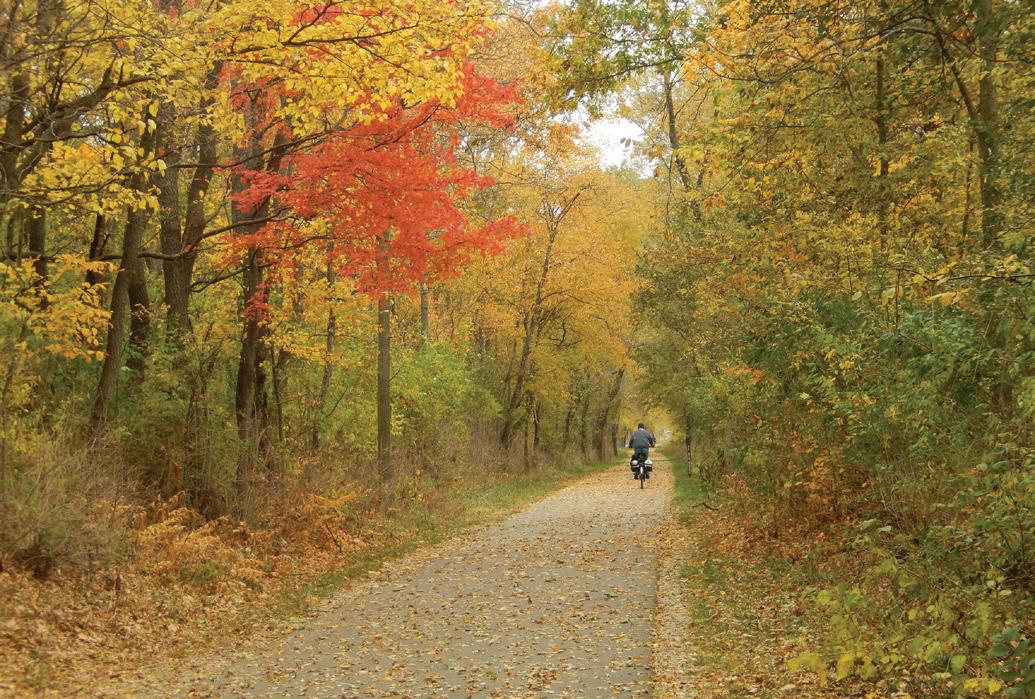
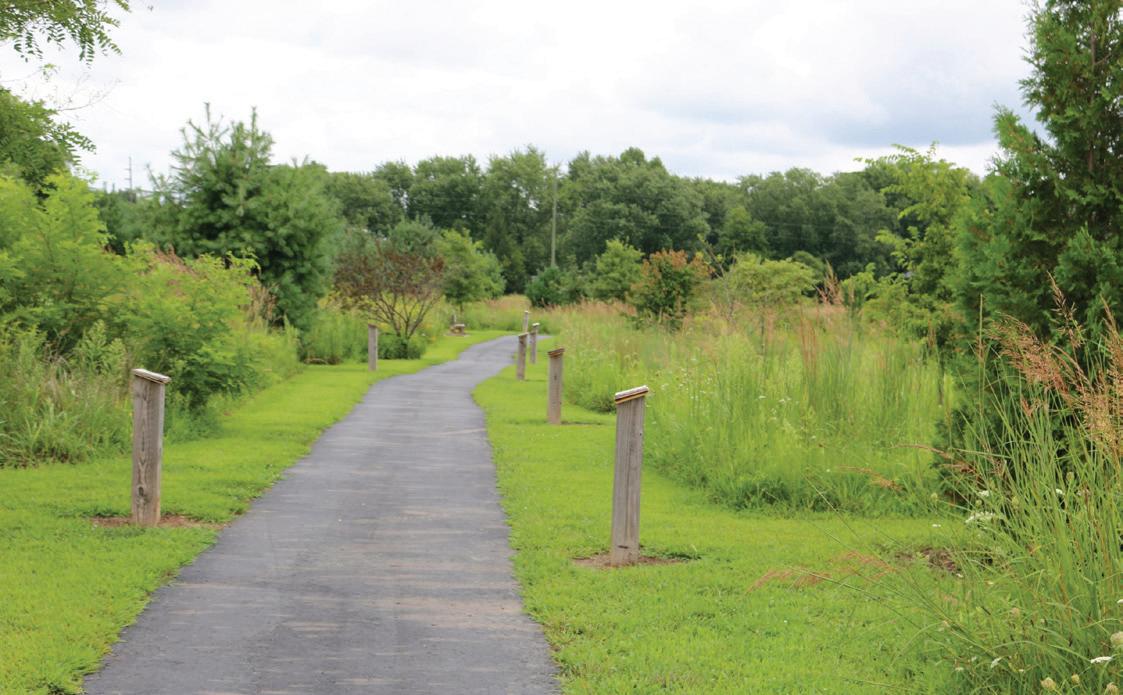
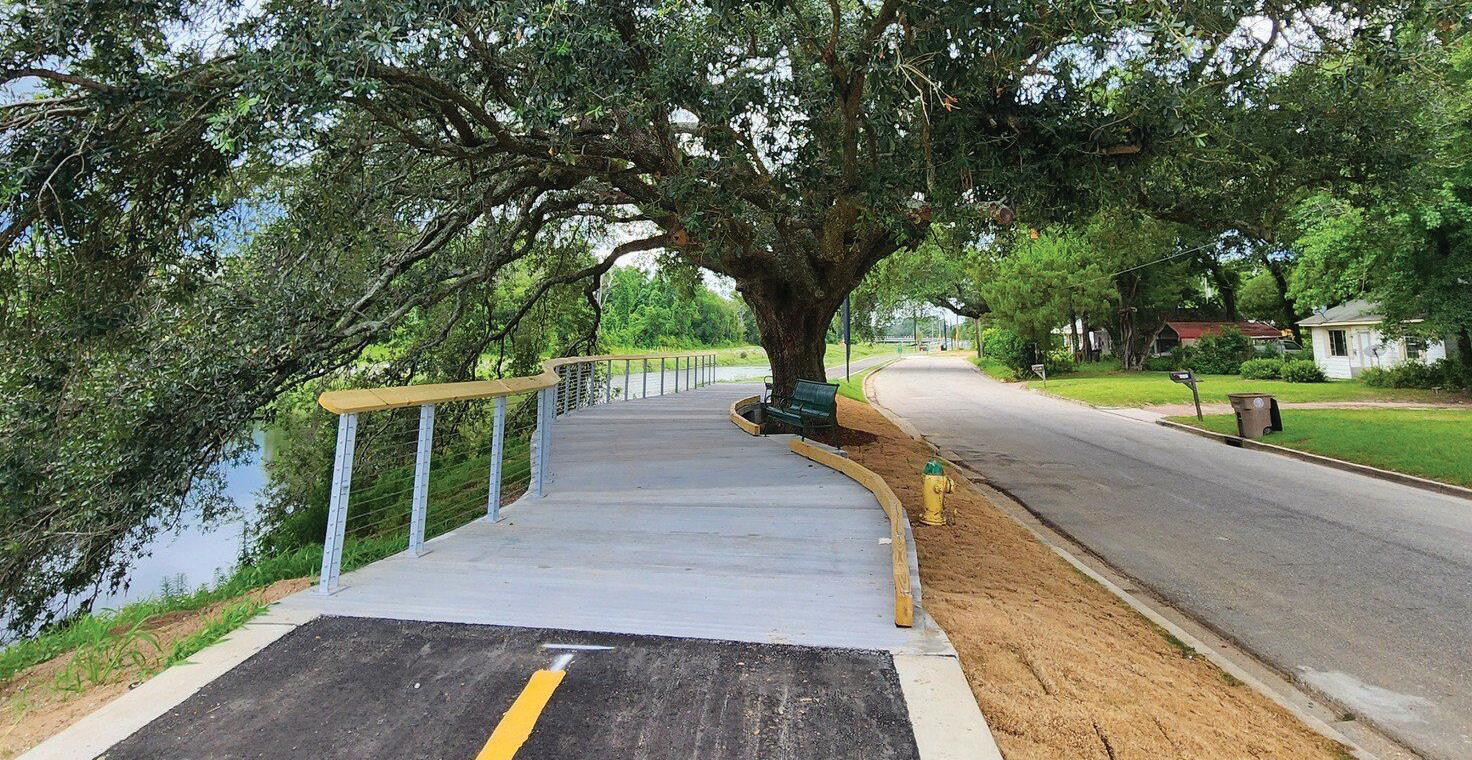
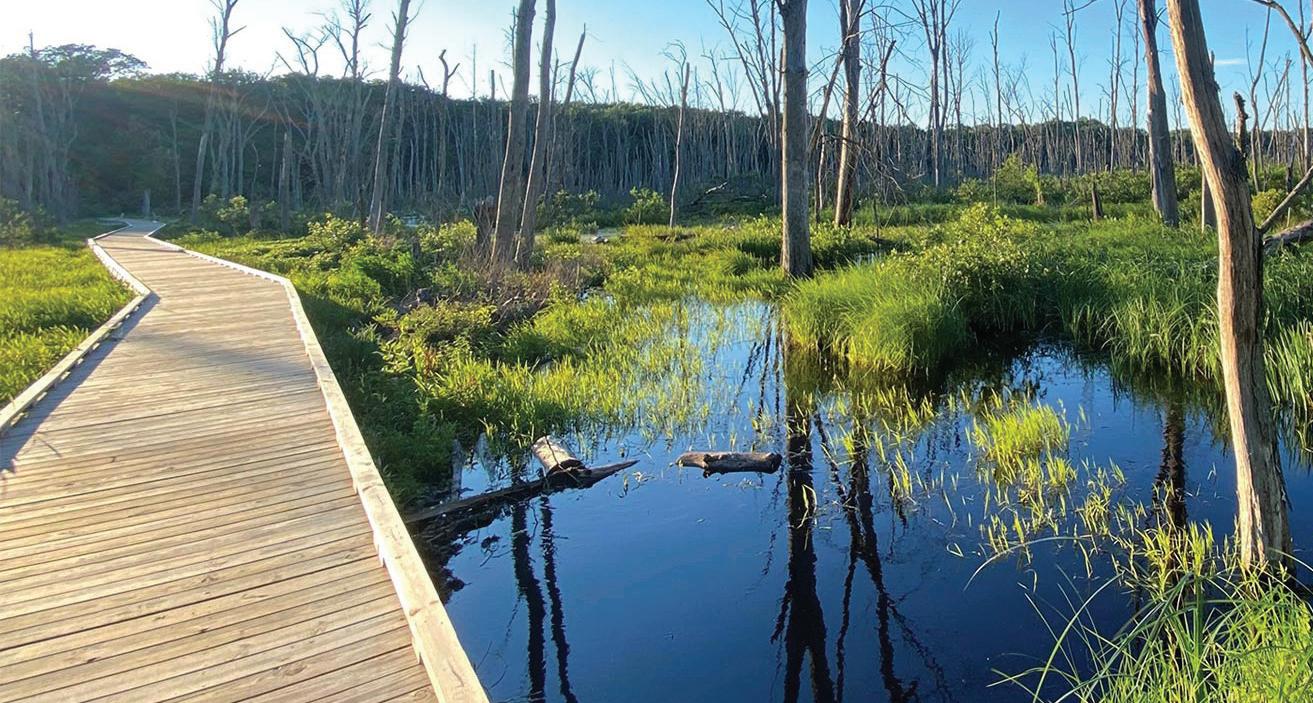
Perform detailed assessments of existing facilities, open spaces, and natural resources to identify improvement needs.
1.1.1Create Inventory of Assets
Developing a detailed inventory of all facilities, open spaces, and natural resources should come first. It provides a comprehensive overview of what exists and establishes a baseline for inspections, compliance checks, and future improvements.
1.1.2Create Asset Inspection for and Conduct Site Inspections
Once the inventory is in place, begin conducting site inspections to assess the current condition of all assets. This will give you detailed data on what needs repair or improvement.
1.1.3Engage Stakeholders
After initial inspections, start gathering community feedback on facility conditions and priorities for improvement. This helps refine the data from site inspections and ensures that community needs are considered.
1.1.4Assess Regulatory Compliance (Refine to include the Public Works)
Once initial site inspections are underway and feedback is collected, start evaluating facilities for compliance with safety, ADA, and environmental regulations.
1.1.5Prioritize Improvement Needs
After gathering site inspection data, stakeholder feedback, and compliance assessments, prioritize improvements. By this stage, you’ll have a solid understanding of what’s most urgent and impactful, allowing you to allocate resources effectively.
1.2 Adopt ecologically sensitive maintinance practices and efficient water management systems.
1.2.1Train Staff in Eco-friendly Practices
Begin by training maintenance staff in eco-friendly practices. Ensuring your team is knowledgeable and prepared is essential for successfully implementing other initiatives.
1.2.2Reduce Chemical Use
Once staff is trained, start phasing out synthetic chemicals. Reducing chemical use early ensures healthier ecosystems and prepares the parks for future changes like native landscaping.
Specific: Develop and maintain a dynamic inventory of all park facilities, open spaces, and natural resources, with yearly updates.
Measurable: By the end of year 1, establish a comprehensive inventory, updating 20% of asset details each subsequent year
Achievable: Utilize existing records, inspection reports, and ongoing assessments to keep the inventory accurate.
Relevant: Maintains an up-to-date record of assets, supporting future improvement pro ects.
Time-bound: Complete initial inventory by year 1 and update it annually thereafter.
Specific: Inspect all park facilities, open spaces, and natural resources on a rotational basis over five years.
Measurable: Inspect 20% of sites each year and document conditions with photos and written reports.
Achievable: Assign inspection teams to cover 10 sites per quarter
Relevant: Ensures continuous assessment and up-to-date understanding of park asset conditions.
Time-bound: Complete 100% of inspections within 5 years, reviewing each site at least once.
Specific: Engage park users, staff, and community members on an annual basis to gather feedback on facility conditions and improvement needs.
Measurable: Collect input from at least 500 individuals annually, via surveys, online feedback, and two in-person focus groups.
Achievable: Use a combination of digital outreach and community meetings to gather broad input.
Relevant: Regular feedback ensures evolving community needs are met.
Time-bound: Conduct feedback sessions yearly, with analysis completed within 3 months each year.
Specific: Assess all facilities and open spaces for compliance with safety, ADA, and environmental regulations over five years
Measurable: Review 20% of locations for compliance each year and create a list of deficiencies for act on.
Achievable: Collaborate with legal and environmental consultants for reviews, focusing on different areas each year.
Relevant: Ensures that all facilities remain in compliance with current laws and regulations.
Time-bound: Complete the compliance assessment for 100% of facilities within 5 years
Specific: Develop an evolving, prioritized list of improvement needs based on site inspections and stakeholder feedback.
Measurable: Reassess and update the list annually, focusing on completing improvements for 20% of identified needs each year.
Achievable: Use data-driven criteria like safety, community input, and budget to determine the most critical improvements.
Relevant: Guides long-term budgeting and project planning
Time-bound: Review and reprioritize improvement needs yearly, with the full plan evolving across the five-year period
Train 100% of maintenance staff in eco-friendly practices.
Measurable: Train 20% of staff each year.
Achievable: Conduct annual workshops and refresher courses.
Relevant: Ensures consistent implementation of sustainable practices.
Time-bound: Complete training for all staff by the end of Year 5.
Specific: Decrease the use of synthetic chemicals by 50%
Measurable: Cut chemical use by 10% each year.
Achievable: Phase in organic alternatives gradually.
Relevant: Promotes ecological health and reduces environmental harm.
Time-bound: Achieve 50% reduction by the end of Year 5.
1.2.3Implement Native Landscaping
With trained staff and reduced chemical use, start transitioning to native plants. Native landscaping reduces the need for chemicals and water, complementing water efficiency efforts.
Specific: Transition 50% of park landscaping to native plants.
Measurable: Complete native plant installations in 10% of parks each year.
Achievable: Prioritize high-water-use areas first.
Relevant: Reduces water, fertilizer, and pesticide use.
Time-bound: Complete 50% conversion by the end of Year 5.
in Year 3Q4 2029
1.2.4Utilize Smart Irrigation Systems
Install smart irrigation systems to improve water efficiency as native plants are phased in. These systems will help ensure that water is used more sustainably.
1.2.5Promote Water Recycling
After reducing water usage through native landscaping and smart irrigation, implement water recycling systems to further reduce water consumption.
1.2.6 Energy Improvement Program and Carbin ommissions decrease
Work with Packages with utility companies. AES and Indiana American Water
1.3 Install fitness zones, inclusive playgrounds, and other ammenities that encourage active use.
1.3.1Upgrade Walking Paths
Improve accessibility and encourage park use for all visitors. Paths are foundational and will serve both fitness zones and playgrounds.
1.3.2Create Inclusive Playgrounds
Begin constructing inclusive playgrounds early to meet community needs for accessible play areas.
1.3.3Install Fitness Zones
Start adding fitness zones after path upgrades are underway, as walking paths will help facilitate movement between fitness areas.
1.3.4Add Multi-Use Courts
Courts should be built or upgraded after paths and playgrounds to ensure that the infrastructure is in place for increased usage.
1.3.5Install Outdoor Fitness Signage
Install instructional signage alongside the development of fitness zones and walking paths to guide usage.
1.4 Restore native habitats and manage invasive species to support biodiversity.
1.4.1Identify Priority Areas for Habitat Restoration
Establish which areas need the most attention to focus efforts efficiently.
1.4.2Develop a Native Plant Restoration Plan
Plan restoration efforts in identified areas to ensure a structured approach to habitat recovery.
Specific: Install smart irrigation systems in 100% of parks.
Measurable: Equip 20% of parks with smart irrigation each year.
Achievable: Use budget allocation for gradual implementation.
Relevant: Improves water efficiency and reduces waste.
Time-bound: Complete installations by the end of Year 5.
Specific: Implement water recycling systems in 30% of parks.
Measurable: Install water recycling in 6% of parks each year.
Achievable: Start with high-water-use parks first.
Relevant: Reduces dependence on municipal water.
Time-bound: Achieve 30% coverage by the end of Year 5.
Specific:
Measurable:
Achievable: Relevant:
Time-bound:
Specific: Renovate or add walking paths in 15 parks to improve accessibility and encourage use.
Measurable: Upgrade 3 parks per year with enhanced walking paths.
Achievable: Focus on high-traffic parks and areas with outdated or insufficient paths.
Relevant: Promotes walking, jogging, and general park use.
Time-bound: Complete all upgrades by the end of Year 5.
Specific: Develop fully accessible, inclusive playgrounds in 8 parks
Measurable: Install inclusive playgrounds in 2 parks per year.
Achievable: Partner with accessibility experts to ensure compliance with ADA standards. Relevant: Promotes active play for children of all abilities.
Time-bound: Complete installations by the end of Year 4.
Begin in Year 2, equipping 20% of parks annually, completing by Year 5. Q4 2029
Begin in Year 3, installing systems in 6% of parks each year, achieving 30% coverage by Year 5. Q4 2029
Start in Year 1, anQ4 2029
Start in Year 1, complete by Year 4.
Specific: Install outdoor fitness zones in 10 parks Start in Year 2, complete by Year 5.
Measurable: Equip 2 parks per year with fitness stations.
Achievable: Leverage existing park space and prioritize high-traffic areas.
Relevant: Encourages physical activity for adults and teens.
Time-bound: Complete all 10 installations by the end of Year 5.
Specific: Build or upgrade multi-use courts (e.g., basketball, tennis, pickleball) in 6 parks.
Measurable: Construct or upgrade courts in 2 parks per year.
Achievable: Identify parks with available space or outdated courts for refurbishment. Relevant: Increases opportunities for recreational sports and fitness activities.
Time-bound: Complete all court installations by the end of Year 3.
Specific: Install instructional signage at all fitness zones and along walking paths to guide proper use of equipment and promote health.
Measurable: Install signage in 10 parks by the end of Year 5
Achievable: Design and install signage alongside fitness zone and path improvements.
Relevant: Educates users on proper exercise techniques and encourages active use.
Time-bound: Install signage as each fitness zone is completed.
Specific: Survey all parks and identify 10 high-priority areas for native habitat restoration.
Measurable: Survey 100% of parks and complete the identification of priority areas within the first year.
Achievable: Use ecological surveys and expert consultation to guide decisions.
Relevant: Focuses on areas with the greatest potential for biodiversity improvement.
Time-bound: Complete identification by the end of Year 1.
Specific: Create a comprehensive plan to restore native plant species in identified areas.
Measurable: Develop restoration plans for 2 areas per year.
Achievable: Collaborate with local botanists and environmental experts.
Relevant: Supports long-term biodiversity and ecosystem health.
Time-bound: Complete plans for all 10 areas by Year 5.
Start in Year 2, complete by Year 3
Start in Year 2, finish by Year 5
Complete by the end of Year 1
Start in Year 1, complete by Year 5
1.4.3Replant Native Vegetation
After invasive species are removed, native plants should be reintroduced to restore the ecosystem.
1.4.4Monitor and Maintain Restored Habitats
Monitoring ensures that restored areas continue to thrive and that any issues can be addressed early.
1.5 Utilize smart technology and mobile apps to monitor park usage and promote health and conservation.
1.5.1Partner with Third-party Data Providers
Establishing partnerships early ensures you have expert support for analyzing data from sensors and providing actionable insights.
1.5.2Implement Smart Sensors for Park Usage Monitoring
Install sensors to collect necessary data, which will be analyzed by third-party partners.
1.5.3Use Data for Resource Allocation and Conservation Campaigns
Once data is available, use it to improve park management and conservation efforts.
1.6 Collaborate with health organizations for programming and funding to support improvements.
1.6.1Identify and Contact Health Organizations for Partnerships
Establish relationships early to initiate potential collaboration and funding opportunities.
1.6.2Secure Partnership Agreements
Formalize agreements to ensure long-term collaboration and support for health programs.
1.6.3Develop Joint Health Programs
Start creating health-focused programs once partnerships are formalized. These programs will be the visible outcome of the collaboration.
1.6.4Apply for Joint Funding Opportunities
Once partnerships are established and programs are underway, apply for joint grants to support ongoing initiatives.
Specific: Reintroduce native vegetation in cleared areas.
Measurable: Replant native species in 2 areas per year after invasive species are removed.
Achievable: Source native plants from local nurseries and partner with volunteer groups for planting.
Relevant: Restores ecosystems and enhances habitat for local wildlife.
Time-bound: Complete replanting in 10 areas by Year 5.
Specific: Establish a monitoring program to track biodiversity and habitat health in restored areas.
Measurable: Monitor 100% of restored areas with biannual assessments.
Achievable: Utilize staff and volunteers to conduct regular site visits and data collection.
Relevant: Ensures the long-term success of restoration efforts.
Time-bound: Implement the monitoring program by Year 2 and continue through Year 5.
Specific: Establish partnerships with third-party companies to analyze park usage data and provide health and conservation insights
Measurable: Finalize contracts with at least 2 data analytics firms by the end of Year 2.
Achievable: Use budget for external services and select providers with experience in environmental data.
Relevant: Enhances park management by leveraging expert analysis and comprehensive reports.
Time-bound: Complete partnerships by the end of Year 2, with annual data reports starting in Year 3.
Specific: Install smart sensors in 15 parks to track visitor numbers and activity patterns.
Measurable: Install sensors in 3 parks per year.
Achievable: Prioritize high-traffic parks first, using budgeted funds for gradual implementation.
Relevant: Provides data to improve park management and resource allocation.
Time-bound: Complete sensor installations in all 15 parks by Year 5.
Specific: Utilize data from sensors and third-party reports to guide resource allocation and launch conservation awareness campaigns.
Measurable: Use data to adjust resource allocation in at least 5 parks by Year 4 and launch 2 conservation campaigns based on visitor patterns.
Achievable: Collaborate with third parties to interpret data for actionable insights.
Relevant: Ensures park resources are optimized and targeted conservation efforts reach visitors.
Time-bound: Adjust resource allocation by Year 4 and launch campaigns by Year 5.
Specific: Identify 10 potential health organizations for collaboration on park programming and funding.
Measurable: Reach out to at least 2 organizations per quarter.
Achievable: Use existing networks and outreach methods to initiate contact.
Relevant: Builds relationships that provide expertise and funding for health-focused park improvements.
Time-bound: Complete initial outreach by the end of Year 1.
Specific: Formalize partnership agreements with at least 5 health organizations.
Measurable: Secure 1 partnership per year.
Achievable: Negotiate mutually beneficial terms with health organizations.
Relevant: Provides access to funding, expertise, and program development opportunities.
Time-bound: Secure all agreements by the end of Year 5.
Specific: Create 3 new health-focused programs in collaboration with partner organizations.
Measurable: Launch 1 program per year starting in Year 2.
Achievable: Co-develop program plans with health organization partners to ensure alignment with both parties' goals.
Relevant: Encourages park usage and supports public health through fitness, wellness, and mental health initiatives.
Time-bound: Complete all programs by Year 5.
Specific: Apply for 3 joint funding grants with partner health organizations.
Measurable: Submit 1 grant application per year, starting in Year 2.
Achievable: Leverage combined resources to apply for state, federal, and private grants.
Relevant: Secures additional funding to support park improvements and health programs.
Time-bound: Secure funding for joint initiatives by the end of Year 5.
Start in Year 2, complete by Year 5.
1.6.5Monitor Program Impact and Share Results
Specific: Develop an evaluation system to track the health impact of joint programs.
Measurable: Monitor all programs, conducting biannual assessments of health outcomes.
Start in Year 2 and continue through Year 5.
Complete by Year 2.
Start in Year 1, complete by Year 5.
Start using data by Year 3, with full implementation by Year 5.
Complete initial outreach by Year 1.
Start securing agreements in Year 1, complete by Year 5.
Start in Year 2, complete by Year 5.
Start in Year 2, complete by Year 5.
Start monitoring and sharing results in Year 2, continuing through Year 5.
Ongoing monitoring ensures that the partnership is yielding positive results and supports continued funding.
Achievable: Collaborate with health organizations to use data collection tools for evaluation. Relevant: Demonstrates the value of collaboration and justifies ongoing funding.
Time-bound: Begin monitoring in Year 2, with impact reports released annually through Year 5.
1.7 Reduce invasive and non-native species, control nuisance wildlife, continue reforestation efforts, and support continued use of native planning.
1.7.1Develop a Comprehensive Invasive Species Removal Plan
Identifying and addressing invasive species is crucial to support biodiversity before other initiatives can proceed effectively.
1.7.2Remove Invasive Species
Removing invasive species is crucial to give native plants a chance to thrive and should be done before planting new vegetation.
1.7.3Expand Reforestation and Native Planting Efforts
Reforestation and native planting should follow invasive species removal to allow native plants to thrive.
1.7.4Implement Wildlife Management Strategies
Managing nuisance wildlife should follow the groundwork laid by invasive species control and reforestation efforts.
Specific: Create a detailed plan to reduce invasive and non-native species in 10 targeted parks.
Measurable: Develop plans for 2 parks per year.
Achievable: Collaborate with ecological experts and use a phased approach for species removal. Relevant: Supports biodiversity by prioritizing the removal of invasive species.
Time-bound: Complete plans for all 10 parks by Year 5.
Specific: Remove invasive plant species in 10 priority areas.
Measurable: Clear invasive species from 2 areas per year.
Achievable: Allocate resources for targeted removal and ongoing monitoring. Relevant: Reduces competition for native species and helps restore ecological balance.
Time-bound: Remove invasive species from all 10 areas by Year 5.
Specific: Plant native trees and vegetation in 12 parks to support reforestation and habitat restoration.
Measurable: Plant native species in 3 parks per year.
Achievable: Work with local nurseries and volunteer groups to source and plant native species. Relevant: Restores natural habitats, supports biodiversity, and enhances park ecosystems.
Time-bound: Complete planting in all 12 parks by Year 5.
Specific: Implement wildlife management strategies to control nuisance species in 5 high-priority parks.
Measurable: Implement strategies in 1 park per year.
Achievable: Partner with local wildlife agencies to develop humane control methods. Relevant: Helps restore ecological balance and reduces damage caused by nuisance wildlife.
Time-bound: Complete implementation by Year 5.
1.8 identify opportunities for expansion and land acquisition that responds to the residential growth planned in the Future Land Use Map
1.8.1Review Future Land Use Map and Residential Growth Projections
Understanding future growth is essential for identifying where expansion should occur.
1.8.2Conduct Site Assessments for Potential Expansion Areas
Assessing potential sites ensures that land selected for acquisition is suitable.
1.8.3Develop Acquisition Proposals and Funding Strategies
Preparing proposals and funding strategies is critical for securing necessary resources and approvals.
1.8.4Negotiate and Secure Land Acquisition Deals
Acquiring land based on completed proposals and strategies allows for physical expansion of park areas.
1.8.5Plan and Design Park Expansion Projects
Designing and planning new park areas should follow land acquisition to ensure effective use and integration.
Specific: Analyze the Future Land Use Map and residential growth projections to identify potential areas for park expansion and land acquisition.
Measurable: Complete the analysis for all identified residential growth areas.
Achievable: Use GIS tools and planning reports to guide the review.
Relevant: Ensures that expansion efforts align with projected growth.
Time-bound: Complete analysis by the end of Year 1.
Specific: Perform site assessments on the top 5 potential expansion areas identified in the analysis.
Measurable: Complete assessments for 1 site per quarter.
Achievable: Engage with land surveyors and environmental experts for detailed assessments. Relevant: Evaluates feasibility and suitability for park expansion.
Time-bound: Complete assessments by the end of Year 2.
Specific: Create detailed proposals and funding strategies for acquiring selected land parcels.
Measurable: Develop and submit proposals for at least 3 priority parcels.
Achievable: Partner with real estate experts and financial analysts to prepare proposals.
Relevant: Secures necessary funding and justifies land acquisition to stakeholders.
Time-bound: Complete proposals and funding strategies by the end of Year 3.
Specific: Finalize negotiations and acquire land for expansion based on approved proposals.
Measurable: Successfully acquire 2 land parcels per year.
Achievable: Work with legal and real estate professionals to close deals.
Relevant: Expands park areas to meet future needs.
Time-bound: Acquire all targeted parcels by the end of Year 5.
Specific: Develop detailed plans and designs for new park areas to be incorporated into the park system.
Measurable: Complete planning and design for all acquired land parcels.
Achievable: Collaborate with landscape architects and urban planners.
Relevant: Ensures new park areas are effectively integrated into the existing system.
Time-bound: Complete all planning and design work by the end of Year 5.
Start in Year 1, complete by Year 5.
Start in Year 2, complete by Year 5.
Start in Year 1, complete by Year 5.
Start in Year 2, complete by Year 5.
Complete by the end of Year 1.
Start in Year 1, complete by the end of Year 2.
Start in Year 2, complete by the end of Year 3.
Start in Year 3, complete by the end of Year 5.
Start in Year 4, complete by the end of Year 5.
2.1.1Analyze Current Trail Network and Identify Gaps
2.1.2Identify Key Areas for Trail Expansion and Community Hub Connections
Specific : Conduct an analysis of the existing trail network to identify gaps and areas where expansions are needed
Measurable : Complete analysis for the entire trail network.
Achievable : Use GIS mapping tools and consult with urban planners to highlight gaps.
Relevant : Ensures the expansion focuses on areas that will improve connectivity and accessibility.
Time-bound : Complete analysis by the end of Year 1.
Specific : Identify 5 key areas for trail expansion that connect to schools, parks, business districts, and other community hubs
Measurable : Pinpoint and prioritize 1 key area per quarter based on proximity to hubs.
Achievable : Collaborate with community stakeholders and transportation planners.
Relevant : Enhances trail network connectivity, encourages active transportation, and supports local engagement.
Time-bound : Complete identification of all 5 areas by
2.1.3Develop a Phased Expansion Plan
2.1.4Secure Funding and Permits for Trail Expansion
2.1.5Begin Construction of New Trail Segments
Specific : Create a phased expansion plan for adding new trails in the 5 identified key areas
Measurable : Develop detailed plans for 2 areas per year, including funding, permitting, and construction timelines
Achievable : Partner with public works departments and seek grant funding for implementation.
Relevant : Supports sustainable trail network growth aligned with community needs.
Time-bound : Complete phased expansion plan by the end of Year 3.
Specific : Apply for grants, partnerships, and municipal funding to support the construction of trails in the 5 dentified key areas
Measurable : Secure funding and permits for at least 2 areas per year.
Achievable : Work with local governments, private sector partners, and community organizations to gather financial resources and obtain necessary permits.
Relevant : Ensures that resources and legal approvals are in place to proceed with trail expansion.
Time-bound : Complete funding and permitting process for all areas by the end of Year 4.
Specific : Start construction on new trail segments in the 5 identified areas.
Measurable : Begin construction in 2 areas per year.
Achievable : Coordinate with construction firms and public works departments to implement the plan.
Relevant : Expands the trail network, connecting community hubs and filling network gaps.
Time-bound : Complete construction in all identified areas by the end of Year 5.
2.2 Design trails that accommodate various activities like walking, biking, and running to encourage diverse use.
2.2.1Conduct User Needs Assessment
Specific : Survey park users and community members to assess needs and preferences for trail activities like walking, biking, and running
2.2.2Develop Multi-use Trail Design Standards
2.2.3Identify and Prioritize Locations for Multi-use Trails
2.2.4Secure Funding and Permits for Trail Construction
2.2.5Construct and Upgrade Multi-use Trails
Measurable Collect feedback from at least 500 users through surveys or community meetings.
Achievable : Use online surveys, social media, and inRelevant : Ensures trail designs meet the diverse needs of park users.
Time-bound : Complete the assessment by the end of Year 1.
Specific : Create trail design standards that accommodate walking, biking, and running EOY 2026
Measurable :Draftstandardsthatapplytoatleast3new
Achievable : Collaborate with landscape architects and transportation planners to establish guidelines.
Relevant : Provides a framework for consistent and userfriendly trail designs.
Time-bound : Finalize design standards by the end of Year 2.
Specific : Identify 5 locations within the park system where multi-use trails can be added or upgraded.
Measurable Select and prioritize 1 location per quarter.
Achievable :Usetheresultsoftheuserneeds
Relevant : Focuses on high-demand areas to maximize trail usage.
Time-bound : Complete identification and prioritization by the end of Year 3.
Specific : Apply for grants and obtain permits for constructing or upgrading multi-use trails in the identified locations
Measurable Secure funding for at least 2 locations per year.
Achievable : Leverage local, state, and federal funding
Relevant : Ensures financial and legal support for trail pro ects.
Time-bound : Secure funding and permits for all locations by the end of Year 4.
Specific : Build or upgrade multi-use trails in the 5 identified locations to accommodate walking, biking, and running
Measurable Complete construction in 2 locations per
Achievable : Partner with contractors and public works teams to carry out construction.
Relevant : Expands the trail network to meet the diverse Time-bound : Complete all trail construction by the end of Year 5.
2.3 Collaborate with local groups, businesses, and schools to support trail development and maintenance.
2.3.1Identify and Engage Local Partners
Specific : Identify and engage 10 local groups, businesses, and schools to collaborate on trail deve opment and maintenance init atives
Measurable Reach out to at least 2 potential partners per quarter.
Achievable : Use existing networks, outreach programs, and public events to engage partners.
Relevant : Strengthens community involvement and resources for trail pro ects.
Time-bound : Complete outreach by the end of Year 1.
EOY 2027
EOY 2028
EOY 2029
EOY 2025
2.3.2Develop Partnership Agreements for Trail Support
2.3.3Launch Volunteer and Sponsorship Programs
2.3.4Host Community Events for Trail Development
2.3.5Evaluate and Report on Partnership Contributions
Specific : Formalize partnership agreements with at least 5 groups, businesses, or schools to contribute to trail development or maintenance
Measurable : Secure 1 agreement every 6 months.
Achievable : Negotiate terms that outline the specific contributions (e.g., funding, volunteer work, or materials).
Relevant : Ensures committed support for long-term trail initiatives.
Time-bound : Secure all agreements by the end of Year 2.
Specific : Create volunteer and sponsorship programs with partners for trail development and maintenance efforts
Measurable : Launch 1 volunteer or sponsorship program with each partner organization.
Achievable : Work with community organizations and businesses to coordinate activities and funding opportunities
Relevant : Provides ongoing support for trail maintenance and development.
Time-bound : Launch programs with at least 3 partners by the end of Year 3.
Specific : Organize 4 community events per year (e.g., trail cleanup days, trail-building workshops) to engage loca vo unteers and businesses
Measurable : Host 1 event per quarter in collaboration with local partners.
Achievable : Coordinate with partners to provide materials, volunteers, and promotion.
Relevant : Increases community involvement and awareness of trail projects.
Time-bound : Host ongoing events starting in Year 2 and continuing through Year 5.
Specific : Develop a system to evaluate the impact of partnerships on trail development and maintenance, and provide annua reports to stakeho ders
Measurable : Complete 1 evaluation and report per year.
Achievable : Work with partners to collect data on volunteer hours, financial contributions, and project outcomes
Relevant : Demonstrates the value of partnerships and informs future collaboration efforts.
Time-bound : Begin evaluation and reporting in Year 3, continuing through Year 5.
2.4 Incorporate lighting, signage, and ADA-compliant features to make trails safe and accessible for everyone.
2.4.1Conduct Accessibility and Safety Assessment of Existing Trails
2.4.2Develop a Plan for Implementing Safety and Accessibility Enhancements
2026 to 2027
2026 to 2029
2027 to 2029
Specific : Perform an audit of all existing trails to identify areas lacking proper lighting, signage, or ADA-compliant features. EOY 2025
Measurable : Complete the assessment for 100% of trails.
Achievable : Use a checklist with input from safety experts and ADA specialists.
Relevant : Identifies gaps that need improvement to ensure safety and accessibility
Time-bound : Complete the assessment by the end of Year 1.
Specific : Create a detailed plan for adding lighting, signage, and ADA-compliant features to the identified trail segments
Measurable : Develop plans for at least 10 high-priority trail segments.
Achievable : Collaborate with urban planners and ADA compliance officers.
EOY 2026
2.4.3Secure Funding and Permits for Enhancements
2.4.4Implement Safety and Accessibility Upgrades
2.4.5Evaluate the Impact of Safety and Accessibility Enhancements
Relevant : Ensures a clear pathway for making trails safer and more accessible.
Time-bound : Finalize the plan by the end of Year 2
Specific : Apply for grants and allocate municipal funding to install lighting, signage, and ADA-compliant features.
Measurable : Secure funding and permits for at least 5 high-priority trail segments per year.
Achievable : Partner with local government agencies and seek federal grants for accessibility improvements.
Relevant : Guarantees financial and legal readiness for implementation.
Time-bound : Secure funding and permits by the end of Year 3.
Specific : Install lighting, signage, and ADA-compliant features on 10 high-priority trail segments.
Measurable : Complete upgrades on 2 trail segments per year.
Achievable : Work with contractors and local infrastructure teams to carry out installations.
Relevant : Enhances user experience by making trails safe and accessible for everyone.
Time-bound : Complete installations by the end of Year 5.
Specific : Conduct a post-installation evaluation to assess the effectiveness of the new lighting, signage, and ADA features
Measurable : Gather feedback from at least 200 trail users through surveys and in-person interviews.
Achievable : Use trail user data and conduct follow-up audits to measure improvements.
Relevant : Ensures that enhancements meet safety and accessibility goals.
Time-bound : Complete evaluation and feedback collection by Year 5
2.5 Pursue grants and partnerships that focus on infrastructure improvements, physical activity, and wellness initiatives to fund trail expansions.
2.5.1Research Available Grants and Partnership Opportunities
2.5.2Develop a Grant Proposal and Partnership Strategy
2.5.3Apply for Grants and Finalize Partnership Agreements
EOY 2027
2027 to 2029
EOY 2029
Specific : Identify at least 10 potential grants and partnerships focused on infrastructure improvements, physica activity, and wellness init atives.
Measurable : Compile a list of 10 viable funding sources or partners.
Achievable : Leverage existing networks, attend grant workshops, and consult with local government and nonprofit organizations
Relevant : Provides essential financial support for trail expansion projects.
Time-bound : Complete research and create the list by the end of Year 1.
Specific : Create a strategy for applying to grants and forming partnerships, focusing on high-priority trail expans on projects EOY 2026
Measurable : Submit proposals for at least 5 grants and formalize partnerships with at least 3 organizations.
Achievable : Work with a grant writer and community engagement team to draft proposals and agreements.
Relevant : Aligns trail expansions with available funding and partner support.
Time-bound : Complete strategy and submit proposals by the end of Year 2.
Specific : Submit applications for grants and formalize partnership agreements for trail expansion funding EOY 2027
Measurable : Apply for 2 grants and secure 1 partnership per year.
2.5.4Monitor and Manage Grant and Partnership Outcomes
2.5.5Expand Trail Network Using Secured Funding
Achievable : Utilize the strategy from Year 2 to guide the process.
Relevant : Secures necessary financial resources for infrastructure and wellness initiatives.
Time-bound : Complete all applications and agreements by the end of Year 3.
Specific : Track the progress of grant applications and partnership contributions, ensuring funds are used effective y for trail expansions
Measurable : Review grant and partnership progress on a quarterly basis.
Achievable : Assign a project manager to oversee fund distribution and collaboration outcomes.
Relevant : Ensures accountability and maximizes the impact of secured funds.
Time-bound : Implement ongoing monitoring starting in Year 3, continuing through Year 5.
Specific : Utilize secured grants and partnerships to fund the construction and expansion of 5 new or upgraded trail segments 2027 to 2029
Measurable : Complete 2 trail expansion projects per year.
Achievable : Partner with contractors and public works departments to implement the projects.
Relevant : Ensures that secured resources directly support trail expansion and community wellness init atives
Time-bound : Complete all trail expansions by the end of Year 5.
2.6 Organize events like community walks, runs, and biking tours to encourage use and awareness of the trail network.
2.6.1Develop a Calendar of Community Trail Events
2.6.2Partner with Local Organizations for Event Promotion and Sponsorship
2.6.3Launch Community Events to Promote Trail Usage
Specific : Plan a yearly calendar of at least 6 community events, including walks, runs, and biking tours, to promotetrailuse.
Measurable : Schedule 1 event every 2 months.
Achievable : Work with local businesses, schools, and organizations to sponsor and co-host events.
Relevant : Regular events will raise awareness and increase trail use.
Time-bound : Finalize the event calendar by the end of Year 1.
Specific : Secure partnerships with at least 5 local organizations (e.g., fitness clubs, schools, health organizations) to promote and sponsor community events.
Measurable : Formalize 5 partnerships within the first year.
Achievable : Reach out to local organizations with proposals for event promotion and sponsorship
Relevant : Boosts community engagement and resources for successful events.
Time-bound : Finalize partnerships by the end of Year 1.
Specific : Host at least 4 community trail events in the first year to promote walking, running, and biking activities
Measurable : Achieve a minimum participation of 100 attendees per event.
Achievable : Utilize partnerships for event promotion, volunteer support, and incentives (e.g., prizes, refreshments)
Relevant : Increases public use and awareness of the trail network.
Time-bound : Host all 4 events by the end of Year 2.
2025 to 2026
2.6.4Collect Feedback and Track Participation at Events
2.6.5Expand and Diversify Event Offerings Based on Feedback
Specific : Implement a feedback system (e.g., surveys or online forms) to gather participant feedback and measure event success
Measurable : Collect feedback from at least 50% of participants at each event.
Achievable : Distribute surveys in person at the event or via email afterward.
Relevant : Provides insights for improving future events and understanding community preferences.
Time-bound : Begin collecting feedback with the first event and continue after each event in Year 2 and beyond.
Specific : Use the feedback collected to introduce 2 new event types (e.g., family-friendly walks, night runs, or bike challenges) that cater to diverse groups
Measurable : Introduce 2 new event types in Year 3, increasing the total number of events to at least 8 per year.
Achievable : Adjust the event calendar based on participation trends and feedback.
Relevant : Encourages more diverse trail usage and draws different demographics.
Time-bound : Implement new event types by the end of Year 3.
2026 to Continue
Implement by 2027
Use
3.1.1Develop a Survey to Gather Public Input
3.1.2Organize Focus Groups for In-Depth Feedback
3.1.3Analyze Survey and Focus Group Data
3.1.4Share Results with Key Stakeholders
3.1.5Use Feedback to Shape Future Event Offerings
3.2 Partner with local cultural and arts organizations to co-
3.2.1Identify Key Cultural and Arts Organizations
3.2.2Formalize Collaboration Agreements
Specific : Create a comprehensive survey to assess public interest in cultural events and activities across the community.
Measurable : Collect responses from at least 500 participants.
Achievable : Distribute the survey through social media, email, and local community centers
Relevant : Identifies community preferences to inform event planning
Time-bound : Launch the survey and collect responses by the end of Year 1
Specific : Conduct 3 focus groups with a diverse range of community members to gather
Measurable : Engage at least 30 participants across 3 focus groups
Achievable : Partner with local community centers and cultural organizations to recruit participants.
Relevant : Provides detailed feedback to complement survey results.
Time-bound : Complete all focus groups by the end of Year 1
Specific : Analyze the data collected to identify trends in community desires for cultural programming.
Measurable : Produce a report summarizing key insights and recommendations.
Achievable : Work with a data analyst or research team to synthesize the findings.
Relevant : Directly informs the planning and execution of cultural events.
Time-bound : Complete the analysis by the end of Year 1
Specific : Present the findings of the survey and focus groups to local arts and cultural
Measurable : Host a meeting with at least 5 key stakeholder groups.
Achievable : Schedule a presentation or provide a digital report to relevant parties.
Relevant : Ensures stakeholders are informed and able to collaborate on future event planning.
Time-bound : Share the results by the beginning of Year 2.
Specific : Incorporate community feedback into a 2-year plan for cultural events and activities.
Measurable : Plan at least 6 new cultural events based on survey and focus group input.
Achievable : Work with the event planning team to design programming that aligns with Relevant : Ensures that future events meet community expectations and needs
Time-bound : Finalize the event plan by the end of Year 2
Specific : Identify and create a list of 10 local cultural and arts organizations for potential collaboration.
Measurable : Establish initial contact with all 10 organizations
Achievable : Use existing community networks and directories.
Relevant : Helps broaden event diversity through local partnerships.
Time-bound : Complete identification and outreach by the end of Year 1.
Specific : Formalize partnerships with at least 5 local arts or cultural organizations to co-host events.
Measurable : Secure partnership agreements with at least 5 organizations.
3.2.3Co-Create Event Concepts with Partners
3.2.4Host Collaborative Events with Partners
3.2.5Evaluate Success of Collaborative Events
3.3 Expand programming by utilizing various parks and
3.3.1Map Potential Parks and Public Spaces for Events
3.3.2Develop a Location-Specific Event Plan
Achievable : Use clear agreements to outline roles, contributions, and expectations
Relevant : Ensures strong support and clear collaboration for event planning.
Time-bound : Finalize all agreements by the end of Year 2
Specific : Work with partner organizations to develop 4 diverse event concepts that reflect various cultural and artistic disciplines.
Measurable : Finalize concepts for 4 events.
Achievable : Host creative planning sessions with partners.
Relevant : Ensures the programming represents a variety of cultural perspectives and artistic expressions.
Time-bound : Complete concept creation by the middle of Year 2.
Specific : Co-host at least 3 cultural or artistic events in the first year of partnership.
Measurable : Achieve a minimum attendance of 200 participants per event.
Achievable : Leverage partner networks and resources to promote and organize events.
Relevant : Broadens the scope and quality of cultural programming.
Time-bound : Host all 3 events by the end of Year 3.
Specific : Collect feedback from attendees and partners on the success of each event.
Measurable : Gather feedback from at least 50% of participants at each event.
Achievable : Use post-event surveys and partner debriefs.
Relevant : Provides insights to improve future collaboration and event planning.
Time-bound : Complete evaluations after each event by Year 3.
Specific : Identify at least 5 parks and public spaces that are suitable for hosting cultural events.
Measurable : Create a map or list of 5 potential event locations.
Achievable : Work with parks departments to assess space suitability.
Relevant : Broadens the range of venues for cultural programming.
Time-bound : Complete mapping by the end of Year 1.
Specific : Create a plan that assigns specific cultural events to each identified park or public space.
Measurable : Assign at least 1 event to each location.
Achievable : Match the location's capacity and amenities with appropriate event types.
Relevant : Maximizes use of public spaces while expanding programming reach.
Time-bound : Finalize the plan by the end of Year 2.
3.3.3Secure Permits and Approvals for Event Locations
3.3.4Host Events in a Variety of Parks and Public Spaces
3.3.5Review Event Impact and Attendance by Location
3.4 Ensure programming is accessible and appealing to all
3.4.1Design an Inclusive Programming Plan
3.4.2Train Staff and Volunteers on Inclusivity Practices
3.4.3Ensure ADA Compliance at Event Venues
Specific : Obtain all necessary permits and approvals to use public spaces for cultural events.
Measurable Secure permits for at least 3 locations.
Achievable : Collaborate with local government agencies to ensure compliance with regulations.
Relevant : Ensures all events are legally and logistically supported.
Time-bound : Secure permits by the end of Year 2.
Specific : Host 4 cultural events in different parks or public spaces over the course of one year.
Measurable Achieve a minimum of 150 attendees per event.
Achievable : Promote events through community networks and partners.
Relevant : Expands cultural programming to more areas, increasing accessibility.
Time-bound : Host events by the end of Year 3.
Specific : Evaluate the success of each event based on location, attendance, and feedback.
Measurable Review and analyze data from all 4 events.
Achievable : Use post-event surveys and attendance records to measure success.
Relevant : Identifies the most suitable locations for future events.
Time-bound : Complete evaluations by the end of Year 3.
Specific : Develop a programming plan that includes at least 3 events designed to appeal to different age groups, abilities, and cultural backgrounds.
Measurable Ensure at least 1 event caters specifically to families, seniors, and individuals with disabilities.
Achievable : Consult with community groups to create inclusive programming.
Relevant : Ensures accessibility and inclusivity in cultural event offerings.
Time-bound : Finalize the plan by the end of Year 2.
Specific : Provide inclusivity and cultural sensitivity training for staff and volunteers involved in event planning and management.
Measurable Train 100% of staff and volunteers.
Achievable : Partner with local cultural organizations and accessibility experts to provide training.
Relevant : Ensures events are welcoming and accessible to all attendees.
Time-bound : Complete training by the end of Year 2.
Specific : Assess all event venues for ADA compliance and ensure proper accessibility features (e.g., ramps, seating, restrooms).
Measurable Ensure 100% of selected venues are ADA compliant.
Achievable : Collaborate with city officials to inspect and modify venues if necessary.
3.4.4 Promote Events Through Multilingual and Accessible Media
3.4.5Gather Feedback on Accessibility and Inclusivity
Relevant : Guarantees that cultural events are accessible to people of all abilities.
Time-bound : Complete assessments and modifications by the end of Year 2.
Specific : Create promotional materials for events that are available in multiple languages and accessible formats (e.g., large print, braille).
Measurable : Ensure 100% of promotional materials are multilingual and accessible.
Achievable : Work with translation services and accessibility consultants to produce materials.
Relevant : Increases the reach and inclusivity of event promotions.
Time-bound : Complete all materials by the end of Year 2.
Specific : Collect feedback from attendees on the inclusivity and accessibility of cultural events.
Measurable : Gather feedback from at least 50% of event attendees.
Achievable : Use post-event surveys and online forms.
Relevant : Provides valuable insights to improve future event accessibility.
Time-bound : Collect and analyze feedback after each event starting in Year 2.
4.1 Evaluate
4.1.1 Conduct a Comprehensive Staffing Audit
Specific Review and assess the current staffing levels across all departments to identify gaps in roles and responsibilities.
Measurable : Complete assessments for all departments, identifying at least 5 critical gaps in staffing
Achievable Utilize internal resources and HR support to facilitate the audit.
Relevant : Ensures that operations and programs are adequately supported.
Time-bound : Complete the audit by the end of Year 1.
4.1.2 Compile a Gap Analysis Report
4.1.3 Present Findings to Stakeholders
4.1.4 Develop a Staffing Improvement Plan
4.1.5 Implement the Staffing Improvement Plan
4.2
4.2.1 Conduct a Training Needs Assessment
4.2.2 Research and Select Training Providers
4.2.3 Develop a Training Schedule
4.2.4Implement Training Programs
4.2.5 Evaluate Training Effectiveness
Specific Develop a detailed report summarizing the findings of the staffing audit, highlighting identified gaps and recommended staffing needs.
Measurable : Produce a report that includes at least 3 actionable recommendations for addressing gaps.
Achievable Use data from the audit and input from department heads.
Relevant : Provides a clear pathway for addressing staffing deficiencies.
Time-bound : Finalize the report by the end of Year 1.
Specific Organize a meeting to present the staffing audit findings and gap analysis report to key stakeholders and decision-makers.
Measurable : Ensure at least 80% attendance from relevant stakeholders.
Achievable Schedule the meeting and prepare presentation materials.
Relevant : Engages stakeholders in the decision-making process regarding staffing needs.
Time-bound : Hold the presentation meeting within one month of finalizing the report.
Specific Create a staffing improvement plan based on the gap analysis report that outlines proposed new hires and reallocations.
Measurable : Include at least 5 specific positions or changes in the plan.
Achievable Work with HR to define job descriptions and necessary qualifications.
Relevant : Aims to address identified staffing gaps and improve operational efficiency
Time-bound : Complete the improvement plan by the end of Year 2.
Specific Begin the recruitment and hiring process for new positions identified in the staffing improvement plan.
Measurable : Successfully fill at least 50% of the identified positions within one year of the plan's approval.
Achievable Utilize HR resources and networks to attract candidates.
Relevant : Enhances the workforce to better support operations and programs.
Time-bound : Initiate recruitment by the beginning of Year 3 and complete hiring within one year.
Specific Survey staff to identify skill gaps and areas for professional development.
Measurable : Gather input from at least 75% of staff members.
Achievable Utilize online survey tools for efficient data collection.
Relevant : Ensures that training programs address actual staff needs.
Time-bound : Complete the assessment by the end of Year 1.
Specific Identify and evaluate at least 5 potential training providers or programs that align with the identified needs.
Measurable : Conduct evaluations based on criteria such as cost, content, and delivery format.
Achievable Collaborate with HR and department heads for input.
Relevant : Ensures high-quality training opportunities are available.
Time-bound : Finalize selections by the end of Year 1.
Specific Create a comprehensive training schedule for the selected programs, including timelines and participant lists.
Measurable : Include at least 3 training sessions for each identified skill area.
Achievable Coordinate with training providers to confirm availability
Relevant : Provides structured opportunities for staff development.
Time-bound : Publish the training schedule by the beginning of Year 2.
Specific Roll out the training programs according to the established schedule.
Measurable : Ensure at least 70% of staff participate in the offered training sessions.
Achievable Utilize internal communications to promote training opportunities.
Relevant : Enhances staff skills and improves service delivery
Time-bound : Complete the training sessions by the end of Year 2.
Specific Collect feedback from participants on the effectiveness and relevance of the training programs.
Measurable : Achieve a response rate of at least 60% from participants.
Achievable Use post-training surveys and follow-up interviews.
Relevant : Provides insights for future training improvements.
Time-bound : Analyze feedback and prepare a report within one month after the last training session.
4.3 Adopt technology solutions for scheduling, resource management, and communication to streamline administrative processes.
4.3.1 Conduct an Assessment of Current Administrative Processes
4.3.2Research Available Technology Solutions
4.3.3Develop an Implementation Plan
4.3.4Implement the Technology Solutions
Specific Review existing scheduling, resource management, and communication processes to identify inefficiencies.
Measurable : Assess at least 5 key administrative areas.
Achievable Utilize staff input and process mapping techniques.
Relevant : Ensures the adoption of technology addresses actual needs.
Time-bound : Complete the assessment by the end of Year 1.
Specific Identify and evaluate at least 5 technology solutions that address identified inefficiencies.
Measurable : Create a comparison matrix based on features, costs, and user feedback.
Achievable Consult with IT and relevant staff for input.
Relevant : Ensures the selected solutions meet organizational needs.
Time-bound : Finalize selections by the end of Year 1.
Specific Create a detailed plan for implementing the chosen technology solutions, including timelines and responsibilities.
Measurable : Outline at least 3 major milestones in the implementation process.
Achievable Collaborate with IT and departmental heads for feasibility
Relevant : Provides a clear roadmap for successful implementation.
Time-bound : Finalize the implementation plan by the beginning of Year 2.
Specific Roll out the selected technology solutions according to the implementation plan.
Measurable : Achieve 100% onboarding of relevant staff to the new systems.
Achievable Provide training and resources for staff to adapt to the new technology
Relevant : Streamlines administrative processes for improved efficiency
Time-bound : Complete the implementation by the end of Year 2.
4.3.5Evaluate the Impact of Technology Solutions
Specific : Collect data on the effectiveness and efficiency of the new technology solutions post-implementation.
Measurable : Analyze at least 3 key performance indicators (KPIs) such as time saved, error reduction, and staff satisfaction.
Achievable : Use surveys and system usage data for analysis.
Relevant : Provides insights for further improvements and ad ustments.
Time-bound : Complete the evaluation and prepare a report within three months of implementation completion.
4.4 Pursue grants, partnerships, and budget reallocations to fund the hiring of additional staff.
4.4.1Identify Potential Grants and Funding Sources
Specific : Research and compile a list of at least 10 grants and funding opportunities available for staffing and operational support.
Measurable : Maintain a detailed spreadsheet that includes funding source, application deadlines, and eligibility criteria.
Achievable : Utilize online grant databases and network with relevant organizations.
Relevant : Ensures targeted funding opportunities for staffing needs are identified.
Time-bound : Complete the identification process by the end of Year 1.
4.4.2Establish Partnerships with Local Organizations Specific : Reach out to at least 5 local organizations for potential partnership opportunities that could lead to joint funding for staffing
Measurable : Document all communications and follow-up actions taken.
Achievable : Utilize existing networks and attend community meetings to initiate contact.
Relevant : Enhances funding potential through collaborative efforts.
Time-bound : Establish these partnerships by the end of Year 1.
4.4.3Prepare and Submit Grant Applications
4.4.4Reallocate Budget for Staffing Needs
4.4.5Evaluate Funding Outcomes and Adjust Strategy
Specific : Develop and submit at least 3 grant applications targeting identified funding sources for staff hiring
Measurable : Track submission dates and outcomes of each application.
Achievable : Allocate time and resources for thorough preparation of applications.
Relevant : Directly supports the goal of hiring additional staff.
Time-bound : Complete all applications by the end of Year 2.
Specific : Review current budget allocations to identify areas where funds can be reallocated for staffing purposes.
Measurable : Document at least 2-3 specific areas where budget reallocations can occur.
Achievable : Collaborate with the finance department for budget analysis.
Relevant : Provides immediate funding support for new hires.
Time-bound : Complete budget reallocations by the beginning of Year 2.
Specific : Analyze the outcomes of grant applications and partnerships to assess funding success and areas for improvement.
Measurable : Compile a report detailing successes, challenges, and recommendations for future funding efforts.
Achievable : Use data from applications and partnership feedback for the evaluation.
Relevant : Ensures continuous improvement in funding strategies for staffing
Time-bound : Complete the evaluation report within three months after the last grant application deadline.
4.5 Implement policies and programs that promote work-life balance, job satisfaction, and career advancement to retain talented staff.
4.5.1Conduct a Staff Satisfaction Survey
4.5.2Research Best Practices for Work-Life Balance Policies
4.5.3Develop and Implement New Policies
4.5.4Establish Career Advancement Programs
4.5.5Evaluate the Effectiveness of Policies and Programs
Specific : Develop and distribute a survey to assess current staff satisfaction levels regarding work-life balance and ob satisfaction.
Measurable : Aim for a response rate of at least 75% from all staff members.
Achievable : Utilize online survey tools for easy distribution and analysis.
Relevant : Identifies areas needing improvement to enhance retention.
Time-bound : Complete the survey and analysis by the end of Year 1.
Specific : Investigate and compile a list of at least 5 best practices from other organizations for promoting work-life balance and ob satisfaction.
Measurable : Create a report summarizing findings and recommendations.
Achievable : Utilize online resources and professional networks for research.
Relevant : Informs the development of effective policies and programs.
Time-bound : Complete research and the report by the end of Year 1.
Specific : Create and roll out at least 3 new policies focused on work-life balance, such as flexible scheduling, remote work options, or wellness programs.
Measurable : Ensure that 100% of staff are informed about the new policies and their benefits.
Achievable : Collaborate with HR to draft and communicate these policies effectively
Relevant : Directly supports ob satisfaction and retention efforts.
Time-bound : Implement the new policies by the beginning of Year 2.
Specific : Develop programs for staff development, including mentorship, training, and promotion pathways to encourage career growth.
Measurable : Launch at least 2 new initiatives within the program.
Achievable : Work with management and HR to design the programs.
Relevant : Enhances job satisfaction by providing growth opportunities.
Time-bound : Roll out the programs by the end of Year 2.
Specific : Collect feedback from staff regarding the new policies and programs aimed at improving work-life balance and ob satisfaction.
Measurable : Aim for a response rate of at least 60% in the follow-up survey
Achievable : Use online survey tools for easy data collection.
Relevant : Provides insights for future improvements and ad ustments.
Time-bound : Complete the evaluation and prepare a report within three months after the implementation of all new policies and programs.
5.1 Identify and reduce
5.1.1 Conduct a Barriers Assessment
5.1.2 Engage with Community Stakeholders
5.1.3 Develop an Action Plan to Address Identified Barriers
5.1.4 Implement Strategies to Reduce Barriers
5.1.5 Evaluate the Impact of Implemented Strategies
Specific : Perform a comprehensive assessment to identify physical, financial, and social barriers to access for park services and facilities.
Measurable : Document at least 10 specific barriers across all facilities and programs.
Achievable : Engage with community members and staff for insights and observations.
Relevant Establishes a clear understanding of existing barriers.
Time-bound Complete the assessment by the end of Year 1.
Specific : Organize focus groups with community stakeholders, including underserved populations, to gather input on barriers and potential solutions.
Measurable : Host at least 3 focus group sessions with diverse community representatives.
Achievable : Utilize community centers or virtual platforms for accessibility
Relevant Ensures that solutions are informed by those directly affected by barriers.
Time-bound Conduct the focus groups by the end of Year 1.
Specific : Create a detailed action plan that outlines strategies to reduce the identified barriers, including timelines and responsibilities.
Measurable : Include at least 5 specific strategies in the plan.
Achievable : Collaborate with stakeholders to ensure feasibility
Relevant Provides a clear roadmap for addressing access issues.
Time-bound Finalize the action plan by the beginning of Year 2.
Specific : Roll out at least 3 strategies from the action plan focused on reducing physical, financial, and social barriers.
Measurable : Monitor progress through qualitative and quantitative measures (e.g., user feedback, participation rates)
Achievable : Allocate necessary resources and staff for implementation.
Relevant Directly addresses the barriers identified.
Time-bound Complete the implementation of these strategies by the end of Year 2.
Specific : Assess the effectiveness of the implemented strategies in reducing barriers through surveys and feedback.
Measurable : Aim for a response rate of at least 60% from participants who experienced the changes.
Achievable : Use online survey tools to facilitate data collection.
Relevant Provides insights into the success of the efforts and areas for further improvement.
Time-bound Complete the evaluation and prepare a report within three months after the implementation of all strategies.
5.2 Upgrade facilities with ADA-compliant features, sensory-friendly spaces, and health and/or fitness focused signage to facilitate physical activity.
5.2.1 Conduct an ADA Compliance Audit
5.2.2Engage with Community Members on Sensory-Friendly Needs
5.2.3 Develop a Facility Upgrade Plan
5.2.4 Implement Facility Upgrades
5.2.5 Evaluate the Effectiveness of Upgrades
5.3.2 Reach Out to Health Providers for Collaboration
5.3.3Develop a Wellness Program Schedule
5.3.4 Promote Wellness Programs and Health Screenings
Specific : Perform a comprehensive audit of existing facilities to identify areas lacking ADA-compliant features.
Measurable : Document at least 10 specific non-compliance issues across all facilities.
Achievable : Utilize a qualified accessibility consultant or training for staff to conduct the audit.
Relevant Establishes a baseline for necessary upgrades to meet ADA standards.
Time-bound Complete the audit by the end of Year 1.
Specific : Organize focus groups with community members, particularly those with sensory sensitivities, to gather input on sensory-friendly design features.
Measurable : Hold at least 3 focus group sessions to collect feedback.
Achievable : Use accessible venues and consider virtual options for participation.
Relevant Ensures the designs are informed by those who will benefit from the sensory-friendly spaces.
Time-bound Conduct the focus groups by the end of Year 1.
Specific : Create a detailed plan outlining necessary upgrades for ADA compliance, sensory-friendly features, and health/fitness signage, including timelines and estimated costs.
Measurable : Include at least 5 specific upgrades in the plan.
Achievable : Collaborate with architects and community representatives to ensure feasibility
Relevant Provides a clear roadmap for implementing upgrades.
Time-bound Finalize the upgrade plan by the beginning of Year 2.
Specific : Begin upgrading facilities according to the developed plan, focusing on ADA compliance and sensory-friendly spaces.
Measurable : Complete at least 3 ma or upgrades within the first year of implementation.
Achievable : Allocate necessary resources and staff for the implementation.
Relevant Directly addresses the need for accessible and inclusive facilities.
Time-bound Complete the initial phase of upgrades by the end of Year 2.
Specific : Assess the impact of the facility upgrades on community usage and satisfaction through surveys and feedback.
Measurable : Aim for a response rate of at least 60% from facility users.
Achievable : Use online survey tools and feedback sessions for data collection.
Relevant Provides insights into the success of the upgrades and identifies further improvement opportunities.
Time-bound Complete the evaluation and prepare a report within three months after the upgrades are implemented.
Specific : Research and compile a list of at least 10 local health providers interested in community wellness programs and health screenings.
Measurable : Document provider details, including services offered and contact information.
Achievable : Utilize local health networks and online resources for identification.
Relevant Ensures a diverse range of health providers are considered for partnership.
Time-bound Complete the identification process by the end of Year 1.
Specific : Contact identified health providers to propose partnerships for wellness programs and health screenings in parks.
Measurable : Secure at least 3 formal agreements with health providers to collaborate on programs.
Achievable : Schedule meetings or presentations to discuss partnership benefits.
Relevant Establishes necessary partnerships to promote health initiatives.
Time-bound Finalize agreements by the end of Year 1.
Specific : Create a schedule for at least 5 wellness programs and health screening events to be held in parks.
Measurable : Include event dates, times, locations, and the health providers involved.
Achievable : Coordinate with health providers and park staff for availability
Relevant Ensures organized and accessible health initiatives for the community
Time-bound Finalize the schedule by the beginning of Year 2.
Specific : Develop a marketing plan to promote the scheduled wellness programs and health screenings to the community
Measurable : Utilize at least 3 different channels (e.g., social media, flyers, community newsletters) for promotion.
Achievable : Work with marketing staff and health providers to create promotional materials.
Relevant Increases community awareness and participation in health initiatives.
Time-bound Implement the marketing plan one month prior to the first scheduled event.
5.3.5
Evaluate Program Impact and Community Feedback
Specific Collect feedback from participants regarding the wellness programs and health screenings offered in parks.
Measurable : Aim for a response rate of at least 60% from program participants.
Achievable Use surveys and follow-up calls to gather feedback.
Relevant : Provides insights for improving future programs and partnerships.
Time-bound : Complete the evaluation and prepare a report within three months after the final scheduled event.
To meet the needs of a growing community while maintaining a high level of service across its parks system, the Town of Mooresville must plan not only for what to build - but how to fund it. One effective and equitable strategy that the MPRD can consider is the implementation of a Recreation Impact Fee (RIF). These one-time fees, assessed on new residential development, ensure that growth pays its fair share toward the expanded facilities and infrastructure it requires. Impact fees help safeguard the community’s existing investments while allowing Mooresville to proactively address the recreational needs of future residents.
Following are three conceptual RIF models, each reflecting a different growth scenario and investment scale. Together, these options give Mooresville’s leadership the flexibility to choose a strategy that best matches its goals, resources, and development trajectory.
This first approach is designed for a slower growth scenario. It assumes that new development will largely mirror recent trends captured by census data - roughly 500 new residential units over the next five years. Under this model, the Town would invest a modest $1 million in capital improvements specifically tied to growth. This allows for targeted enhancementssuch as minor facility upgrades, limited trail expansion, or equipment replacement - while still preserving Mooresville’s current level of service.
Because only a portion of capital costs can be attributed directly to new growth (as per legal guidelines), the growth-eligible share of this investment is estimated at 60%, or $600,000. Spread across the projected 500 new units, this results in a base fee of approximately $1,200 per unit. To account for administrative costs, compliance, and inflation, a final recommended fee
range would fall between $1,500 and $2,000 per unit.
This option is the most fiscally conservative, appropriate for a scenario where residential development is limited and MPRD’s capital program is intentionally scaled to match slower growth.
The second model reflects a more optimistic - but still realistic - view of Mooresville’s growth potential. Rather than limiting projections to past growth trends, this option considers the opportunity to attract a share of the more than 5,000 people who commute into Mooresville daily for work. Capturing just 15–20% of that commuting population over the next five years could result in 1,000 or more new residential units especially with thoughtful planning around housing, amenities, and park access.
To support this level of growth, the Town would invest $2.5 million in capital improvements, such as trail connectivity, new neighborhood park development, and enhanced recreational programming space. Applying the same 60% growth-eligible ratio yields $1.5 million in eligible cost, producing a base fee of $1,500 per unit.
This approach strikes a balance between responsible planning and proactive investment. It supports a broader, more connected park system while ensuring that development contributes proportionally to the infrastructure it requires. For Mooresville, this may be the most achievable and defensible path forward.
The final model looks beyond the immediate five-year scope of this master plan and proposes a 10-year impact fee framework. This long-term approach allows Mooresville to plan more comprehensively - capturing the full range of capital improvements needed to accommodate continued growth and meet evolving community expectations.
Assuming the same 1,000 new residential units over a 10year period, this model proposes a full $5 million capital investment plan. That might include large-scale projects like new parkland acquisition, expansion of recreational facilities, and trail corridors that link neighborhoods across town. With 60% of that cost ($3 million) tied to growthrelated improvements, the resulting impact fee would be $3,000 per unit
This higher fee structure allows Mooresville to stay ahead of demand - rather than reacting to it - and builds a parks system that is resilient, forward-thinking, and scaled to the needs of future generations. It’s the most ambitious of the three options, but also the most comprehensive in preparing for growth.
Each of these models presents a different path, reflecting variations in development pace, community vision, and investment capacity. While all three are viable, this master plan recommends Option 2 as the preferred scenario. It aligns closely with Mooresville’s current position as a small but growing town with regional appeal and a strong desire to preserve its character while embracing the future.
Regardless of which option is selected, implementation will require a formal Impact Fee Study and Zone Improvement Plan (ZIP) in compliance with state law. This process will validate assumptions, assign service areas, and outline project eligibility. In doing so, Mooresville can ensure transparency, legal defensibility, and fiscal sustainability. By adopting a recreation impact fee tailored to its goals, Mooresville can build a stronger, more equitable park system - one that grows not just in size, but in value for every member of the community.
The Mooresville Parks and Recreation Master Plan represents a renewed commitment to the people, places, and values that make this community unique.
Grounded in broad public input and shaped by evolving needs, this plan charts a course forward for how the MPRD will steward its open spaces, improve quality of life, and respond to the changing social, environmental, and economic landscape.
Throughout this process, community members voiced a clear desire for safe, accessible, and well-maintained parks—spaces that serve all ages, abilities, and backgrounds. They expressed strong interest in trail connectivity, facility upgrades, expanded programming, and a continued focus on environmental stewardship. These themes, along with data from site assessments, level-of-service analysis, and demographic research, formed the foundation of this plan..
While the plan offers clear guidance and actionable steps, it is also built to adapt. Mooresville is changing - welcoming new residents, facing external development pressures, and seeing growing interest in its small-town character. With this growth comes both opportunity and responsibility.
This plan helps MPRD take proactive steps to invest in what matters most: the health and well-being of the community, the protection of natural and cultural assets, and the longterm vibrancy of Mooresville’s public spaces.
Ultimately, this is a plan rooted in possibility. It reflects where we’ve been, where we are, and where we’re going—with the shared belief that great parks make great places. As MPRD moves from planning to action, this document will serve as a guiding framework for decision-making, collaboration, and measurable progress in the years to come.
"As a committed steward of our community’s public spaces, I want to express my strong support for the development and implementation of this comprehensive Parks Master Plan. I believe this plan is not just a document—it is a crucial roadmap that will guide our department with clarity, intention, and purpose.
\In today’s ever-evolving landscape, leadership is not defined by position or title. True leadership is a series of deliberate, datadriven actions that align with long-term vision and community needs. The Parks Master Plan is an embodiment of that philosophy. It offers the structure and strategy necessary to prioritize investments, respond to emerging trends, and ensure equitable access to quality parks and recreational experiences for all residents.
By grounding our decisions in data and community input, we create a legacy that reflects thoughtful planning, fiscal responsibility, and a genuine commitment to well-being. I firmly believe that this plan is not just important—it is essential for our continued growth, resilience, and service to the public.
Let us lead with intention. Let us plan with purpose."
- Philip Cornelius, MPRD Superintendent